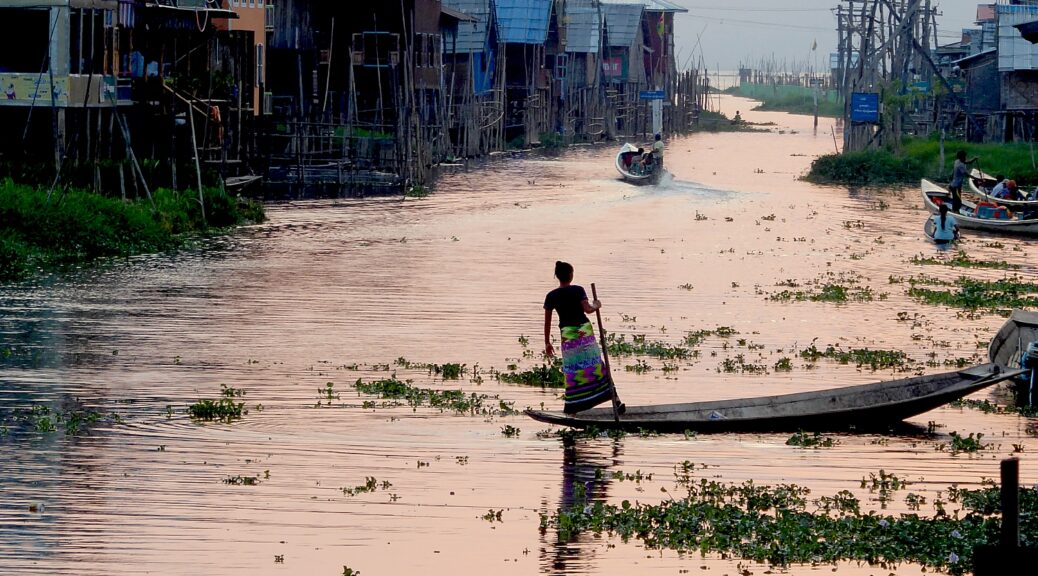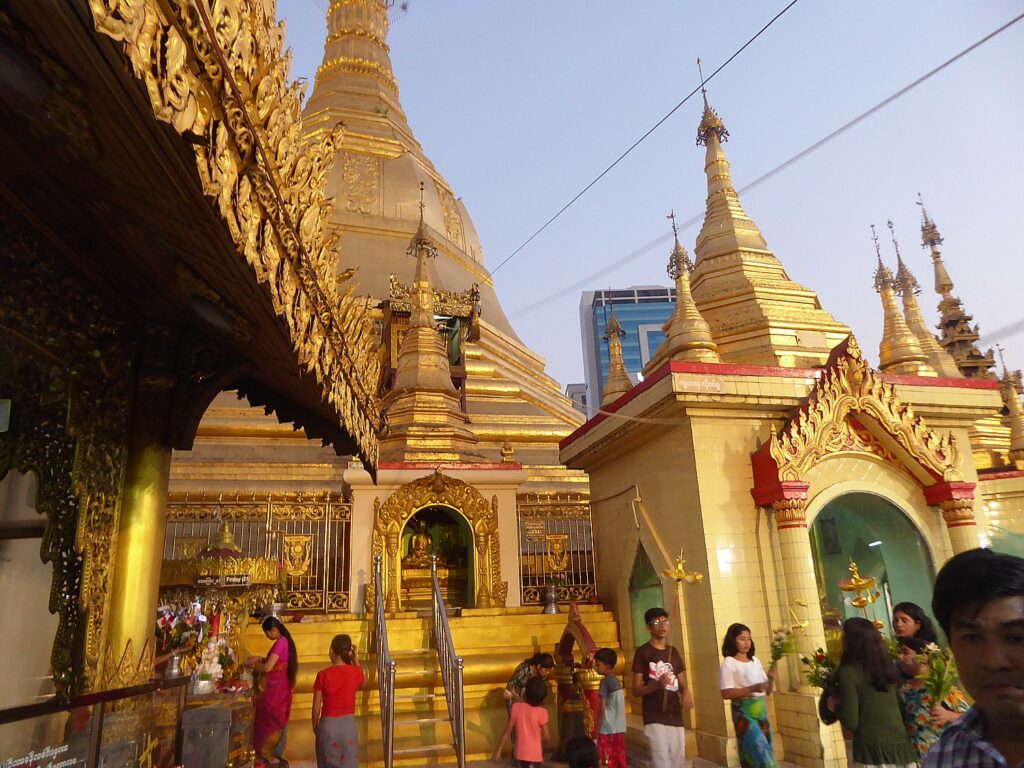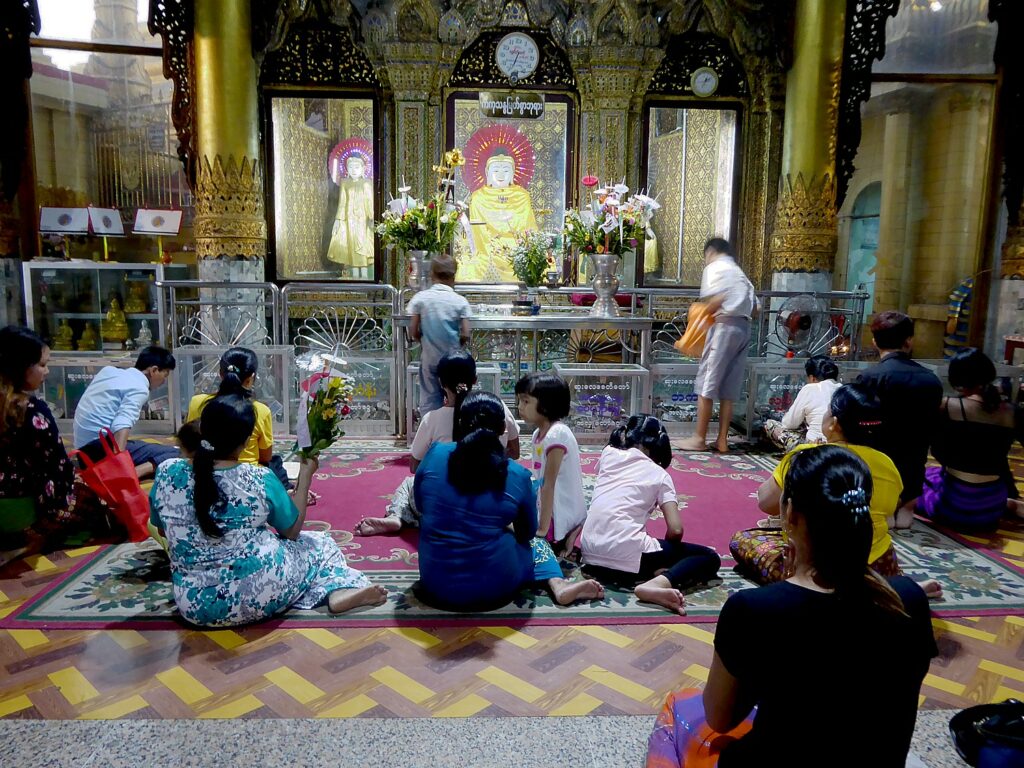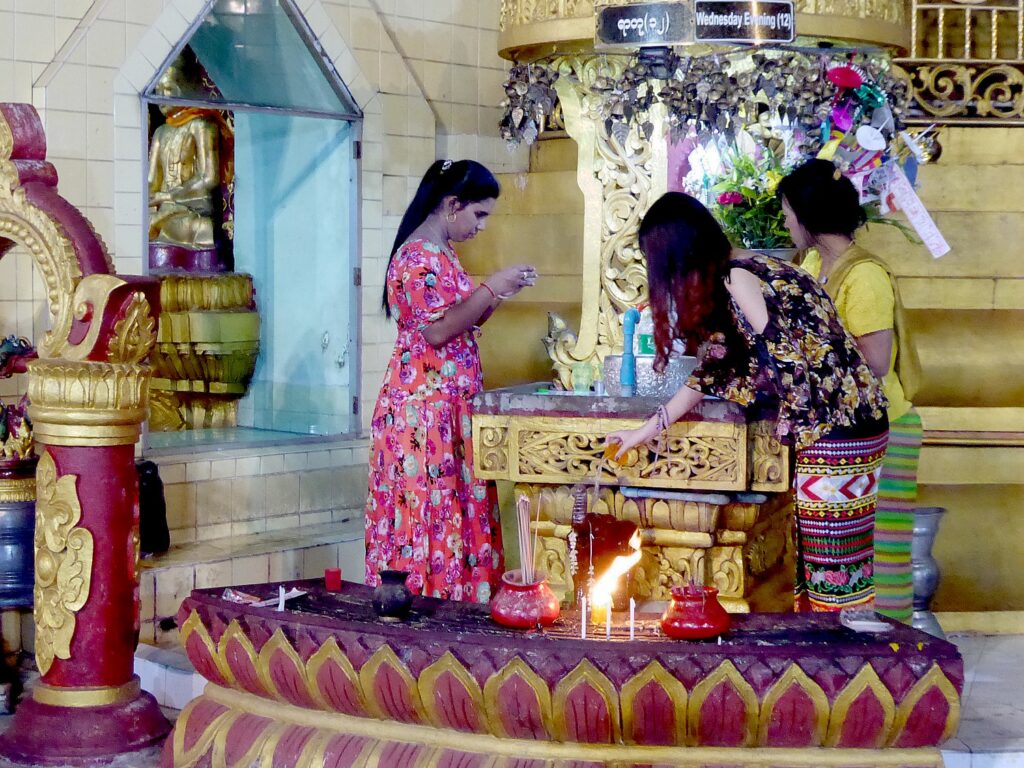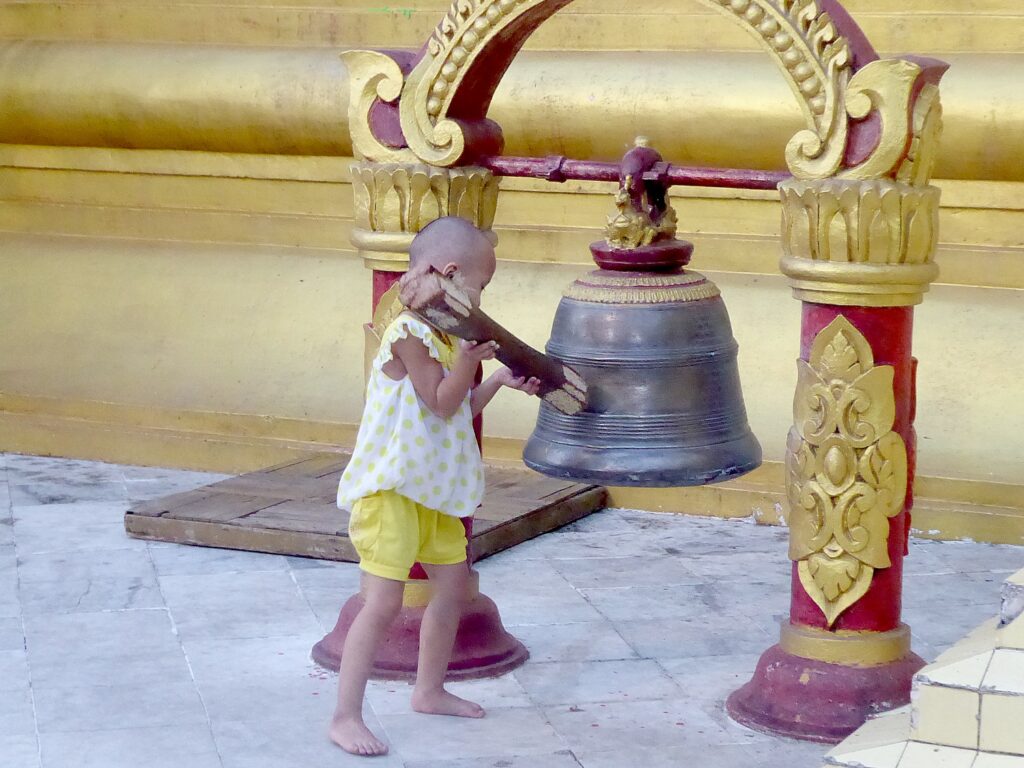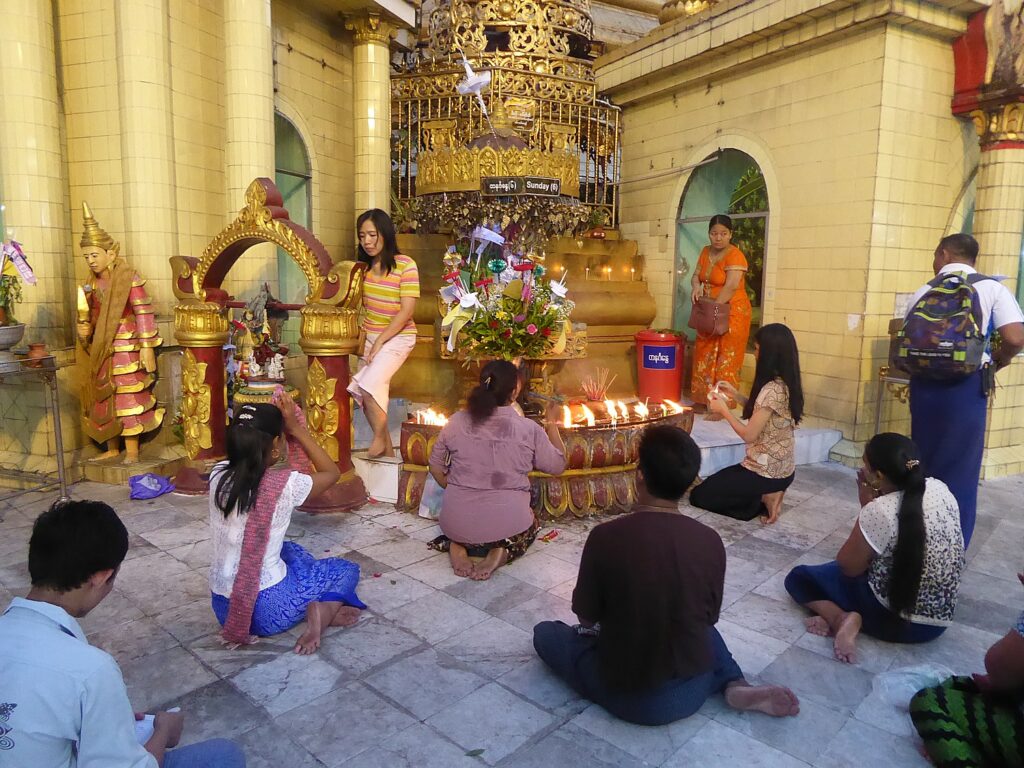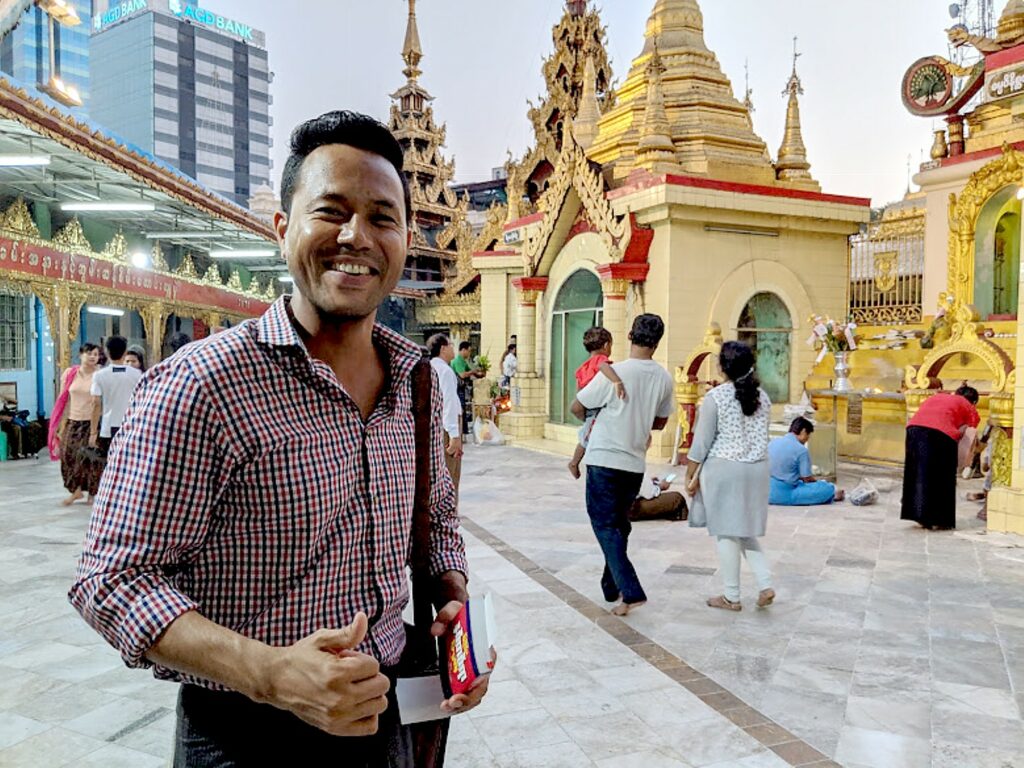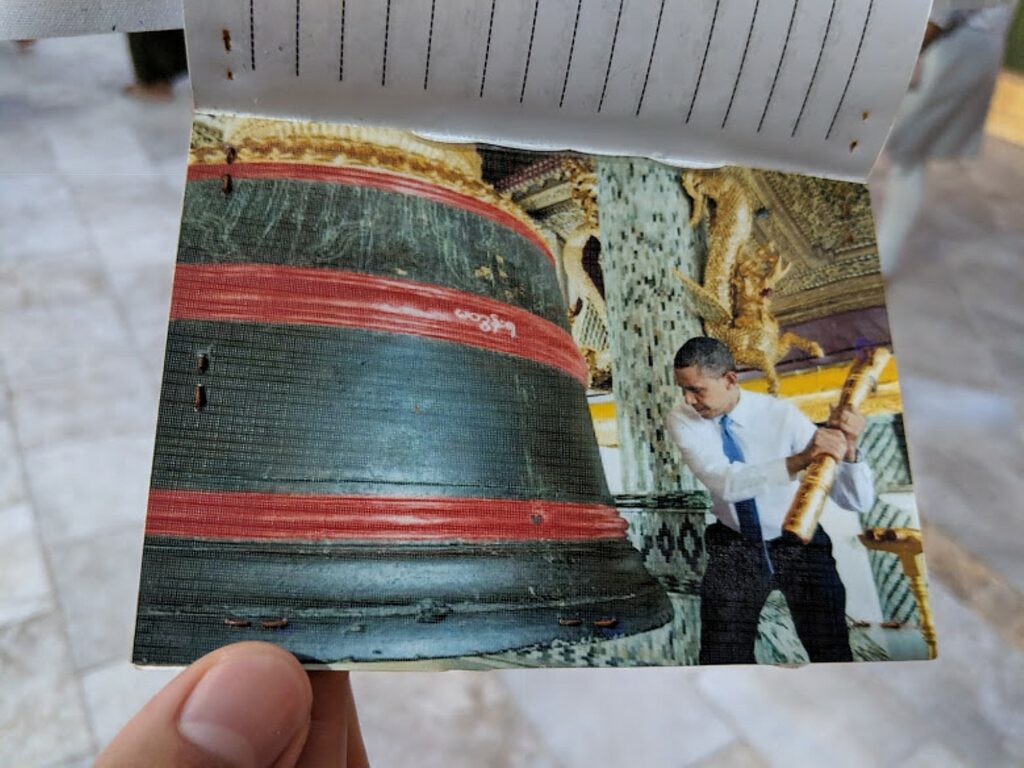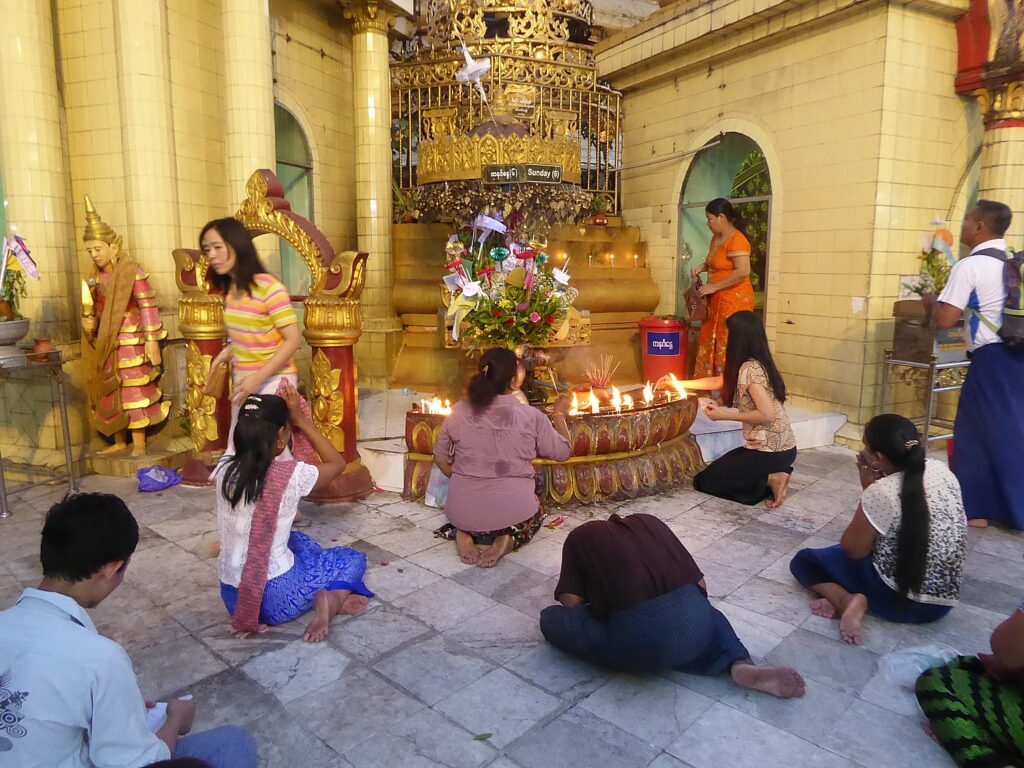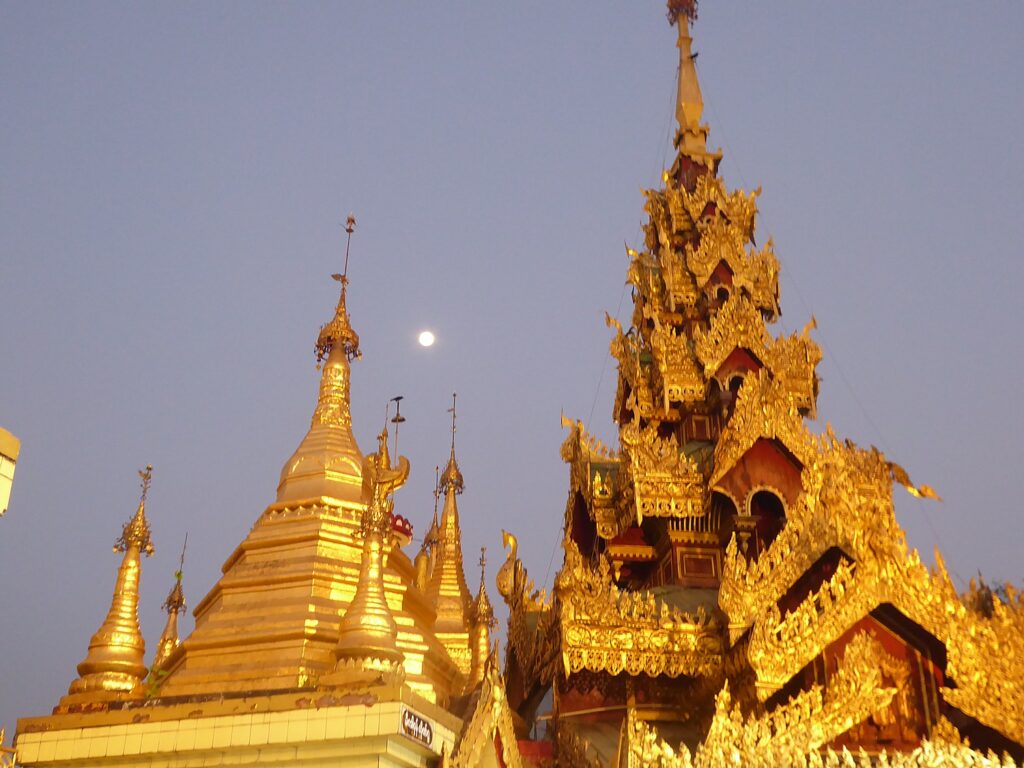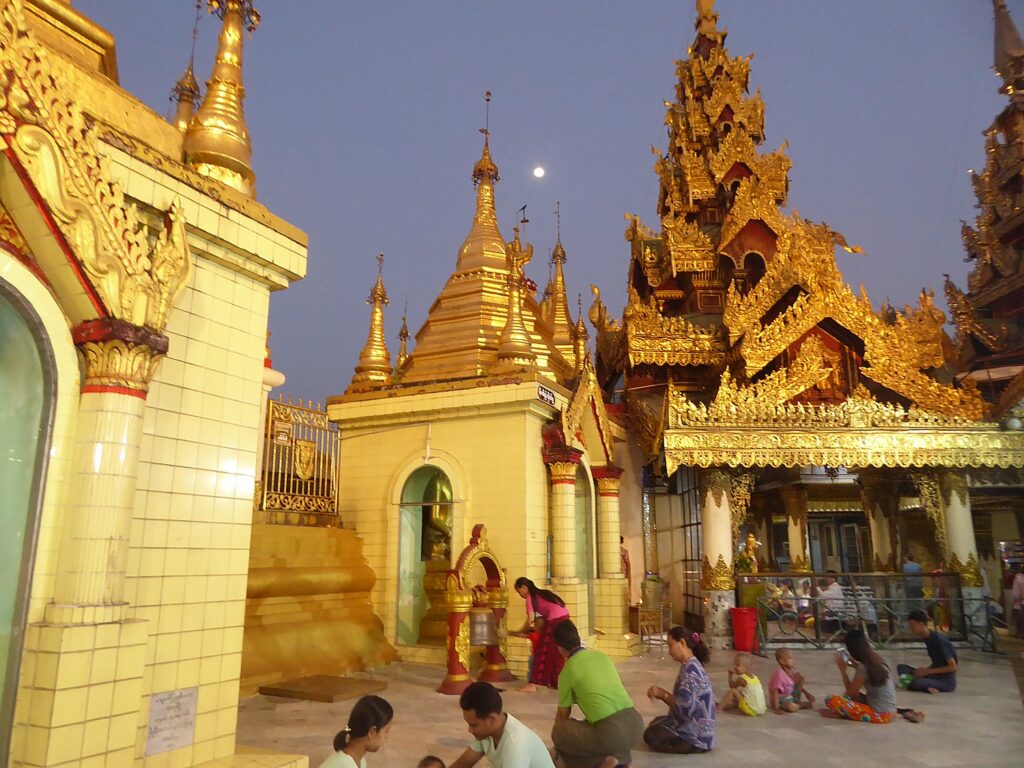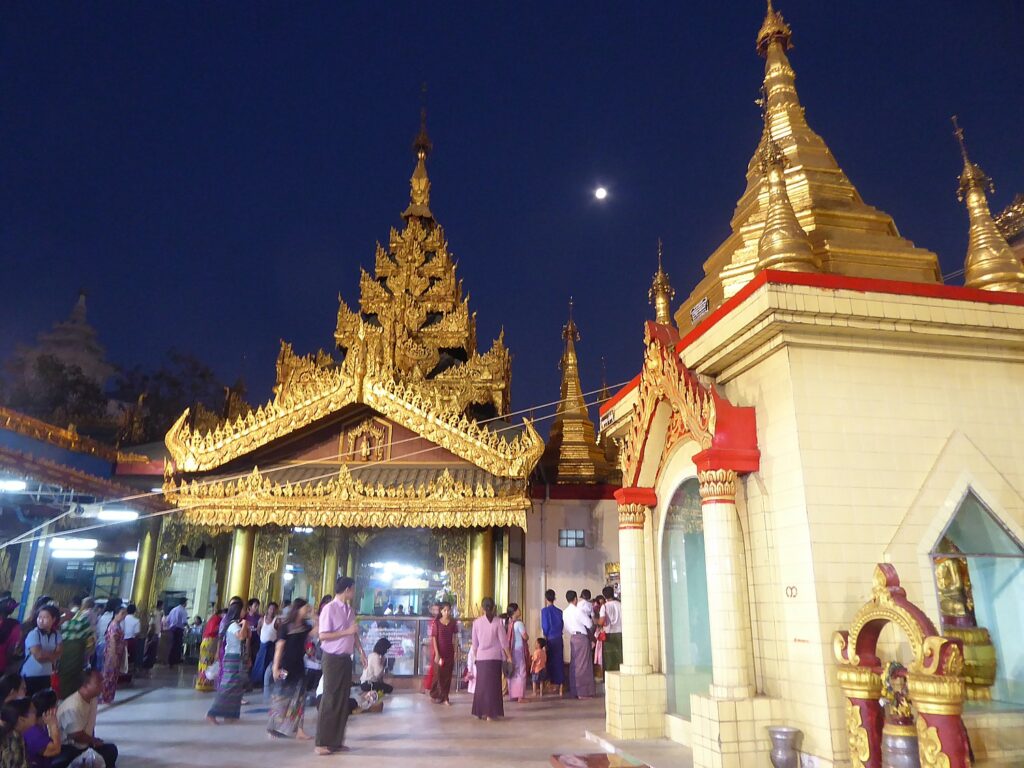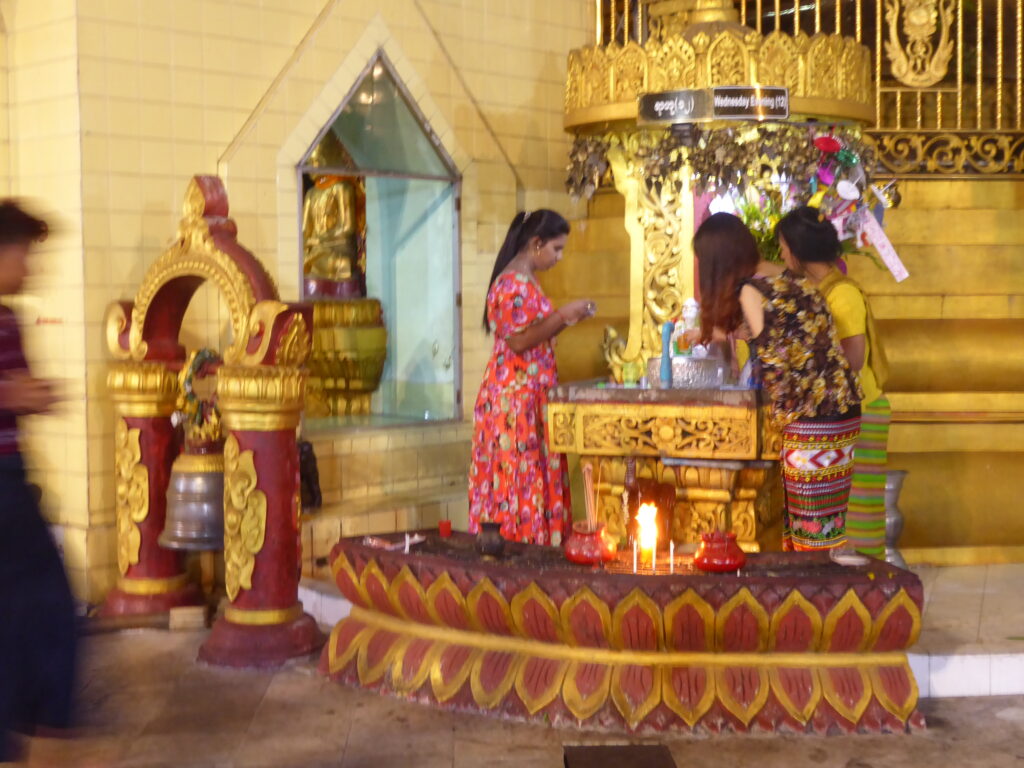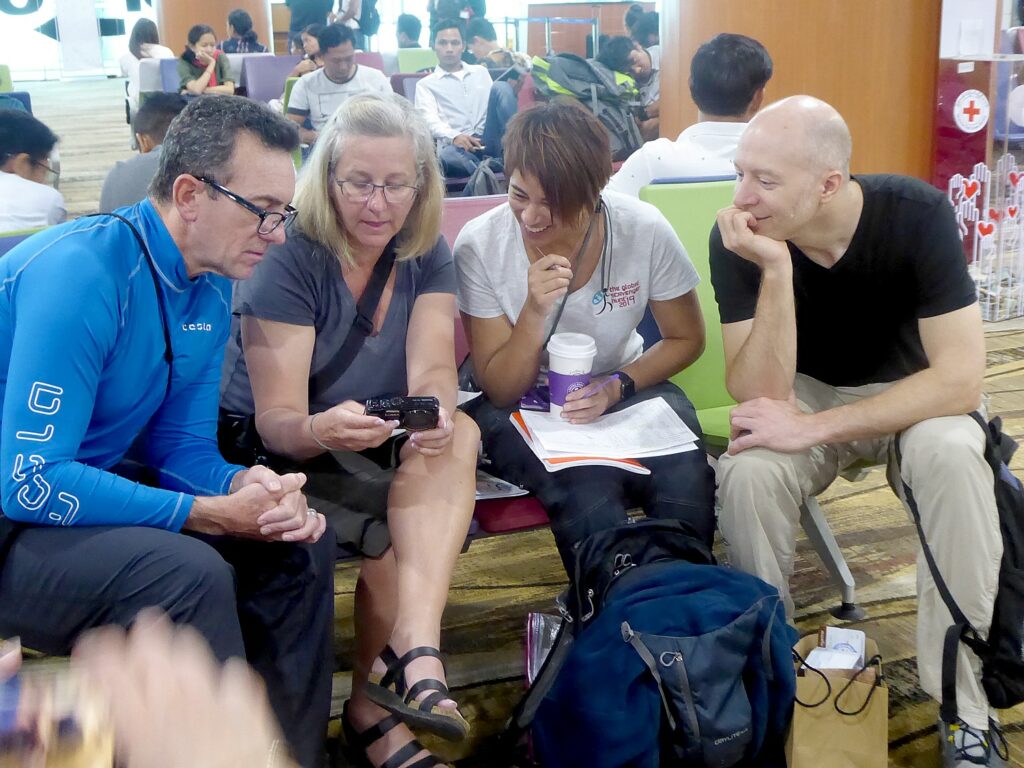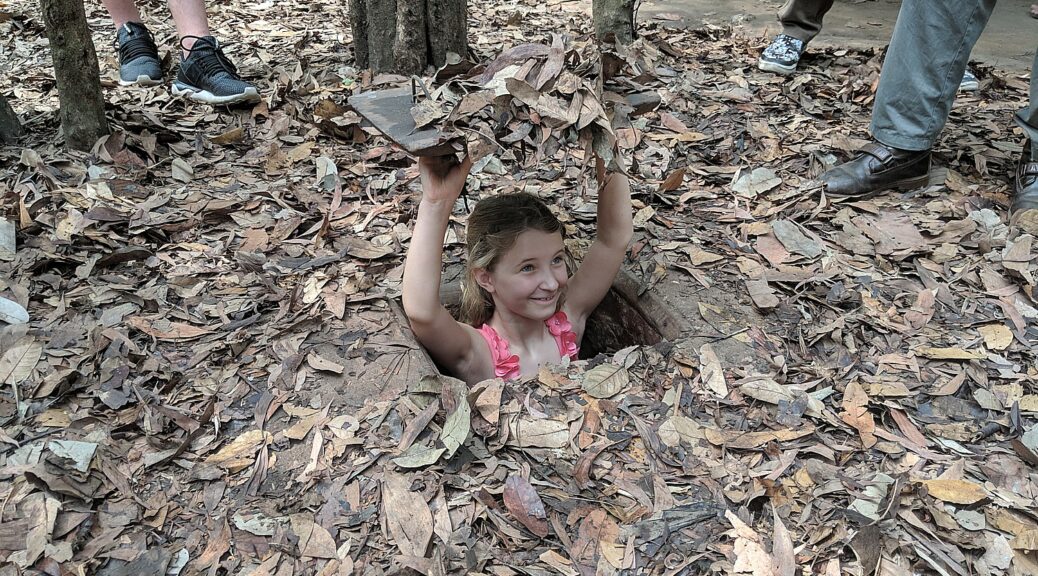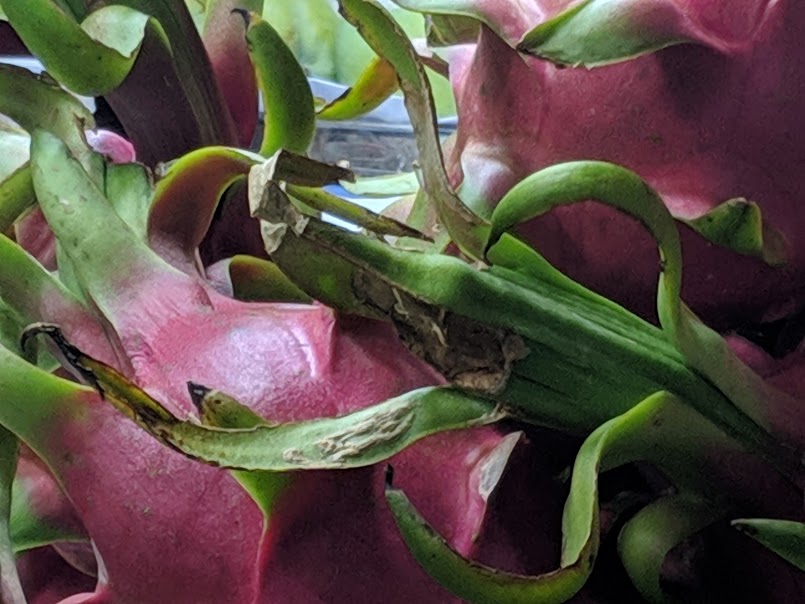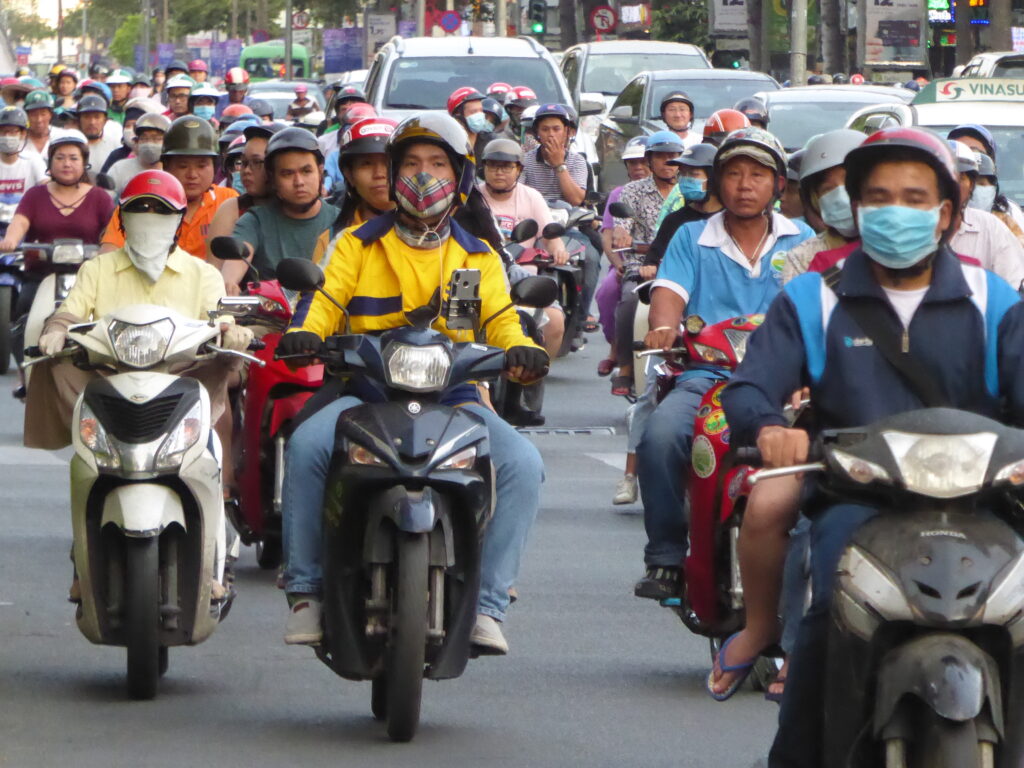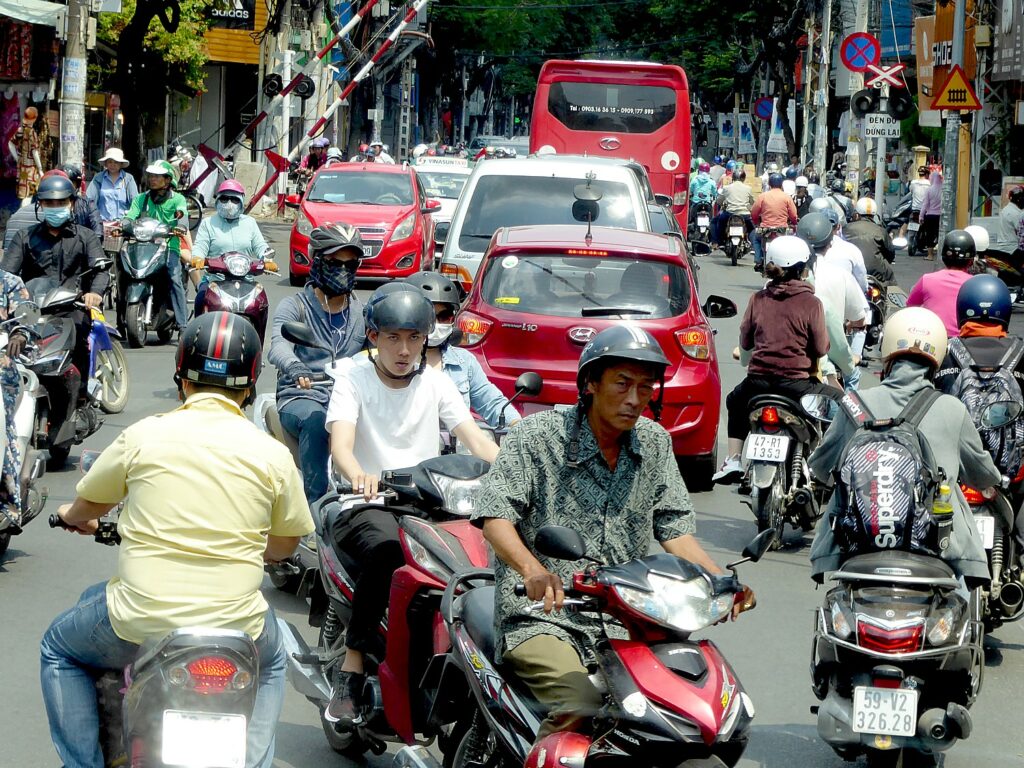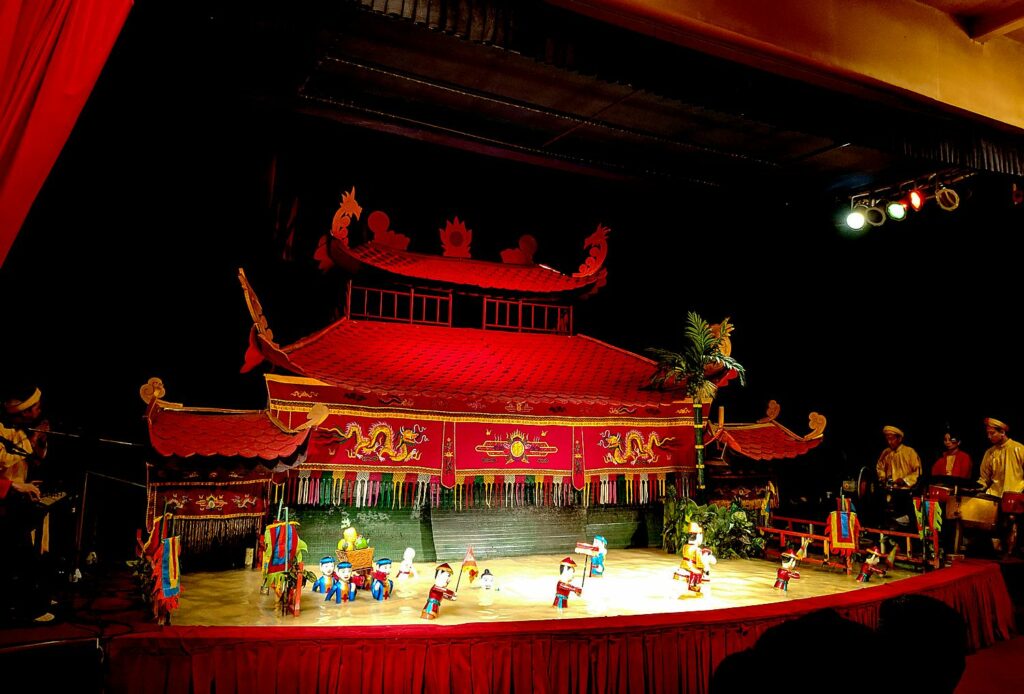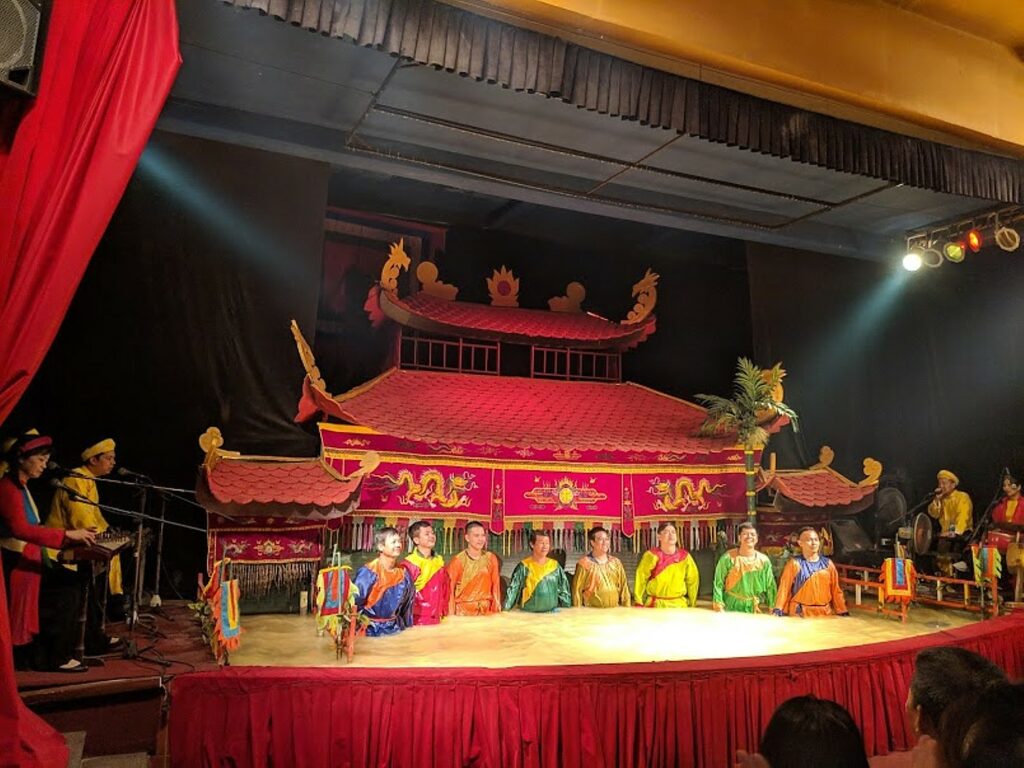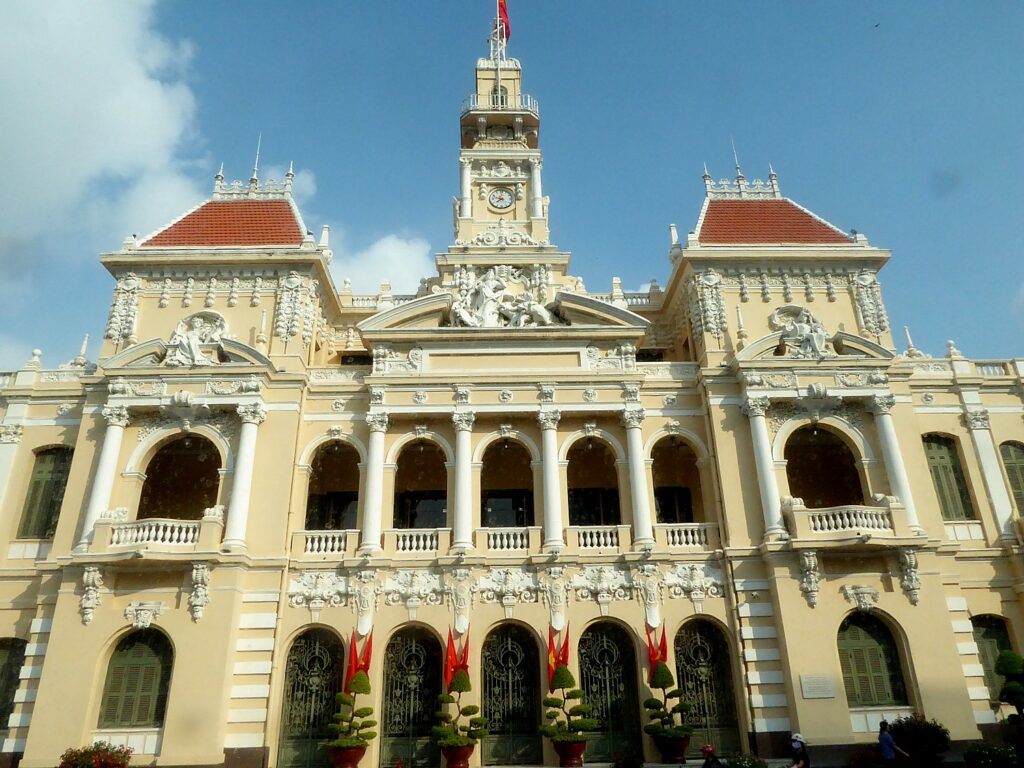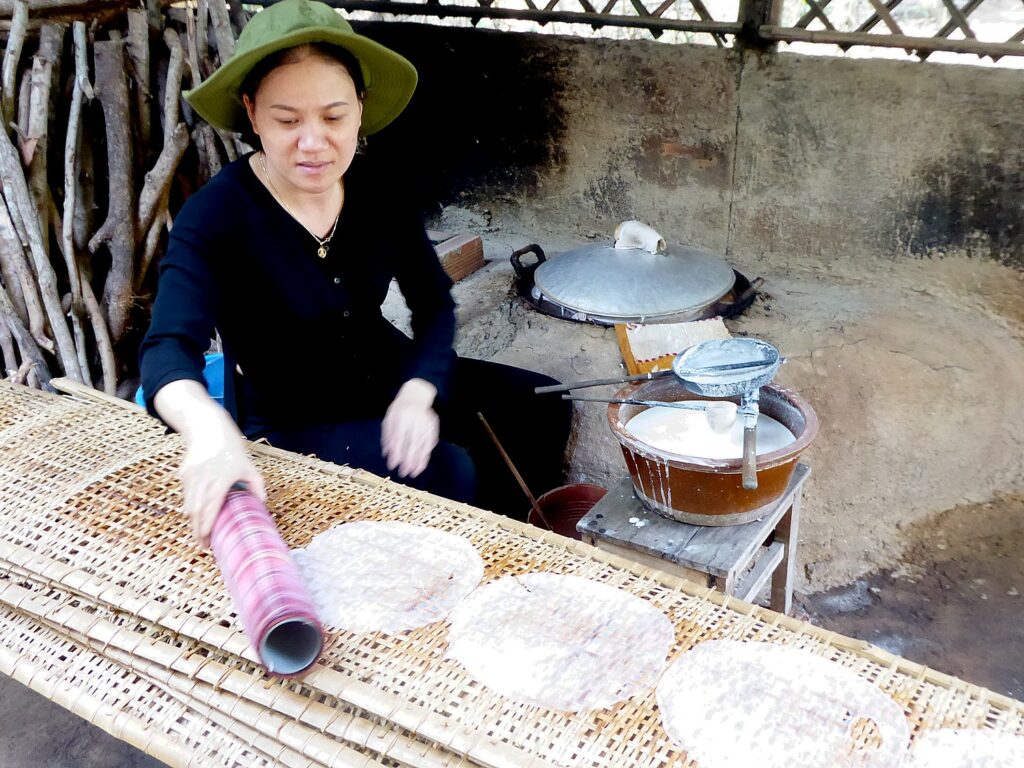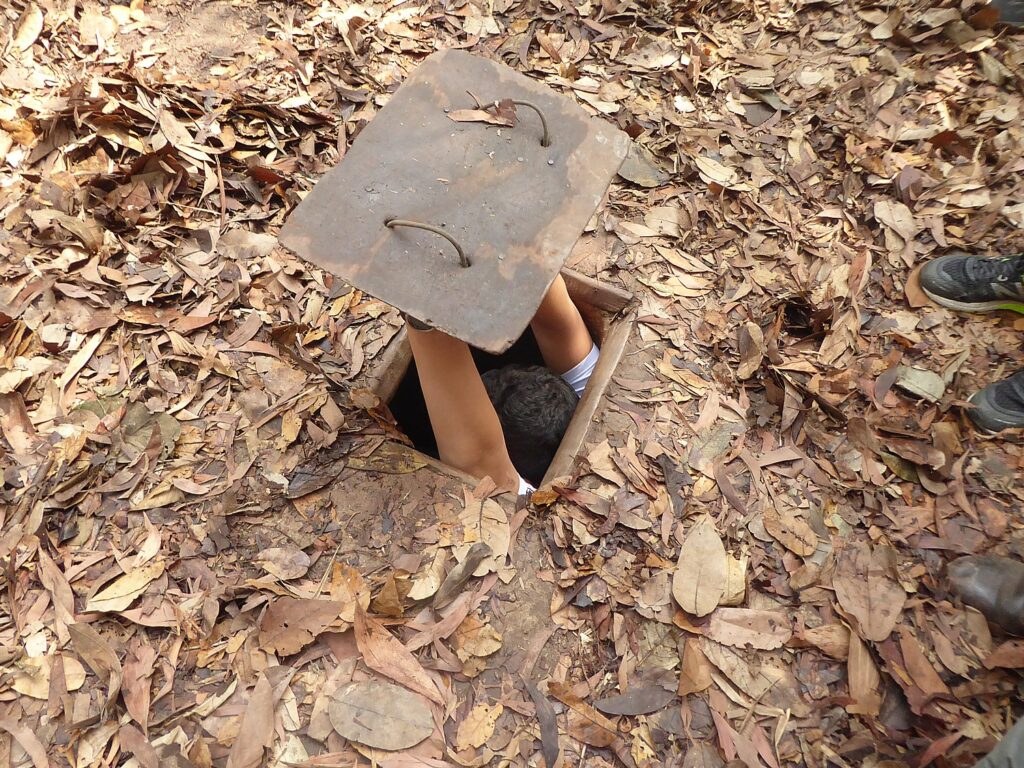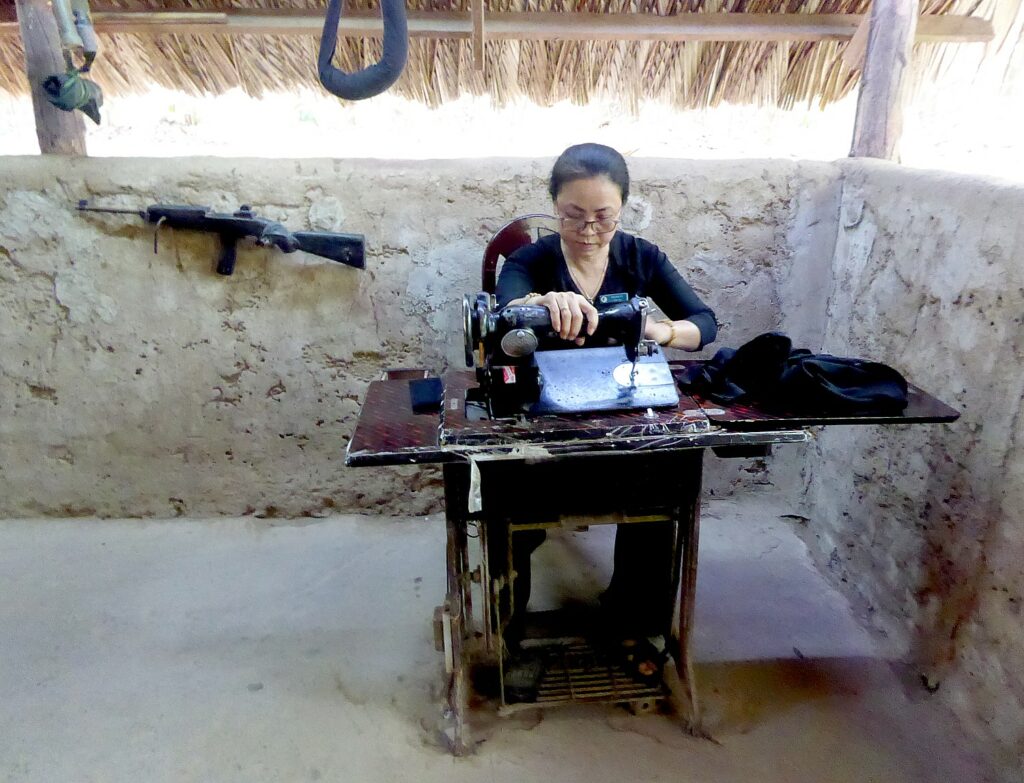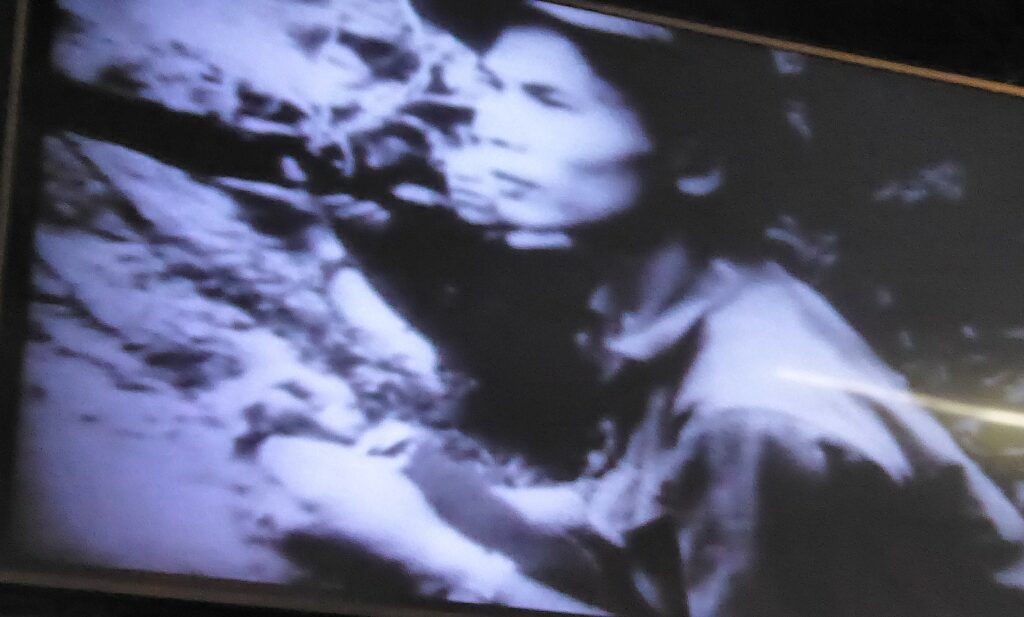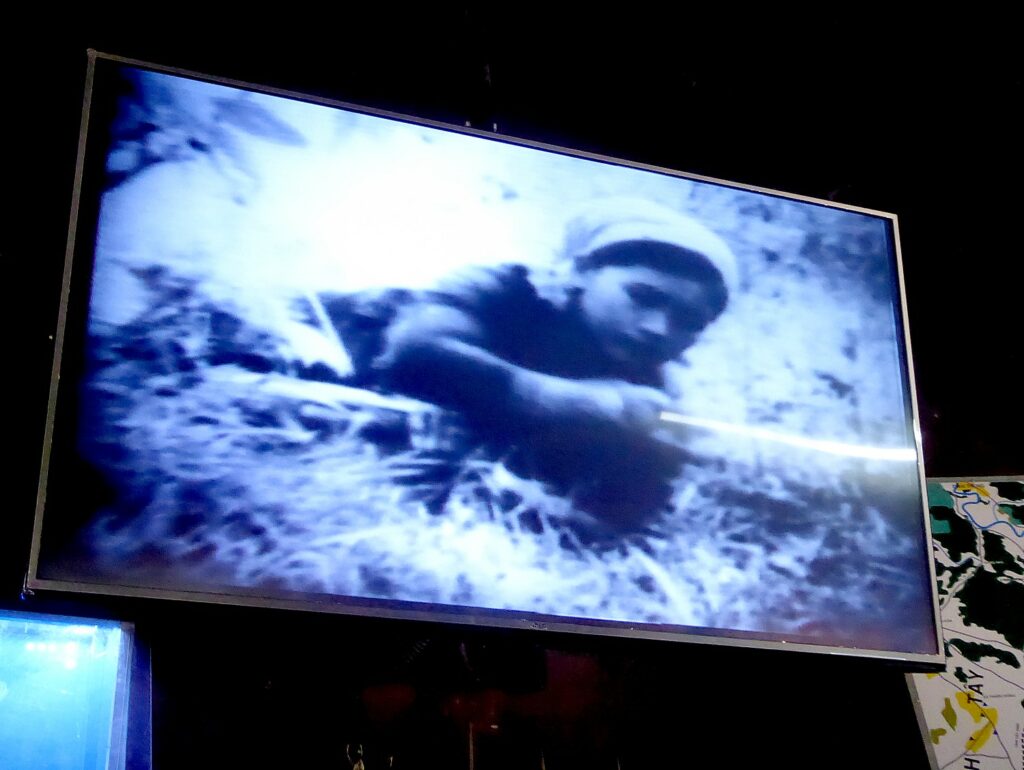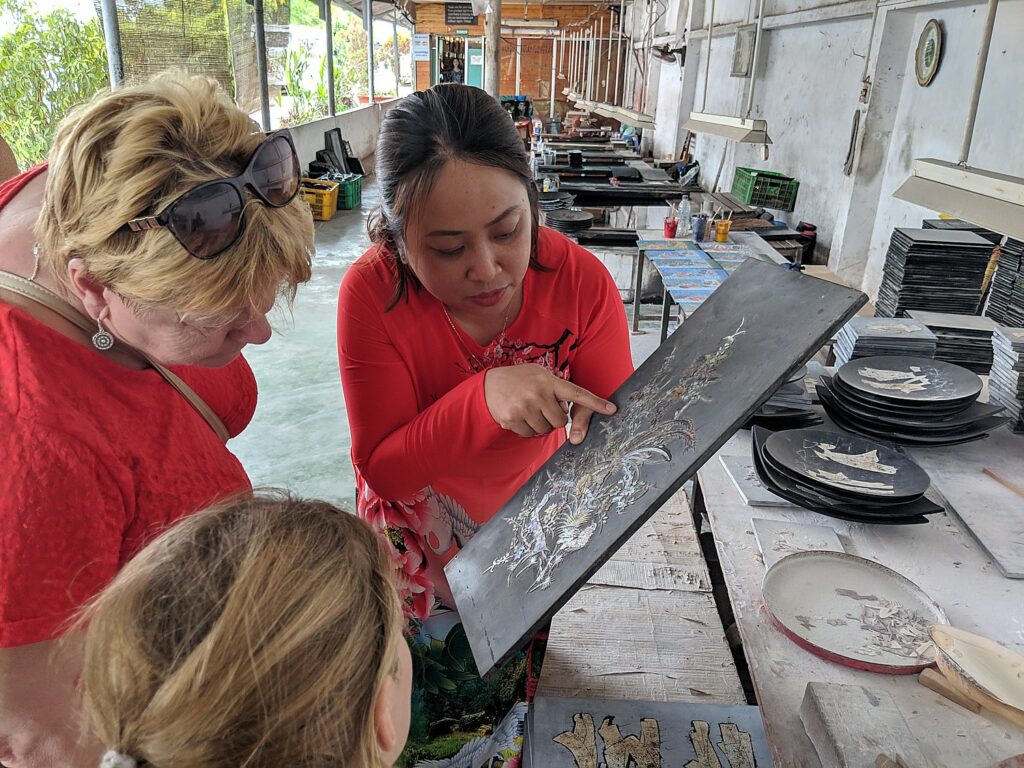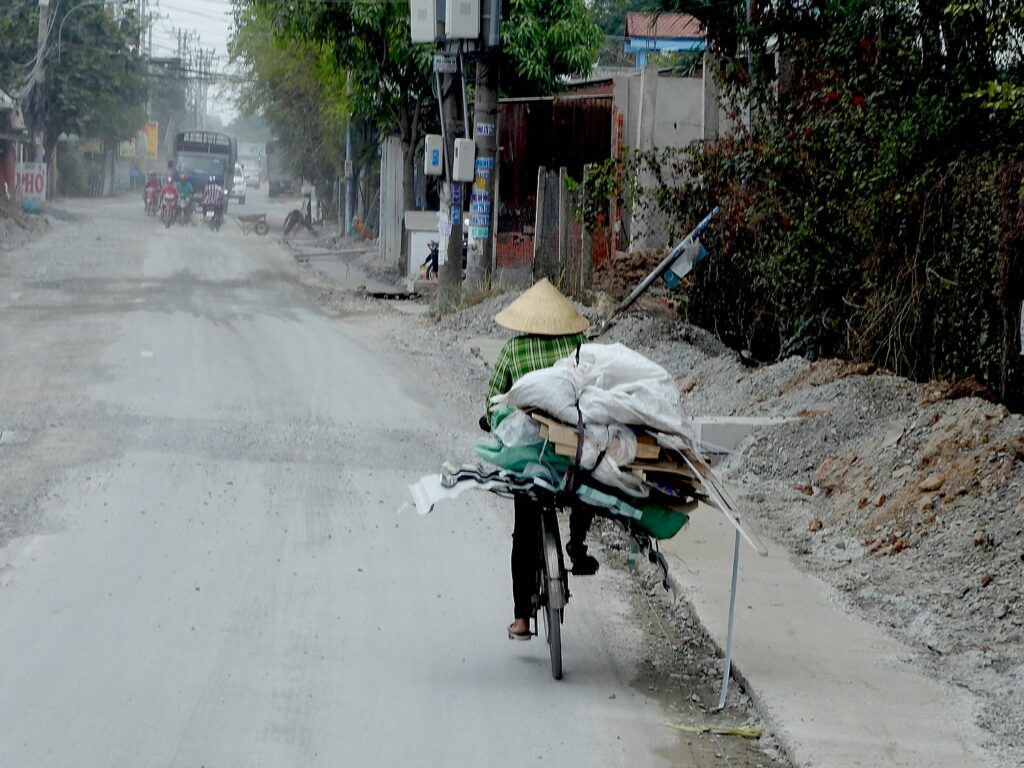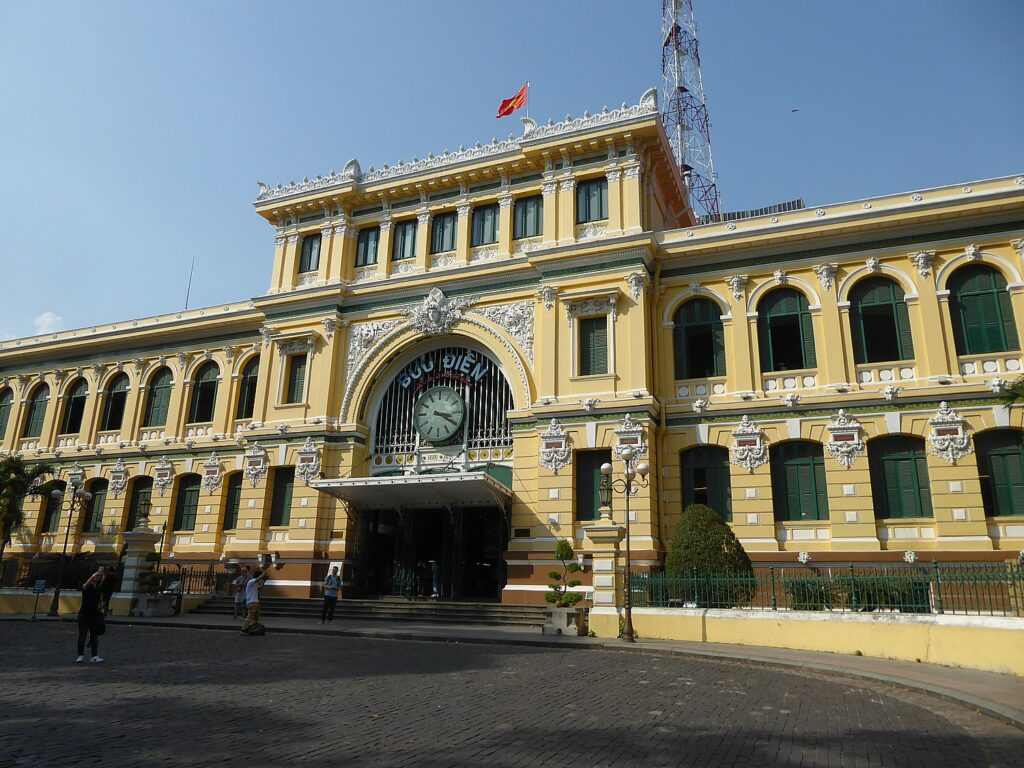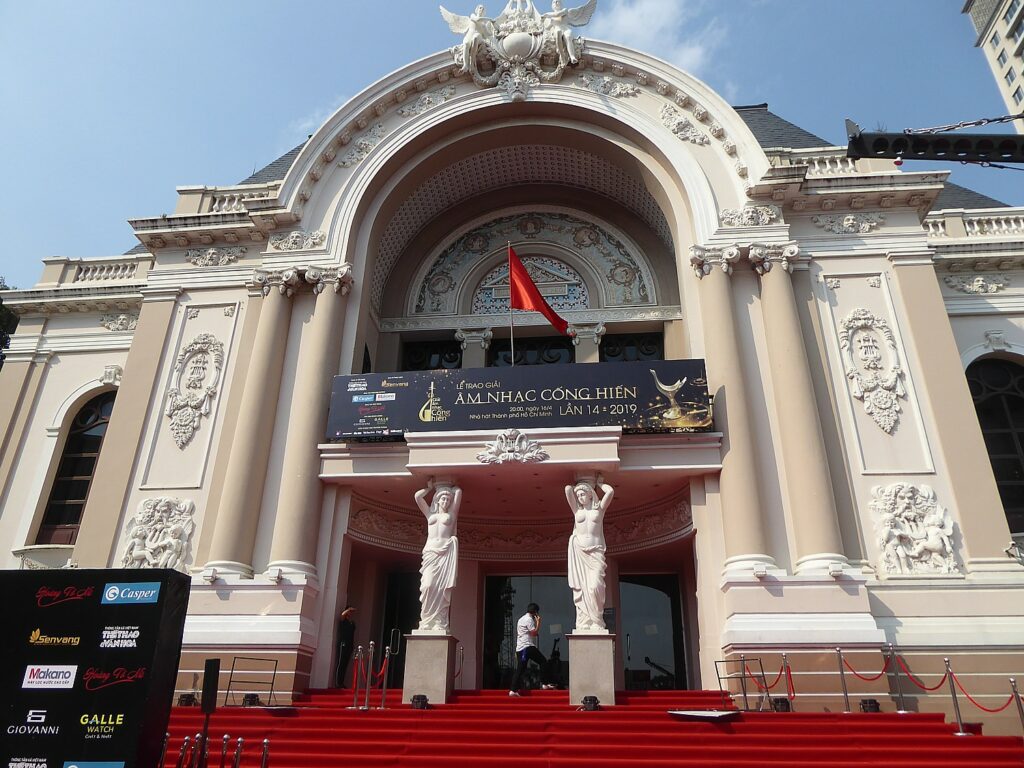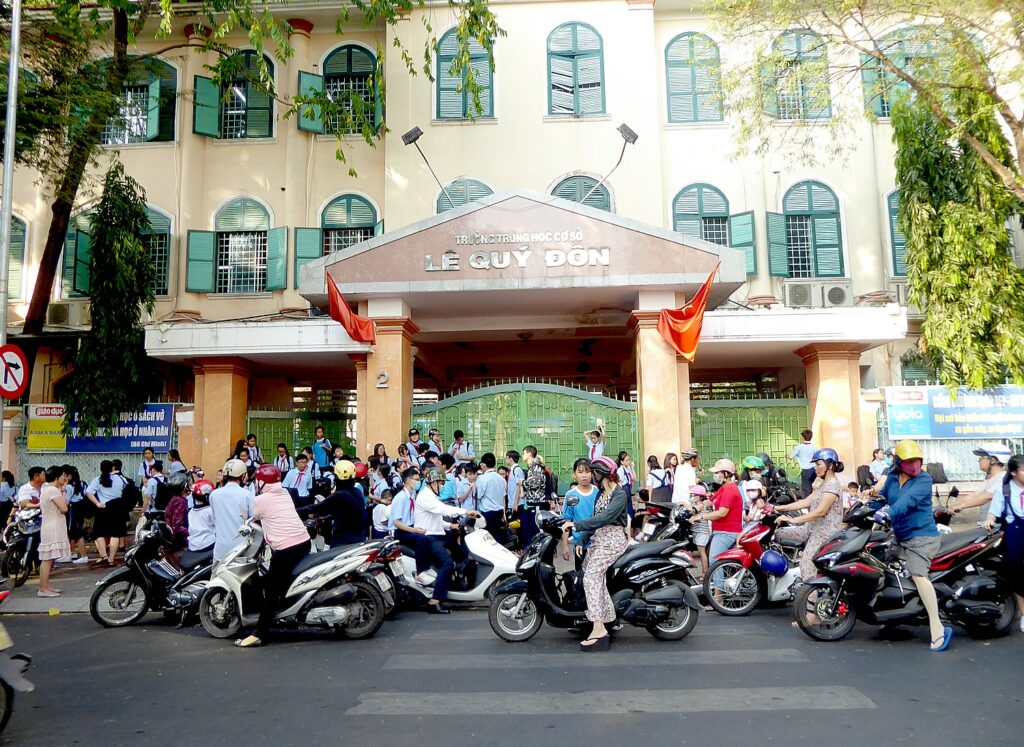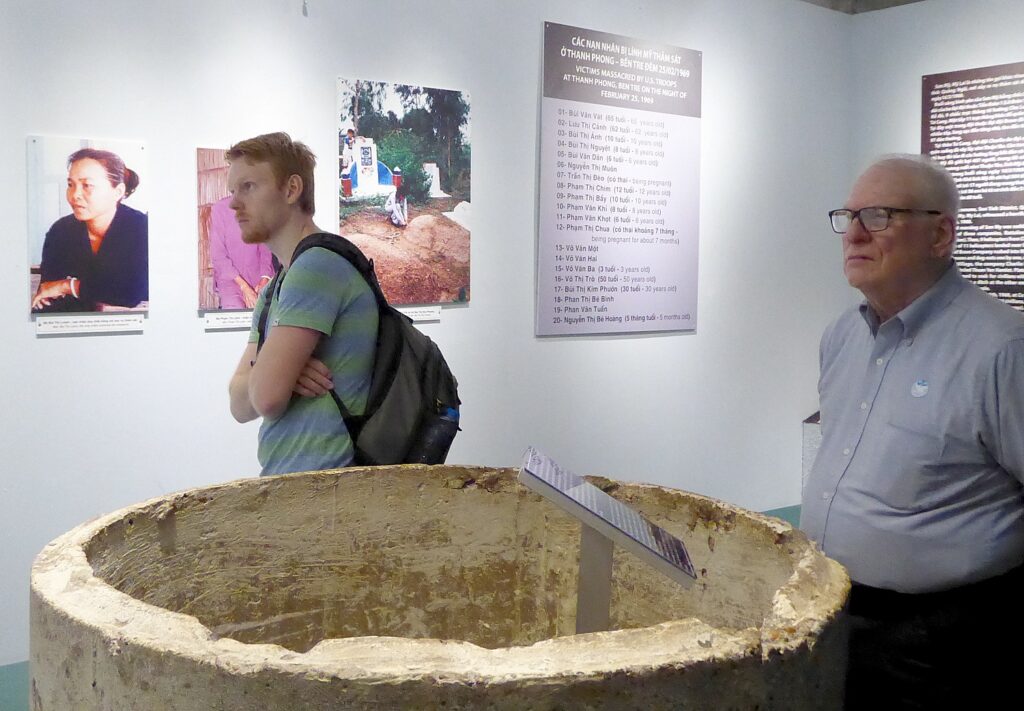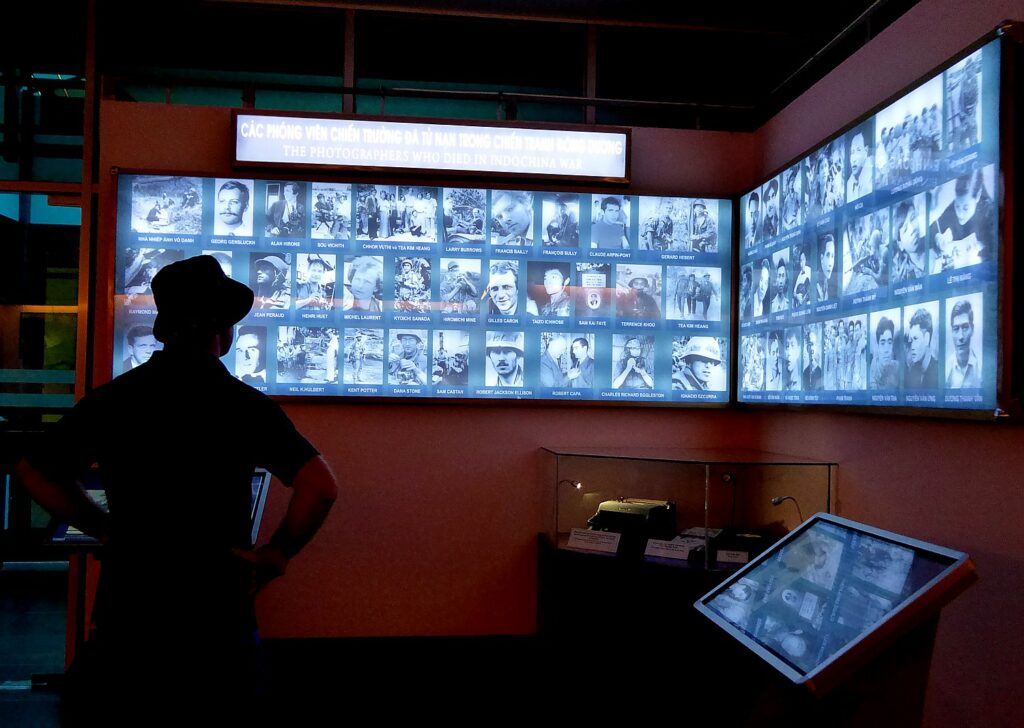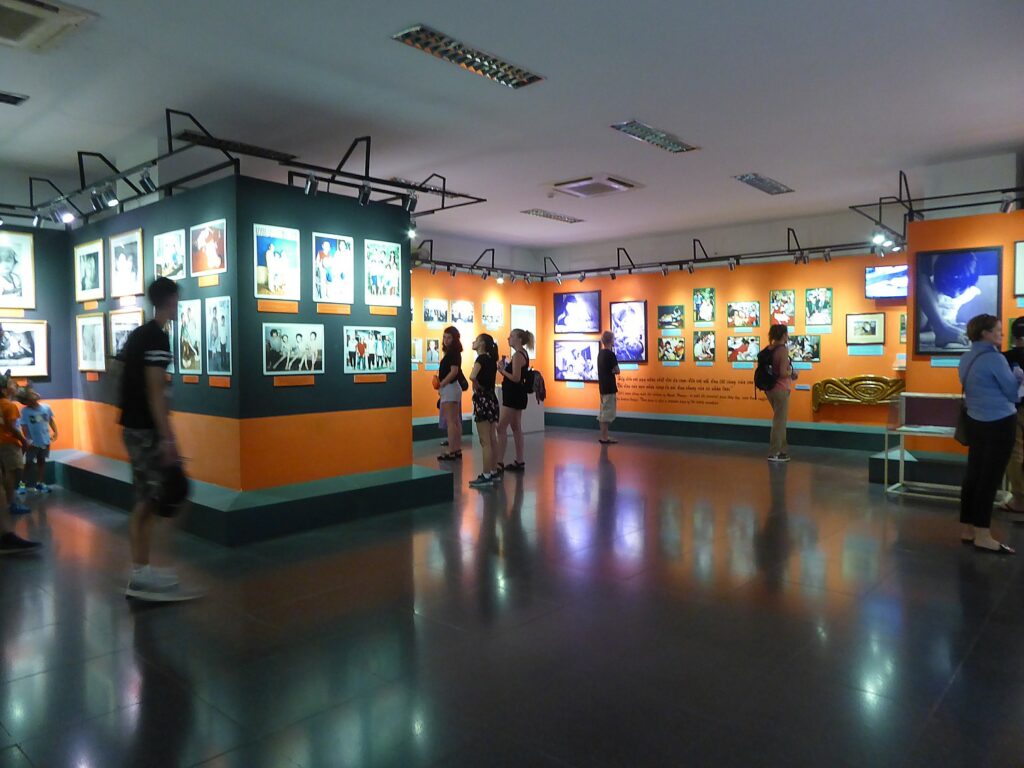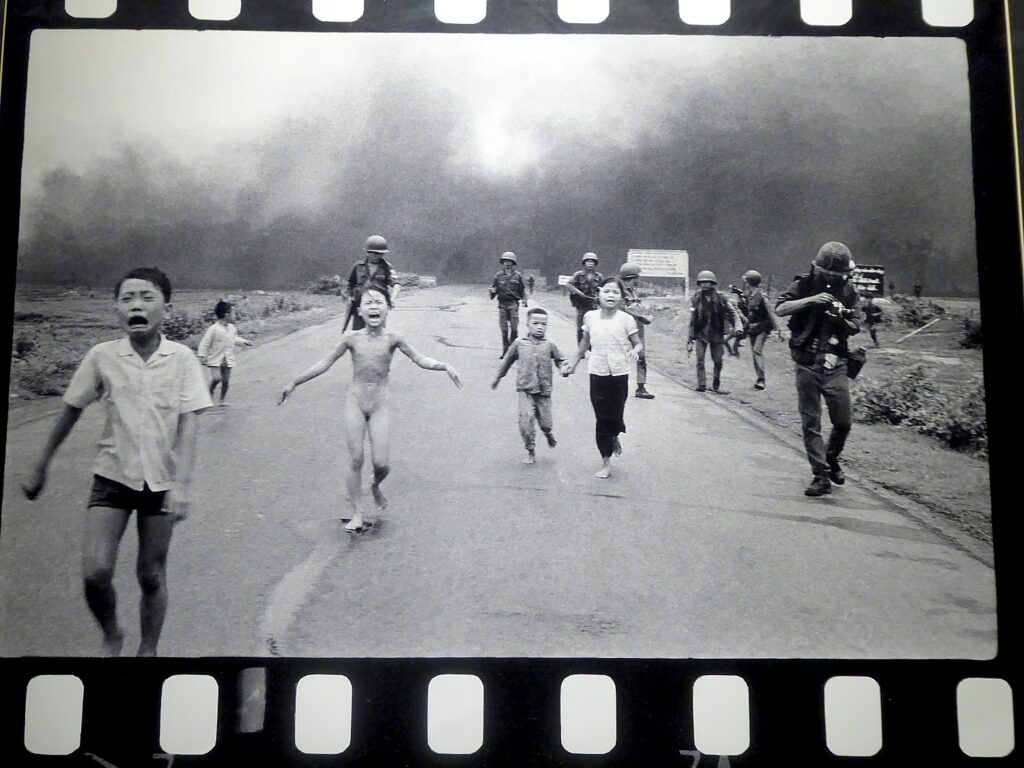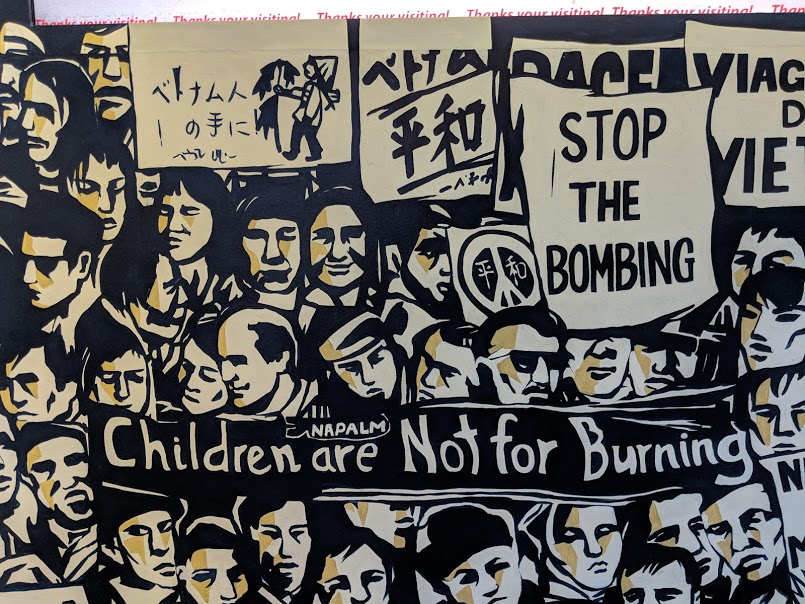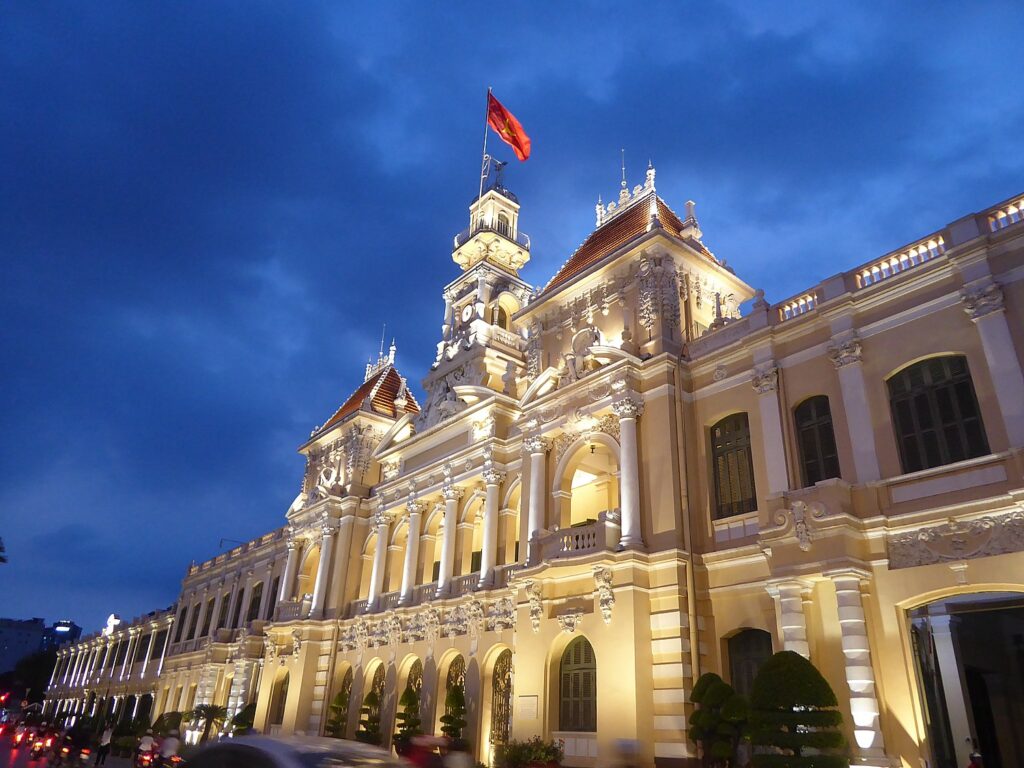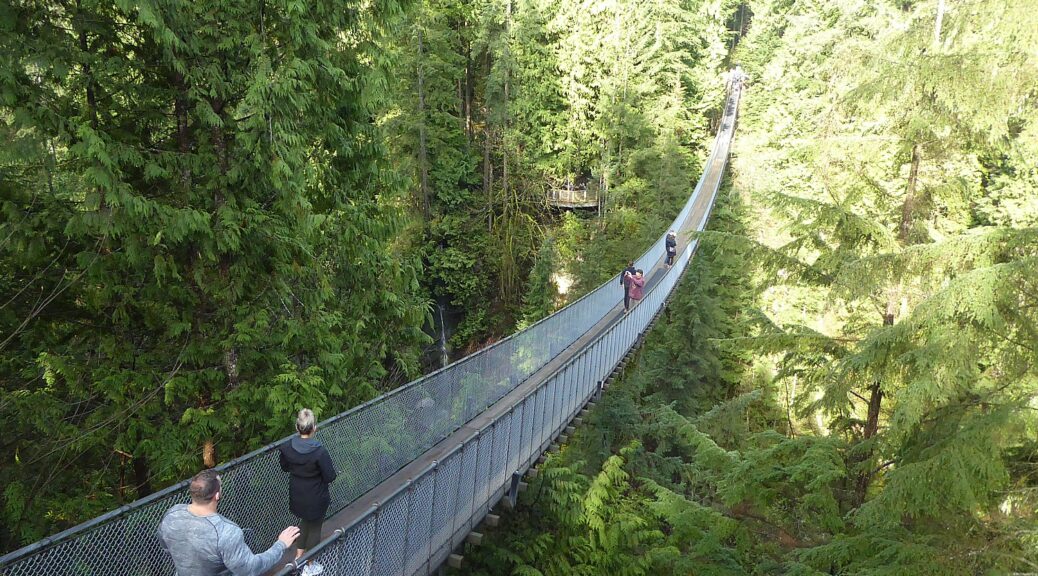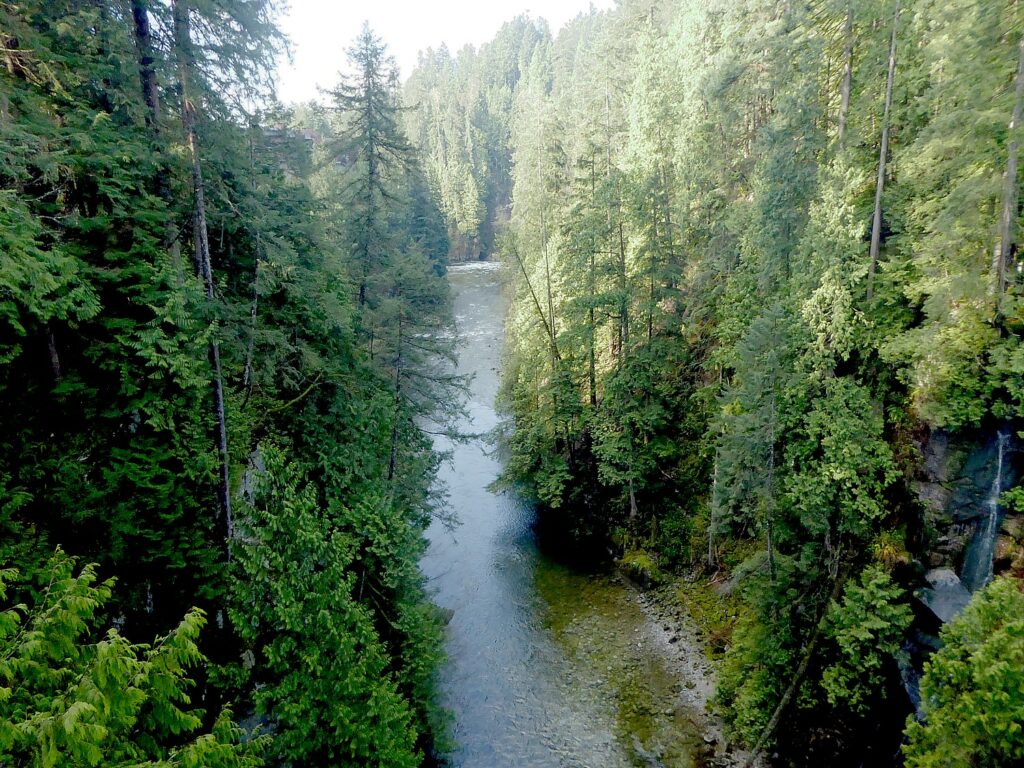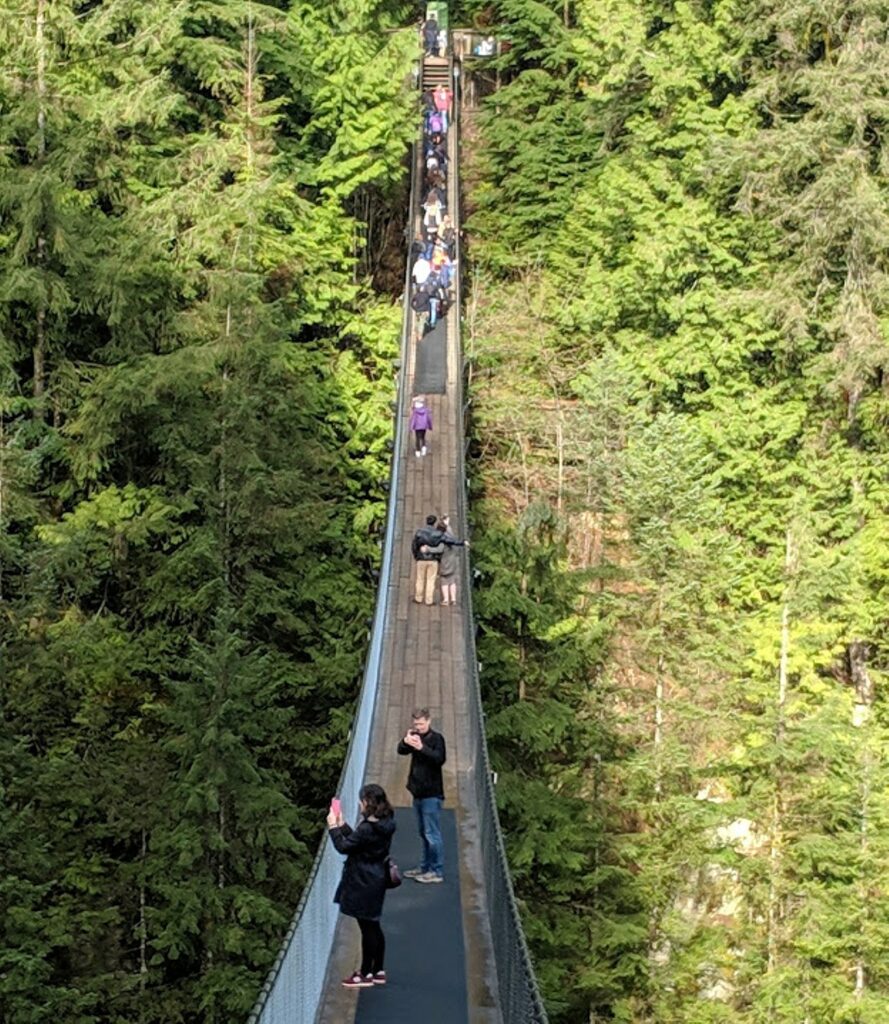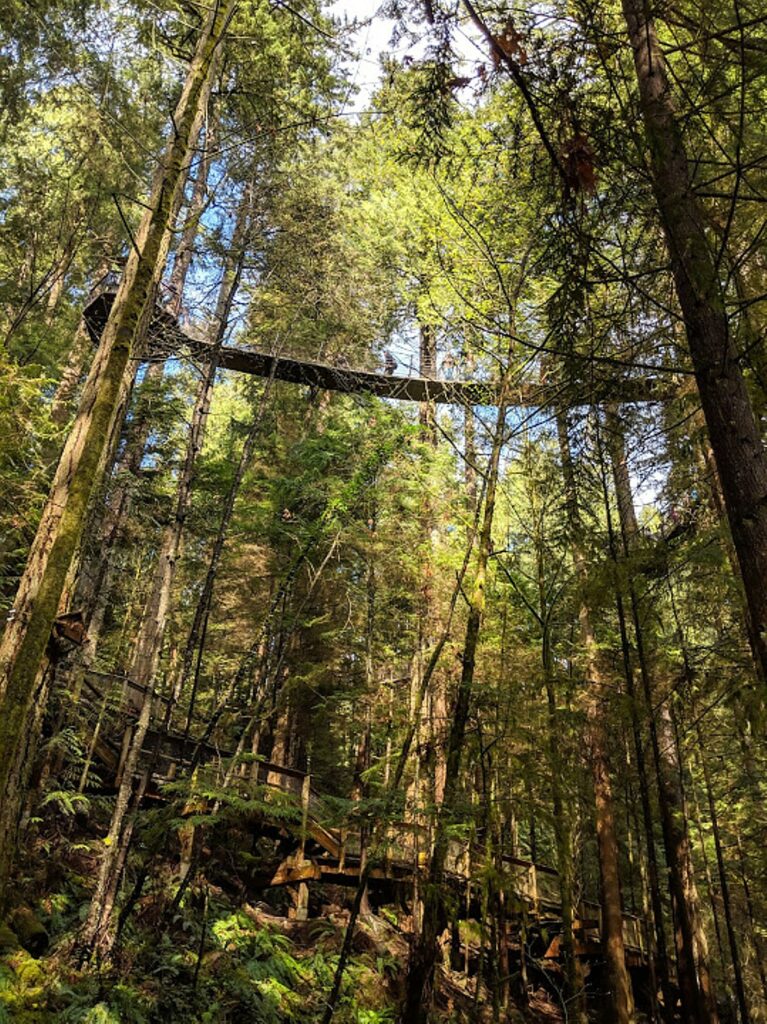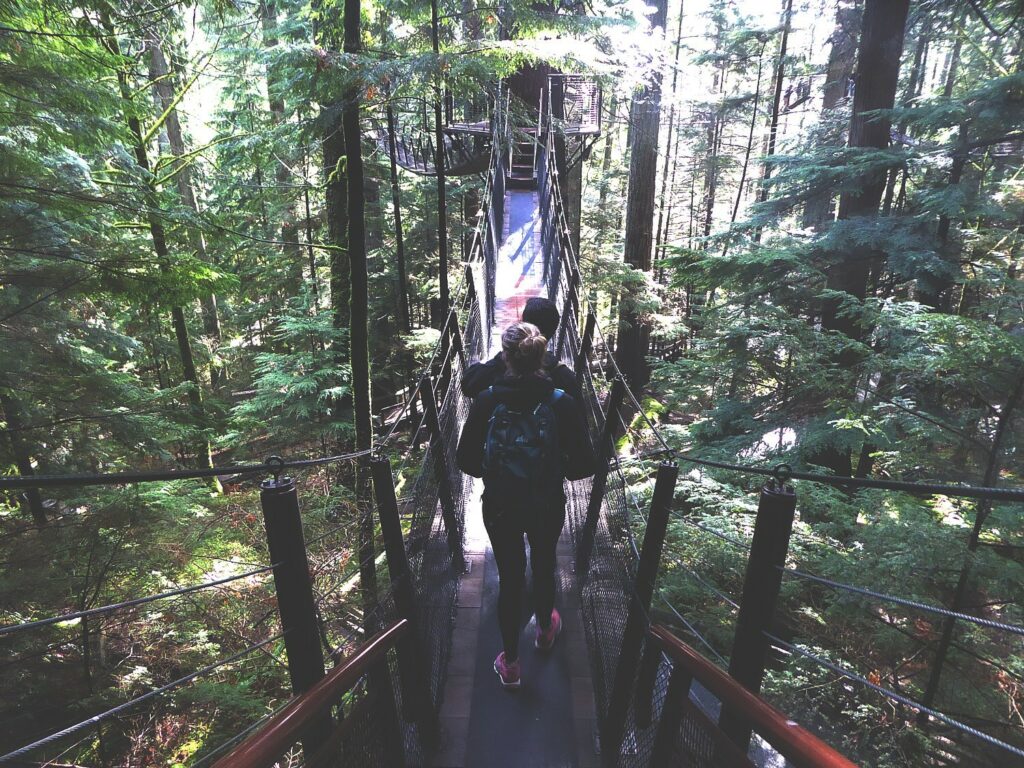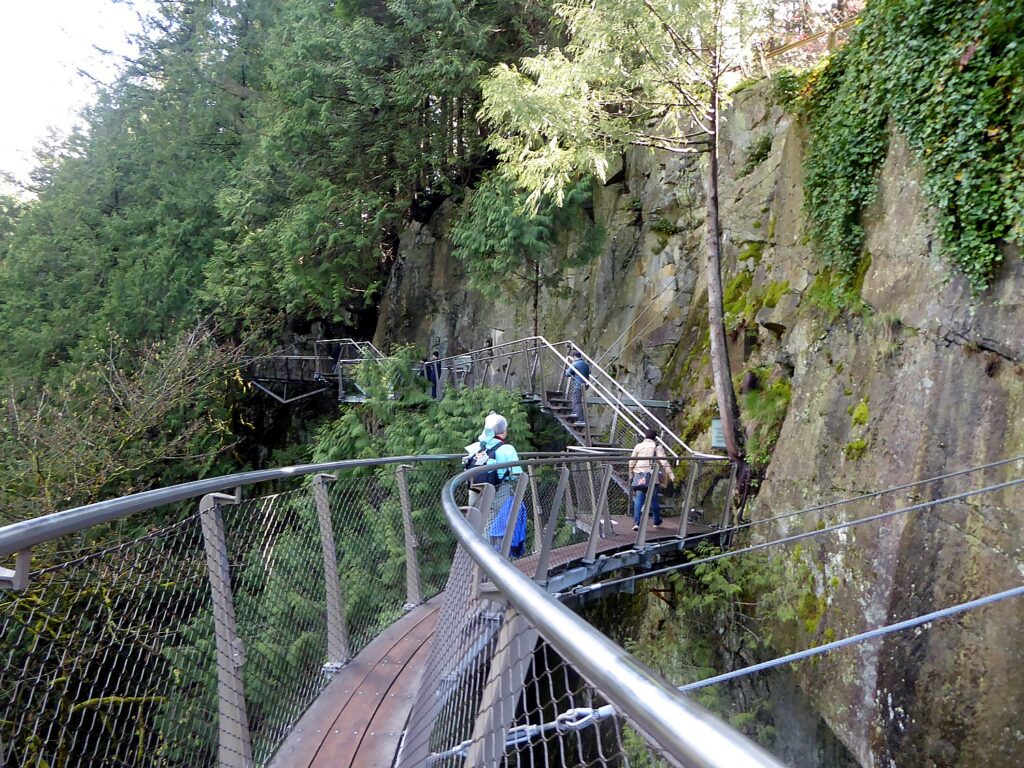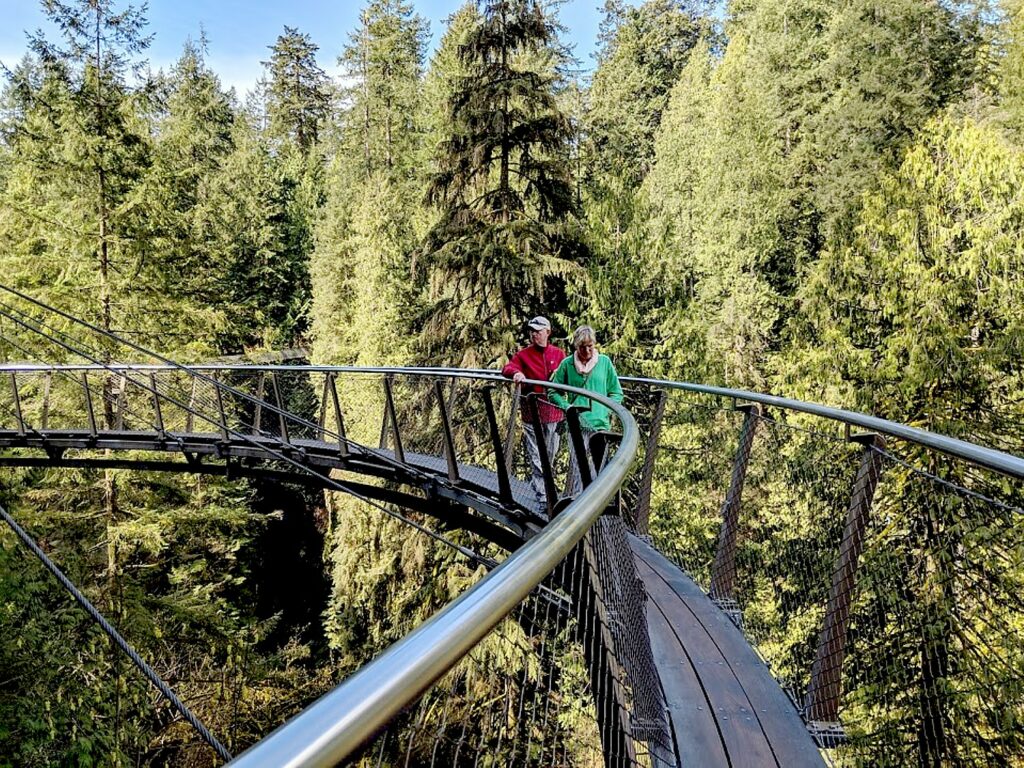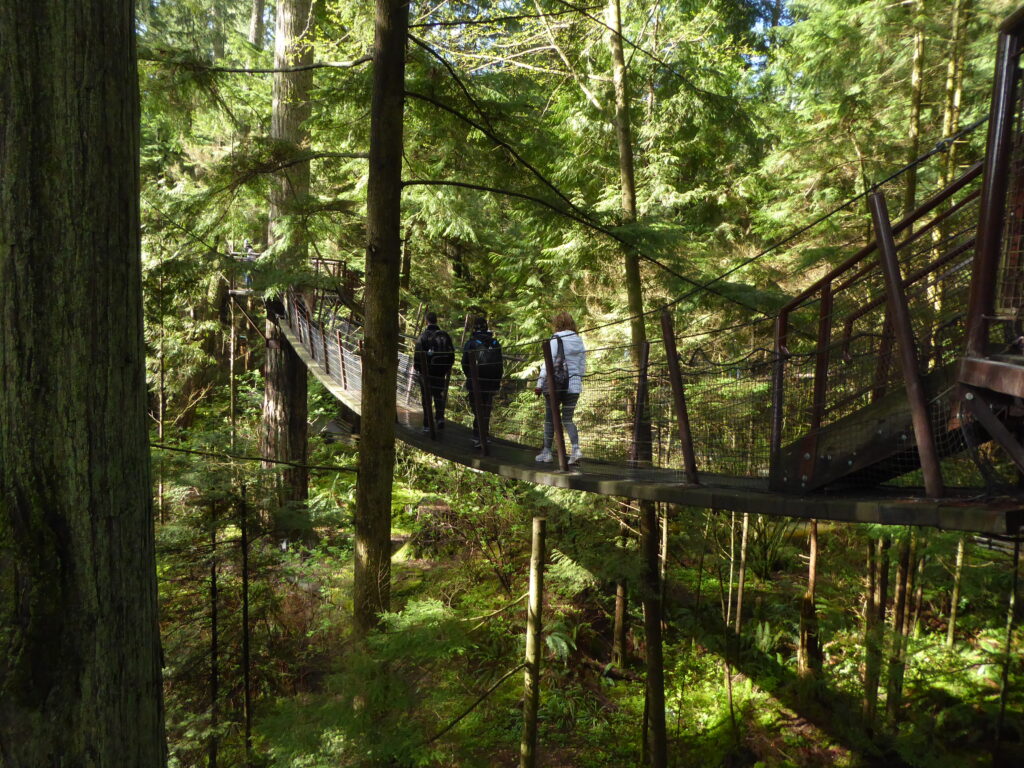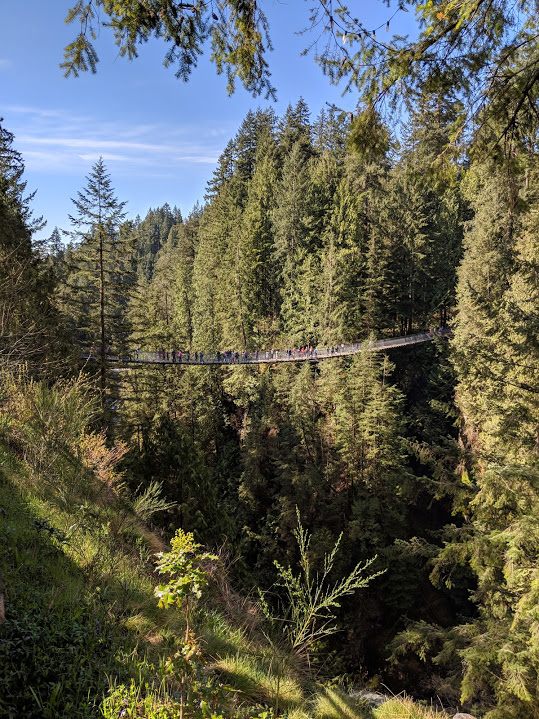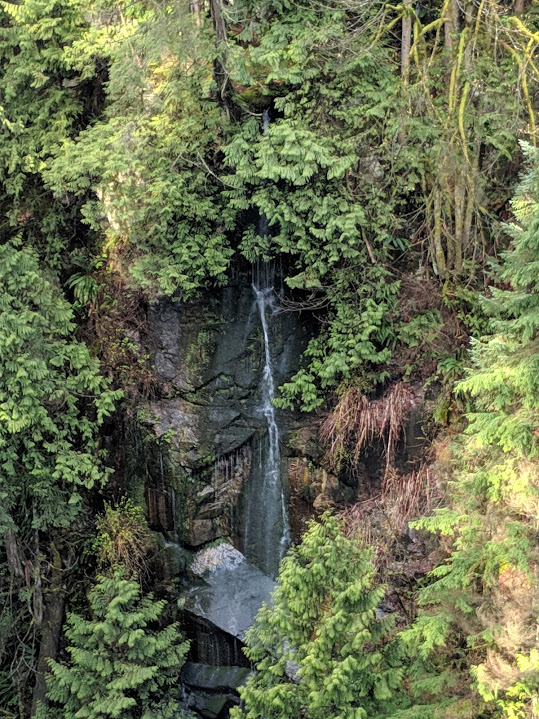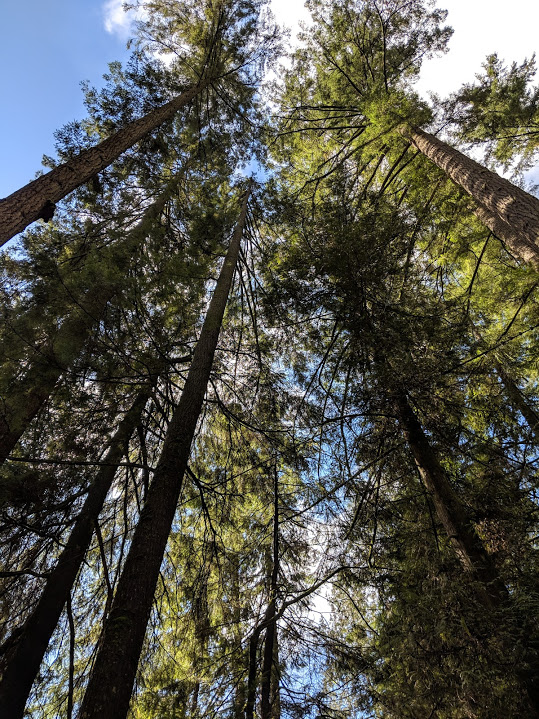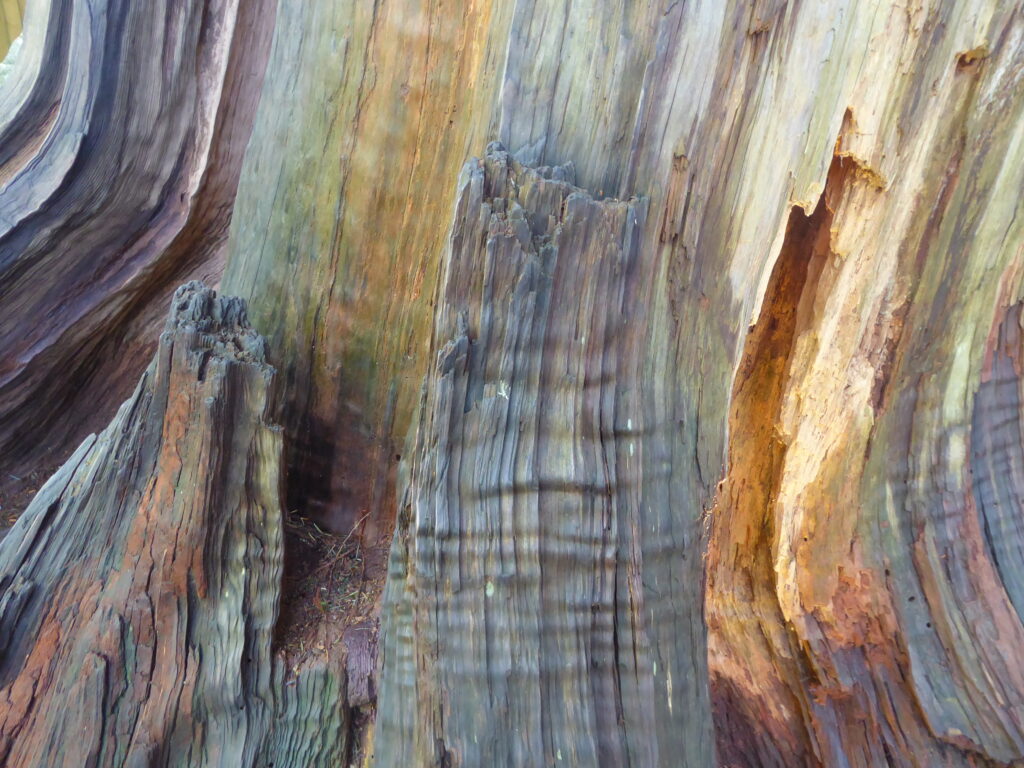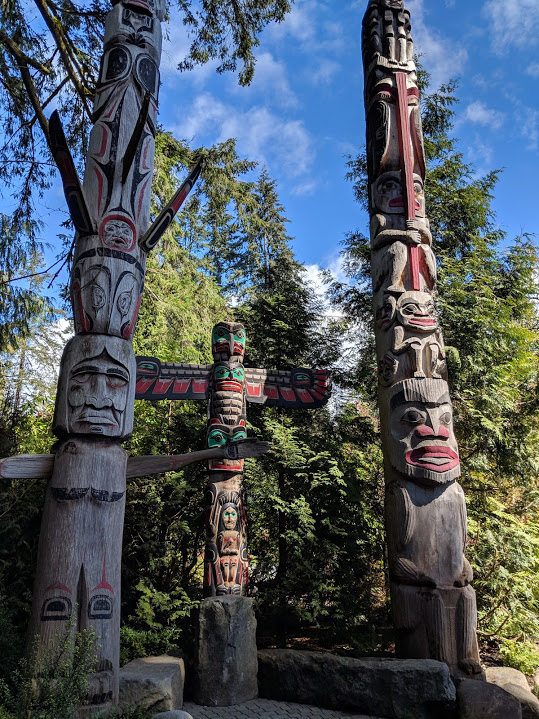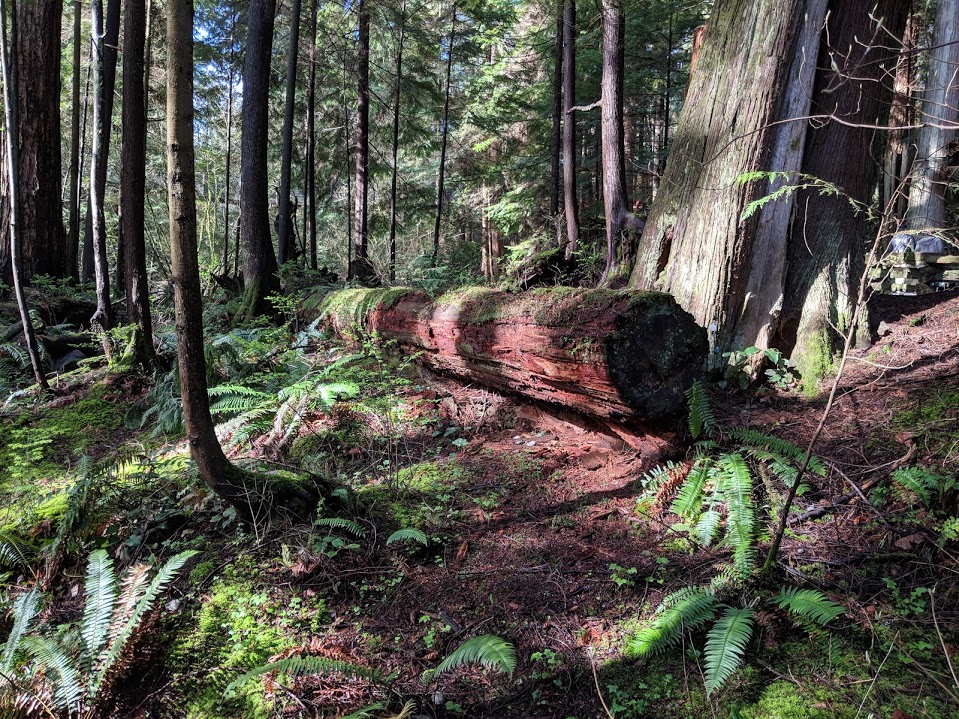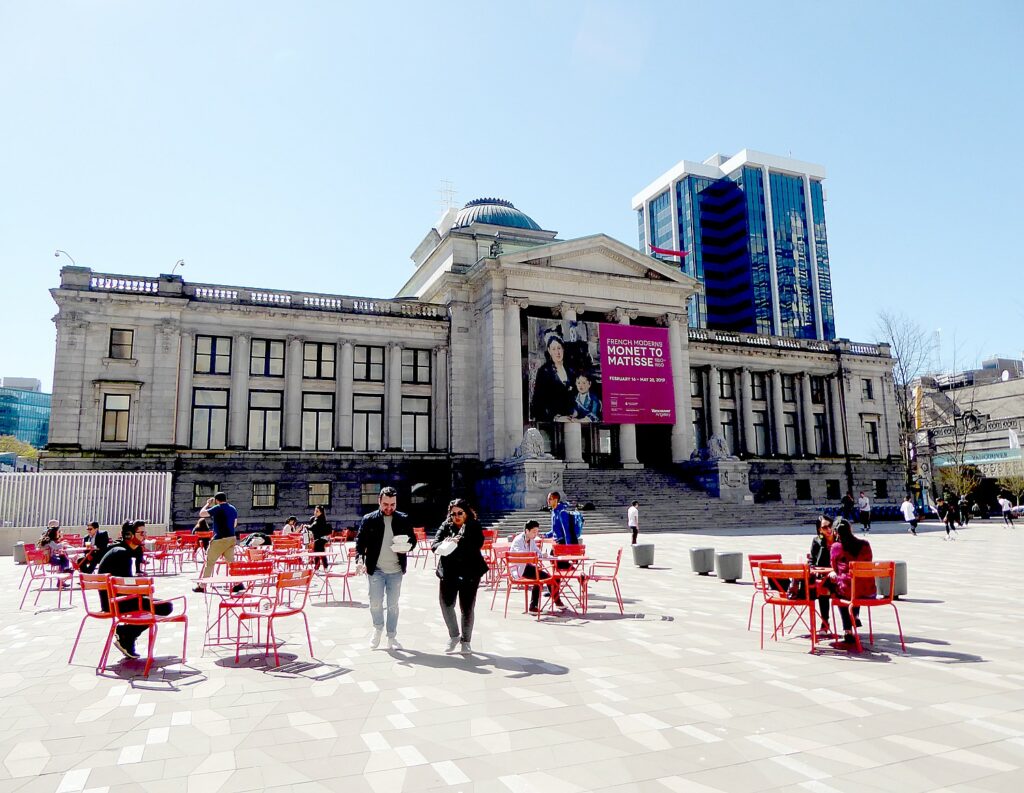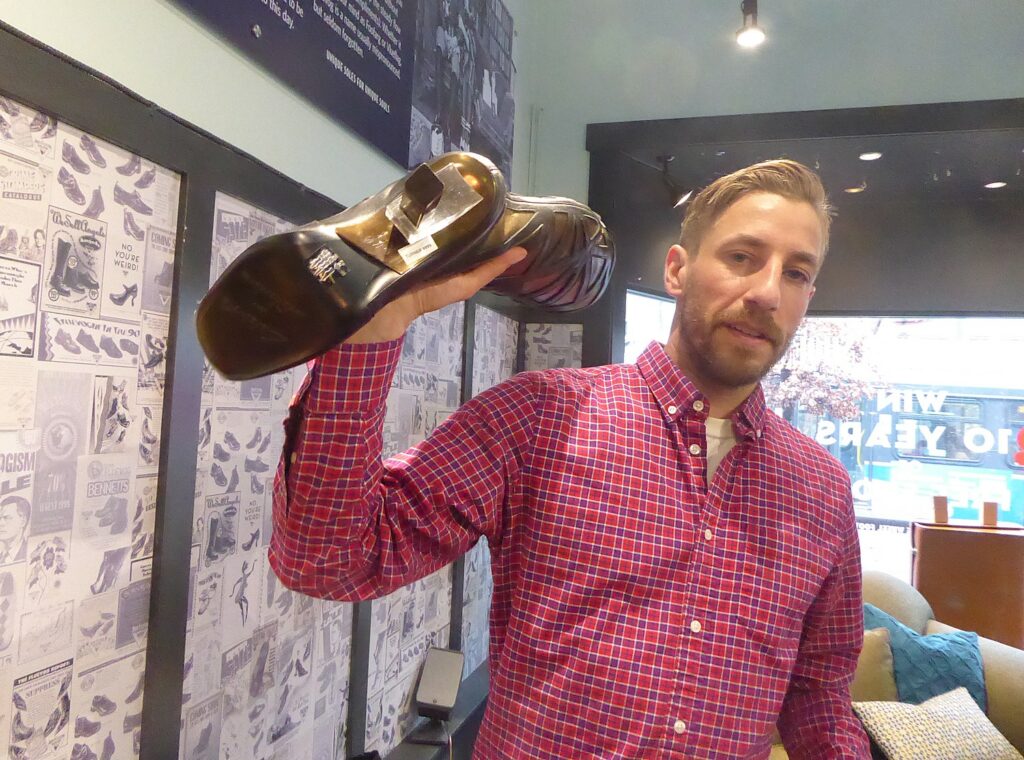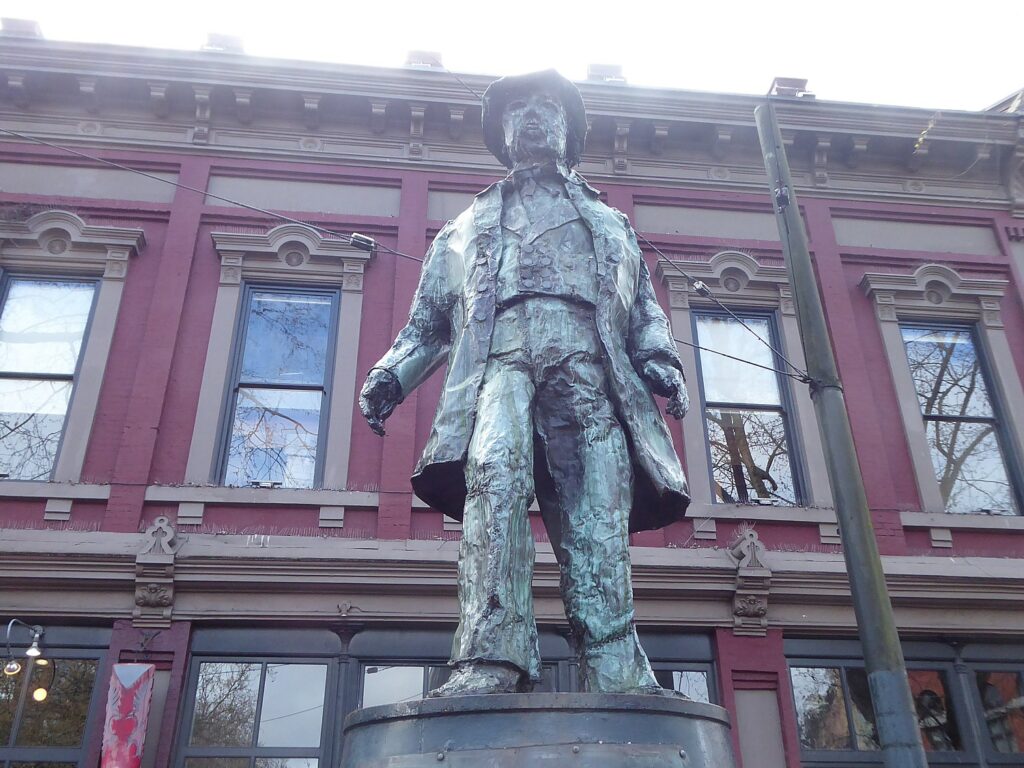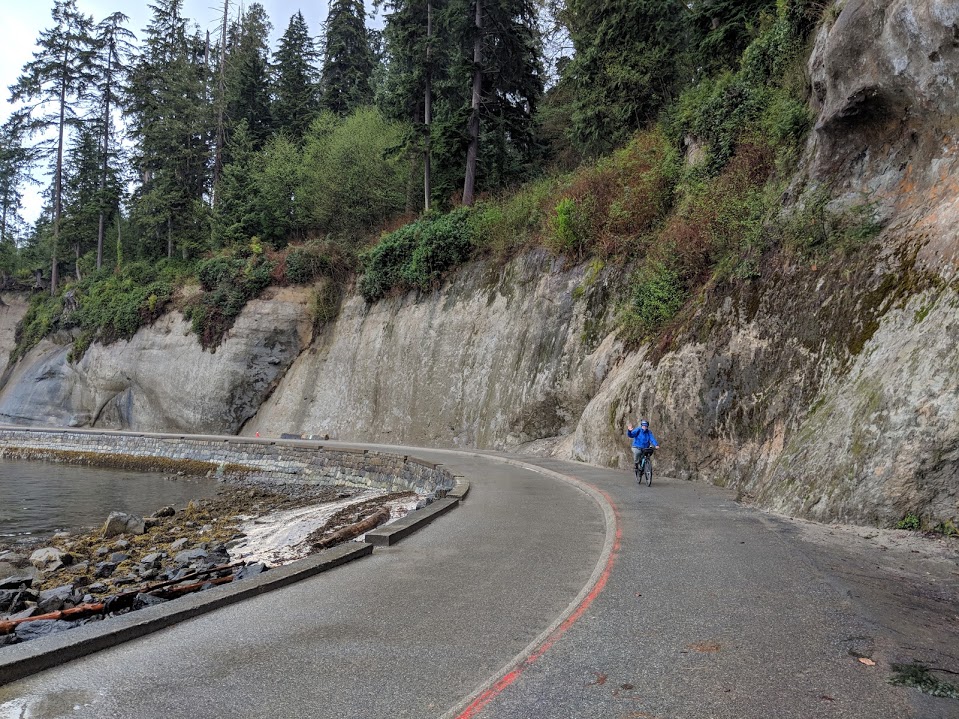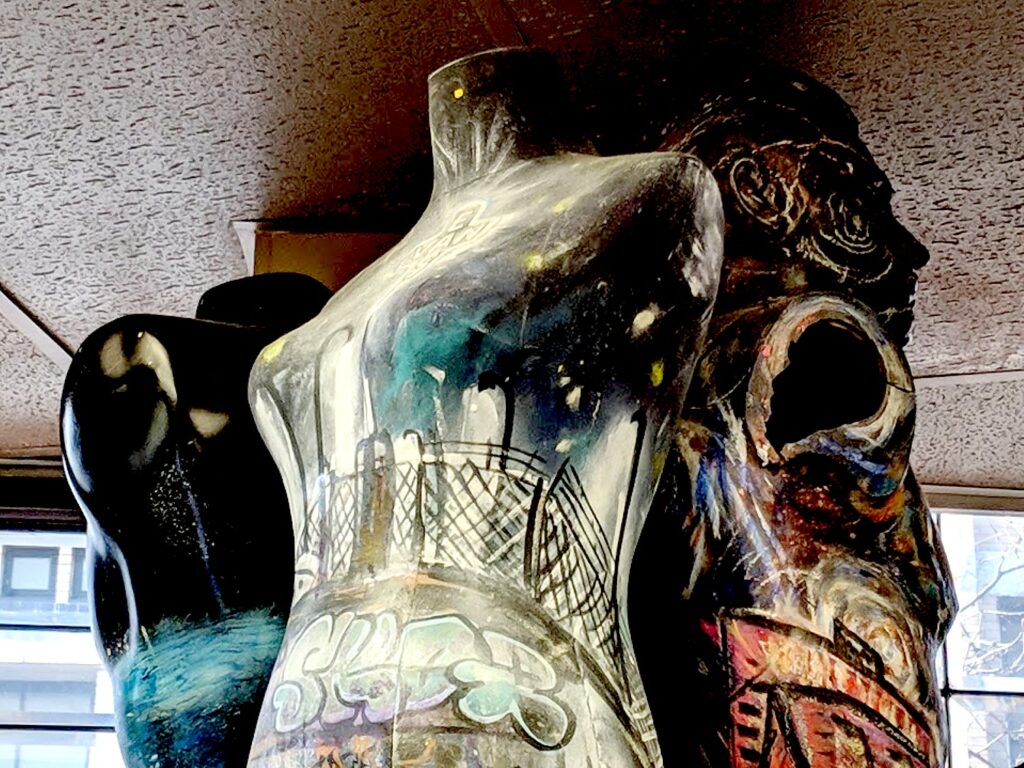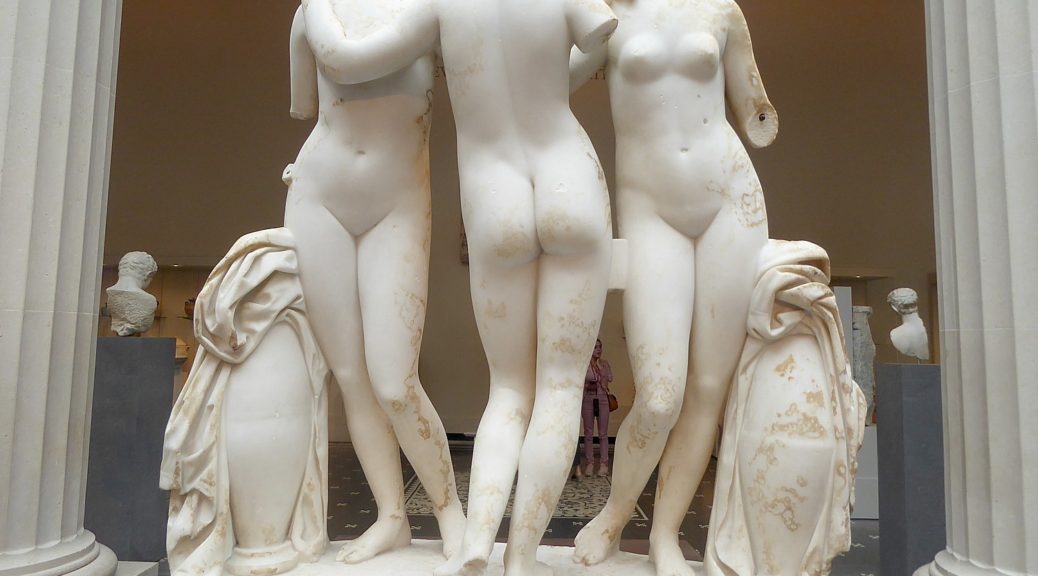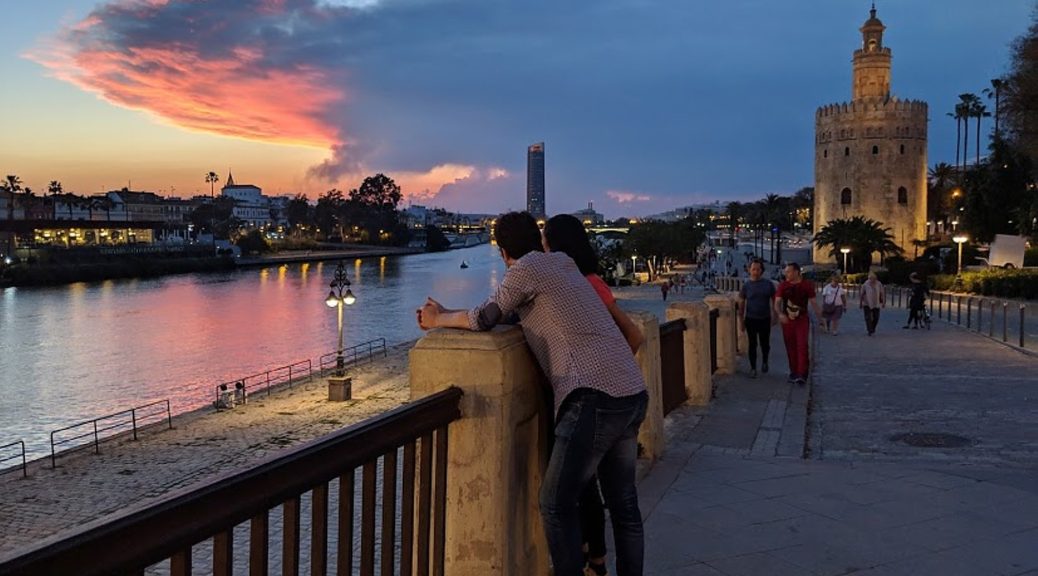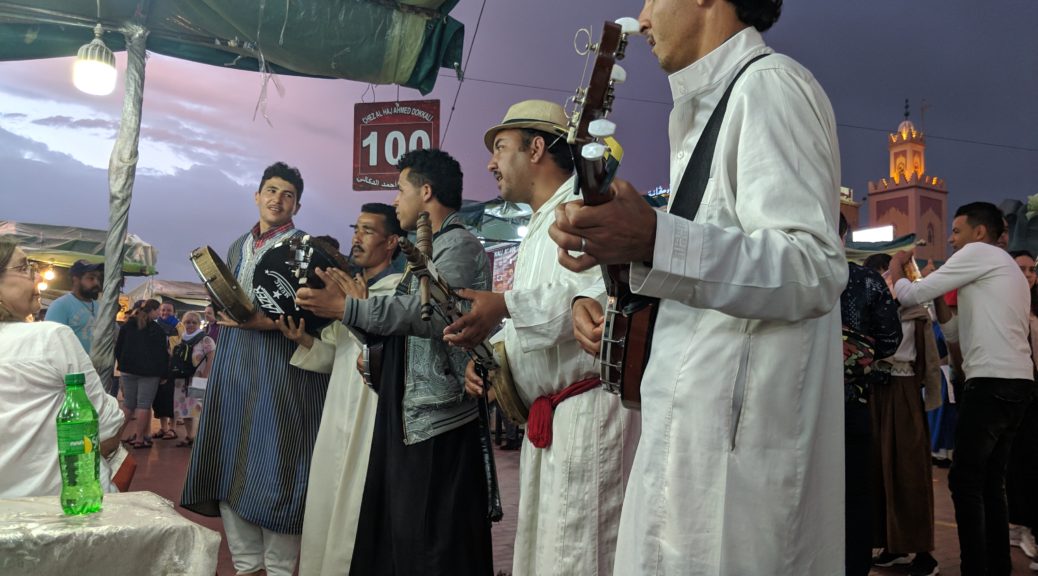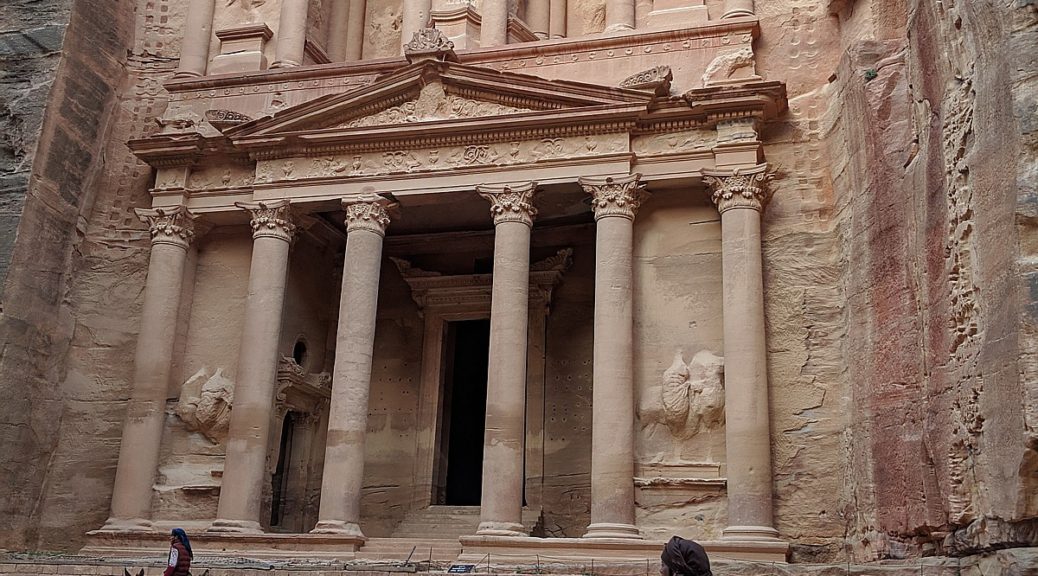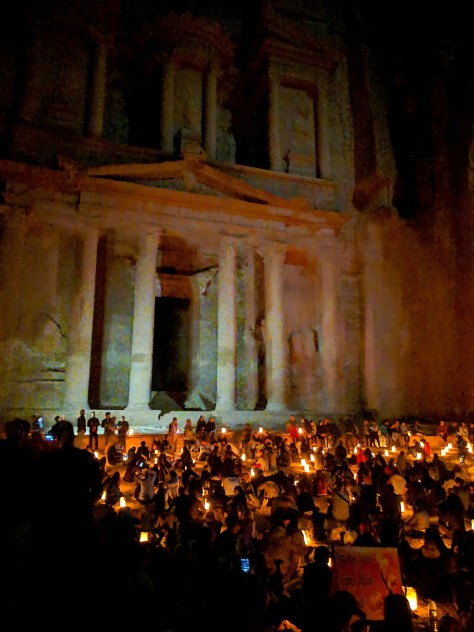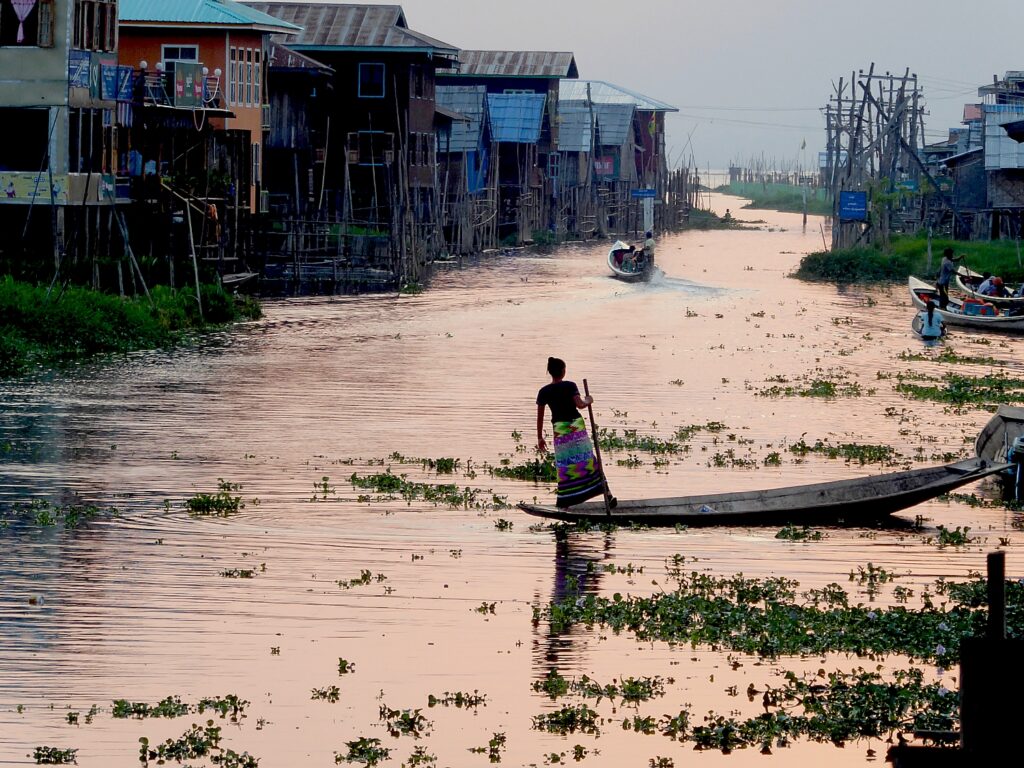
by Karen Rubin, Travel Features Syndicate, goingplacesfarandnear.com
My perfect day in Inle Lake, Myanmar, on Leg 3 of the Global Scavenger Hunt, a 23-day around-the-world mystery tour, begins the night before, on the JJ Express bus that leaves the temple city of Bagan at 10 pm and arrives at the bus stop (literally in the middle of the street in a small village) at 4:30 am. It is complete darkness, not a sound or stirring besides ourselves as the bus pulls away, leaving us there. For a moment, we feel stranded. Then, out of the shadows, two tiny jitneys – like small tut-tut open-back vehicles – appear. The drivers ask which hotels we are bound for so we divide up based on which side of Inle Lake we are staying. We settle the fare (we are in a very limited position to negotiate) and climb in.
The jitney drops us at the Sanctum Inle Resort at 5:30 am, where the kindly hotel clerk calls in housekeeping early so we could get into our rooms by 6 am (when 2 pm would have been normal check-in time). This five-star resort makes me feel like I have been dropped into paradise.
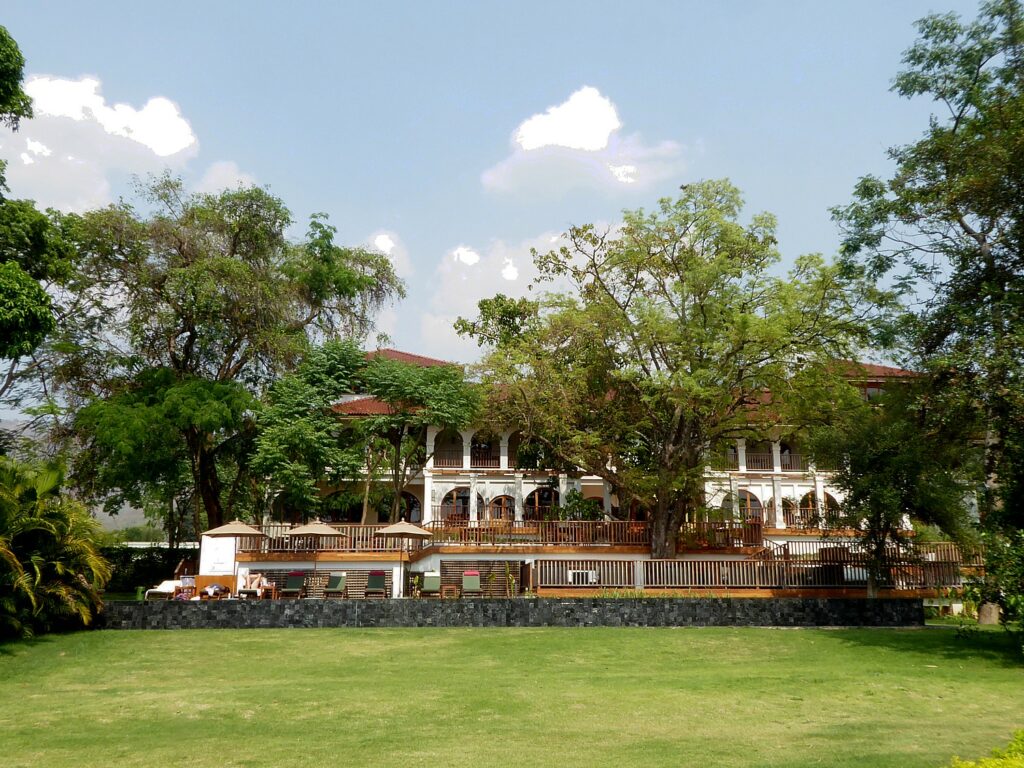
I am traveling on my own at this point, though at least one other of the 10 teams, SLO Folks, on the Global Scavenger Hunt are here – my teammate went on to Mandalay with another team who decided not to compete for points. SLO Folks (last year’s “World’s Greatest Travelers” GSH champion) has been scrupulous about following rules of the contest (no using computer or cell phone to make bookings or to get information; the trip is designed to “trust strangers” and engage with local people) so they arrive in Inle with no hotel, not even a decent map to start planning how they will attack the scavenges (challenges) and accrue the most points in the limited amount of time.
Indeed, this challenge, Leg 3 of our trip, is to depart Yangon (the city formerly known as Rangoon when the former British colony was known as Burma) and complete a triangle of cities (Bagan, Mandalay, Inle Lake), allowing only two legs by air and return to Yangon by 6 pm on Saturday, making our own arrangements for transportation and hotel (we are reimbursed $200/night/team). I had planned to go from Bagan to Mandalay with my teammate, but after hearing about Inle Lake from another team (Lawyers Without Borders, a Houston team that has done the Global Scavenger Hunt 12 times) who had been here before, I was enchanted to see it; then, overhearing SLO Folks planning to take the overnight bus, I was determined to see it for myself.
The description enchanted me: Located in the middle of Myanmar, in the Shan State, Inle Lake is set in a valley between two mountain ranges, with whole villages of wooden houses built on stilts in the middle of the lake, floating gardens, boatmen who steer standing up, wrapping one leg around a tall oar. There are 10 different Shan ethnic groups living around the lake and the surrounding hills, home to many different minorities who come down to sell their goods in the villages – like the Long Neck Ladies. Inle Lake was designated a wetland wildlife sanctuary in 1985.
Inle Lake feels like a different world to the rest of Myanmar, indeed, it seems like an enchanted Sangri-la.
The Sanctum Hotel (Maing Thauk Village, Inle Lake, Nyaungshwe, Myanmar) is on the list of suggested accommodations provided by the GSH “ringmaster” and Chief Experience Officer, Bill Chalmers, and because I am not competing, have booked on hotels.com ($101 for the night). I am delighted to find it is an absolutely gorgeous five-star luxury resort (the infinity pool on the grounds with views to the lake is breathtaking), and just being here fills me with a contented peace. But that is only the beginning.
The kindness of the hotel manager is immensely appreciated. For me, it means I am able to take advantage of the hotel’s 8 am boat tour (that means a traditional wooden boat with the modern convenience of a power motor as well as the boatman’s long oar) because most of Inle Lake’s special attractions are literally on the lake – whole villages, in fact, are built on stilts on the lake; there are floating gardens which are really aquatic farms; floating markets; the fishermen fish in a distinctive fashion with nets and the boatmen paddle standing up, with their leg wrapped around the tall oar. The temples and other major attractions – silversmiths, weavers, boatmakers – are all reached by the boat.
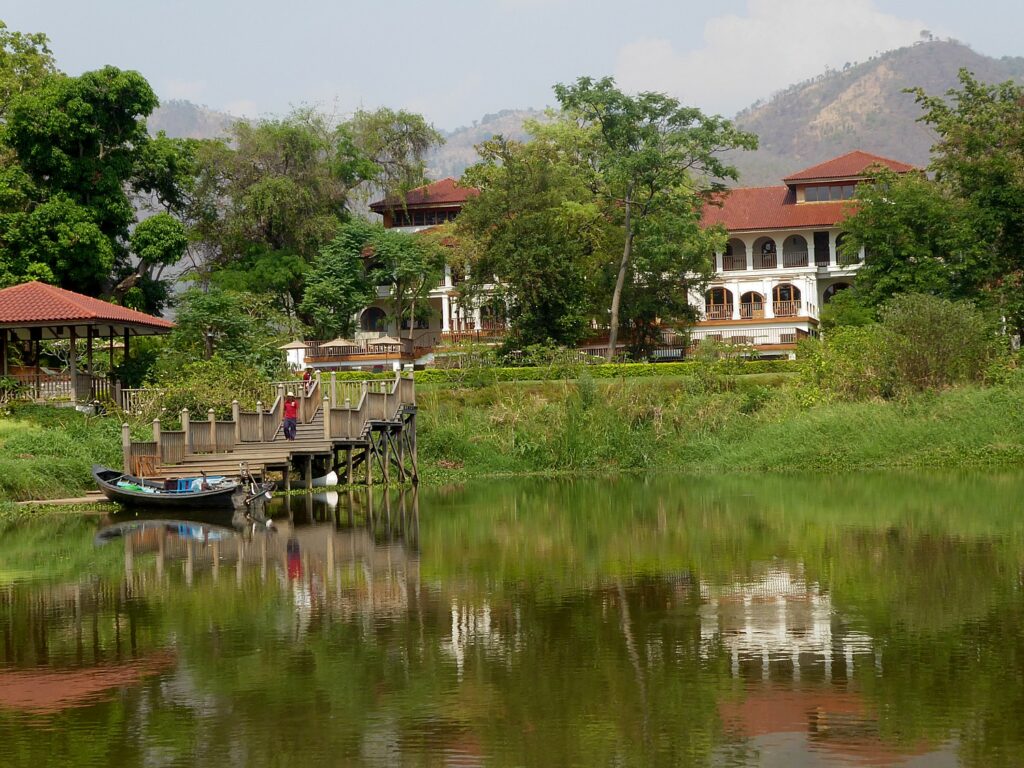
The full-day tour will take me to the Five Day Market, Phaung Daw Oo Pagoda, Inn Paw Khone Village, Ywa Ma Village, Nam Pan Village (where we visit workshops to see crafts – silversmithing, weaving, boatmaking), Floating Gardens, Nge’ Phe’ Chaung Monastery and Indein Pagoda – essentially enabling me to see all Inle Lake’s highlights in a one-day visit ($35), though there is so much to see, Inle Lake is worth a two or three day stay.
The Sanctum Inle Resort is situated on the bank of Inle lake – a shallow lake that’s over 13.5 miles long and 7 miles wide – and to begin the tour I have booked (because I’m not competing, I can book a hotel tour, while the competing team cannot, so they go off to find where the boatmen keep their boats), I am escorted down to the hotel’s dock where the boat and the boatman is waiting. It turns out I am the only one, so this is essentially a private tour. The boatman, a young fellow named Wei Mo, speaks only limited English – enough to tell me where I am going – but it is sufficient, I just don’t expect to get any commentary.
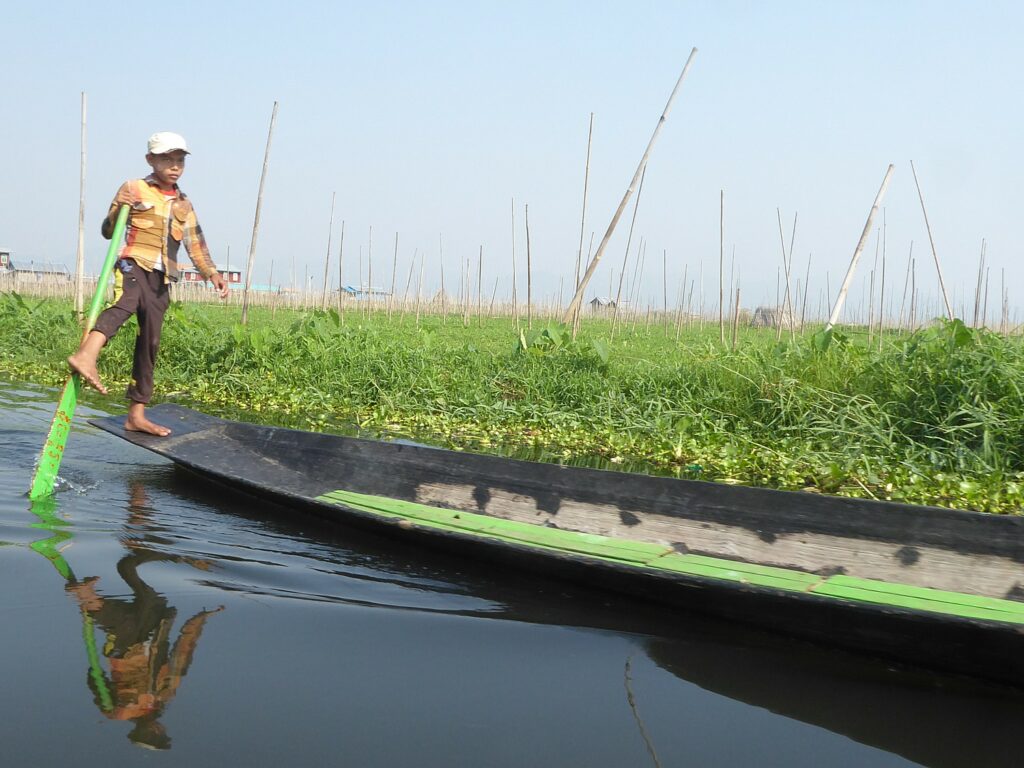
It is an amazing experience – gliding across the lake, the fresh air and cool breeze rushing over me, especially after the debilitating 108-degree heat of Bagan. Inle Lake is notable for the Intha, lake dwellers who have a distinctive way rowing their wooden boats by wrapping their leg around a tall oar. At first, the mechanics make no sense. But I realize it is a way of standing and using such a tall oar and keeping the weight balanced on the tiny boats.
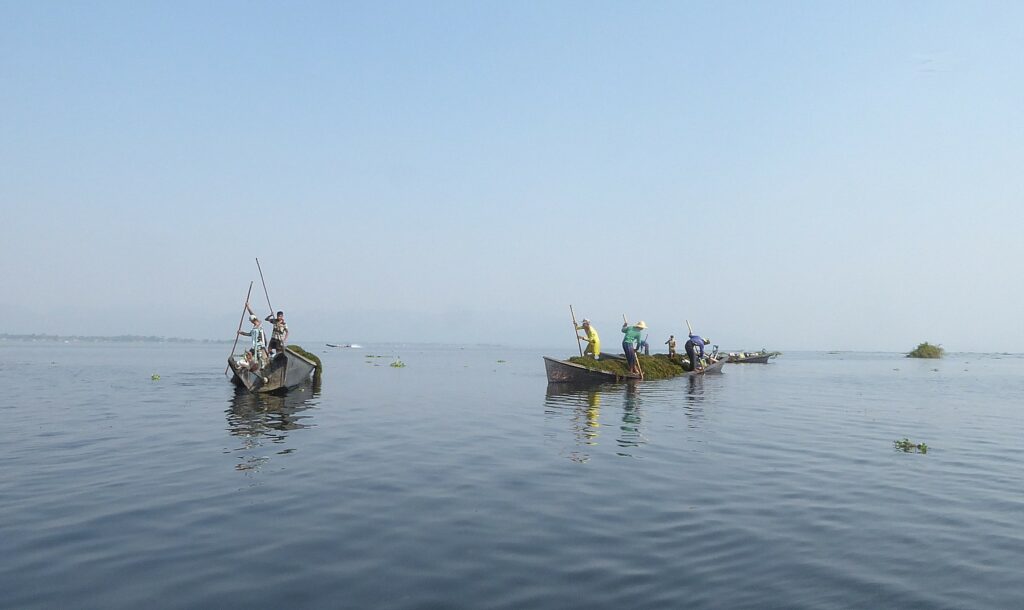
During the course of the boat tour, I encounter a young fellow fishing (though you have to get out pretty much at sunrise to see the fishermen), boat people harvesting from the lake, go through an entire village built on stilts, where there are also numerous craftsmen and workshops we visit. One stop provides an opportunity to visit with the Long-Neck Ladies (actually only one), who come down from their secluded village to pose for photos with tourists for money. We also visit important pagodas and temples on the lake.
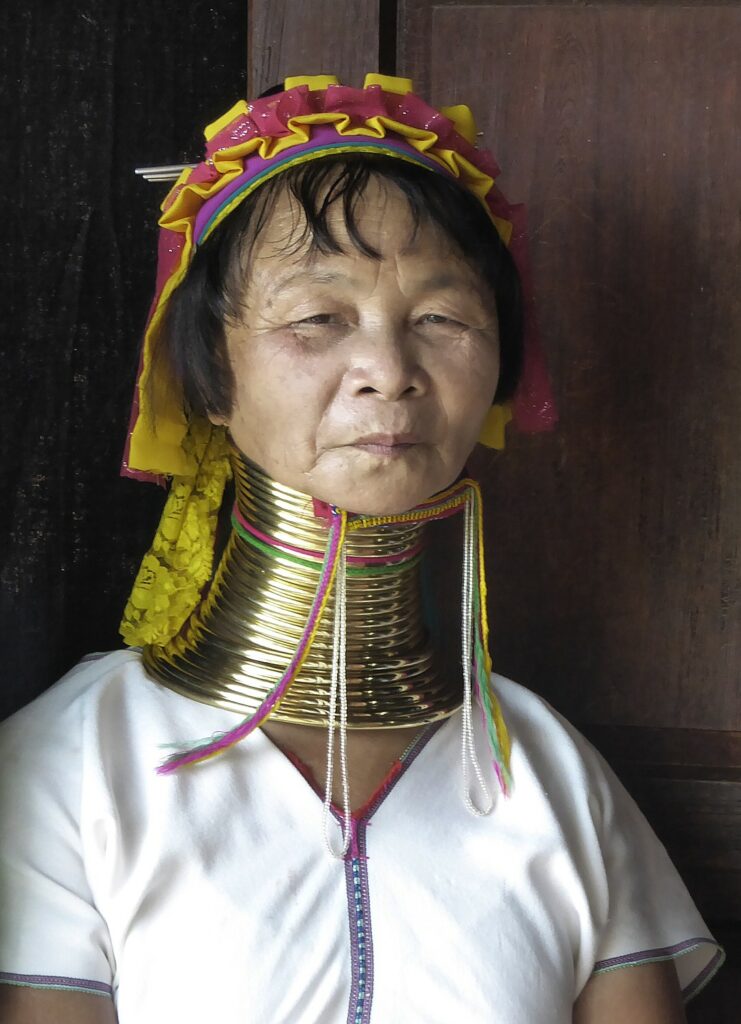
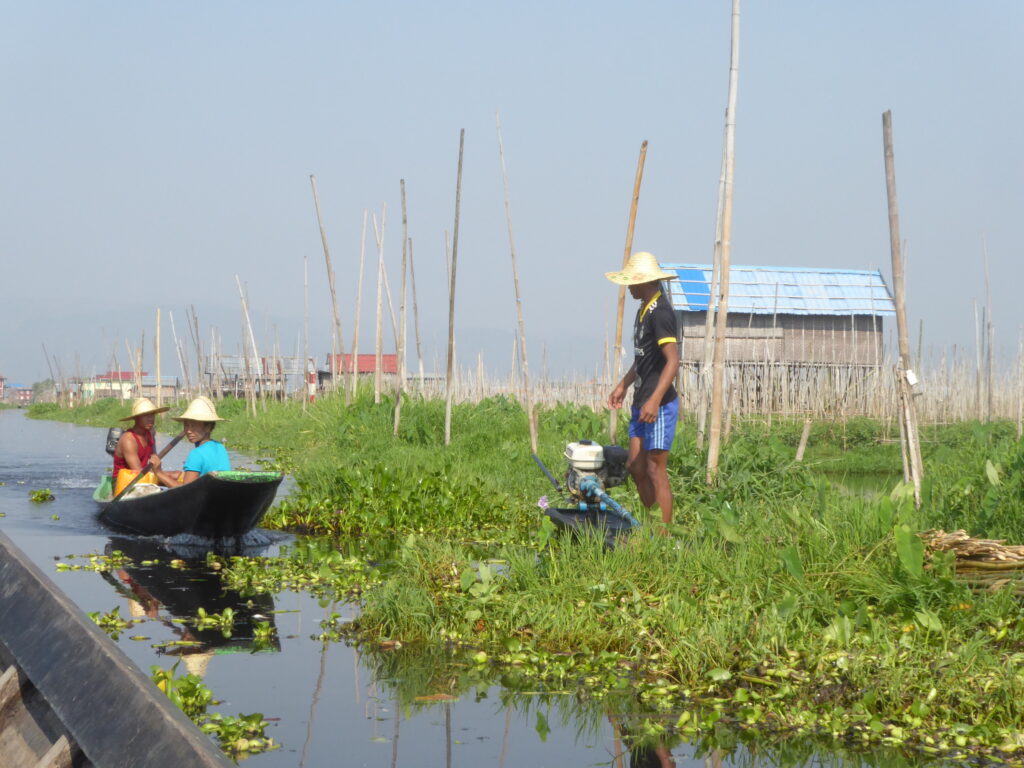
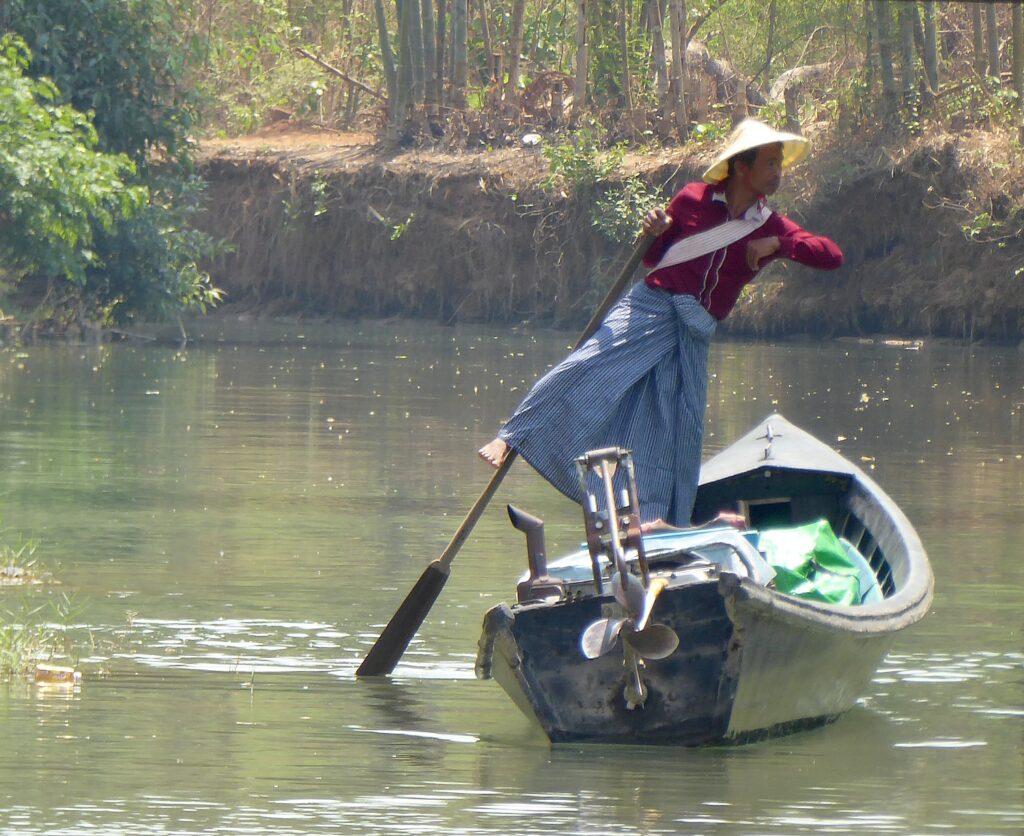
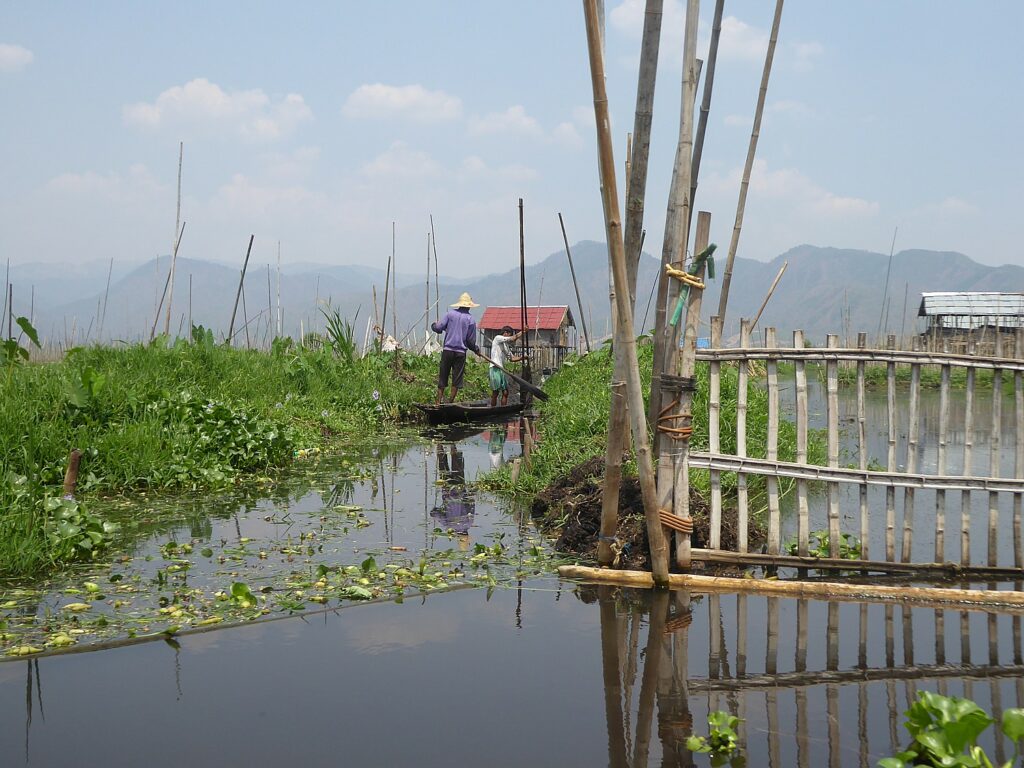
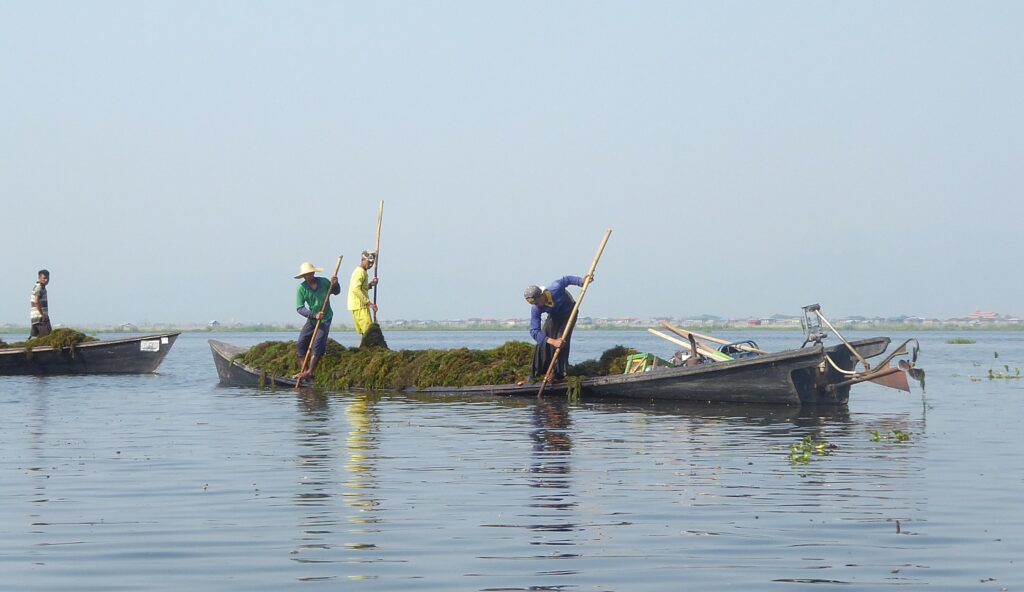
It is remarkable to see how the Inthar make the most out of the lake – even creating farmland where none existed. They build floating gardens out of lake-bottom weeds and water hyacinth and grow crops like squash and tomatoes, anchoring them with bamboo poles. I learn that these floating islands can be cut, dragged by boats and even sold like a plot of land. Floating gardens can be found mostly in Kaylar, Inchan and Zayatgyi villages.
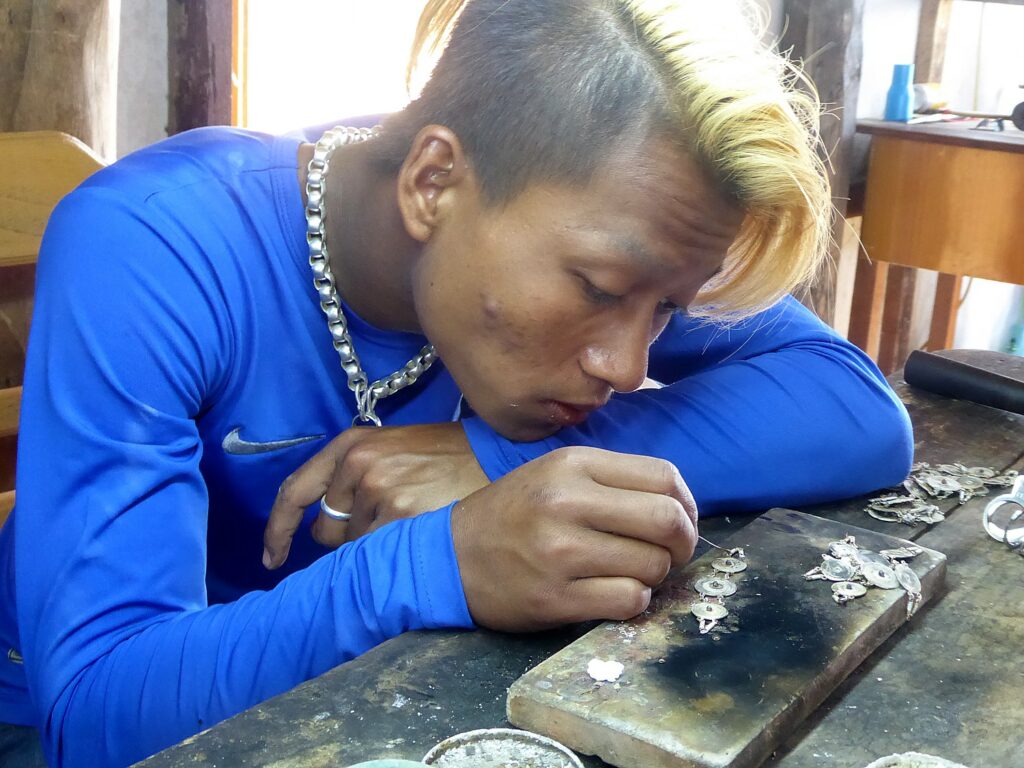
I love visiting the various workshops in the various villages – it seems each has a specialty. We visit a silversmith workshop where I watch the intricate process before being led into (what else) an elaborate shop, filled with stunning creations.
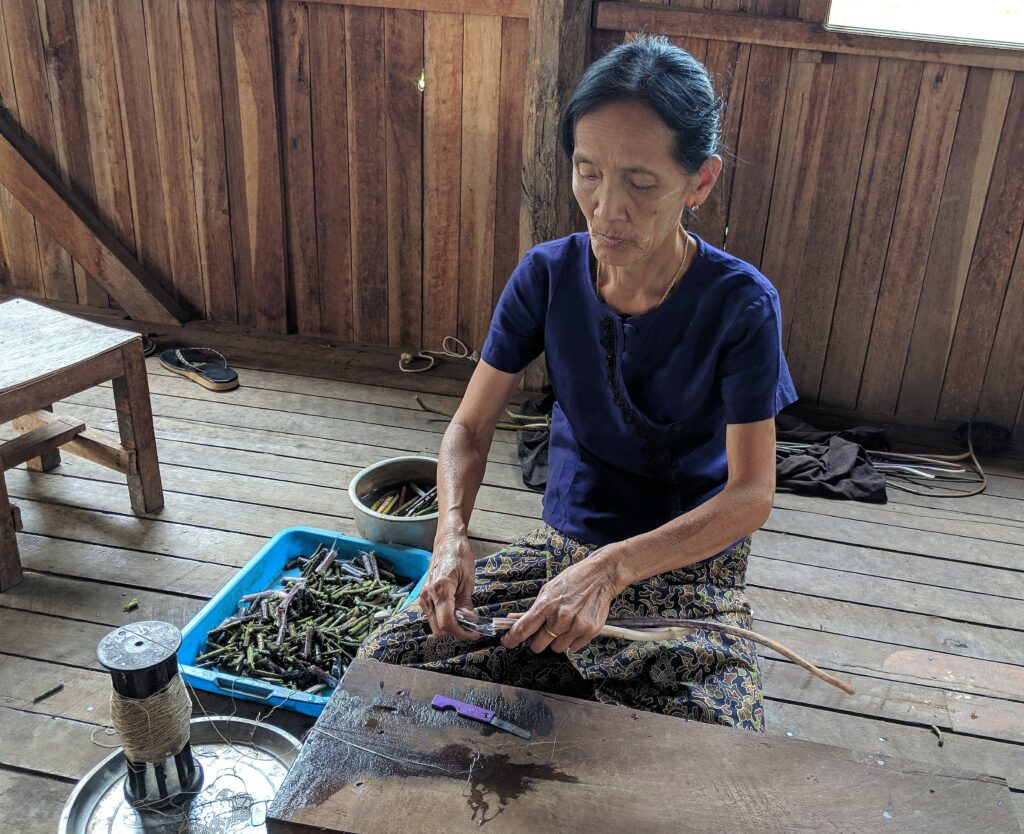
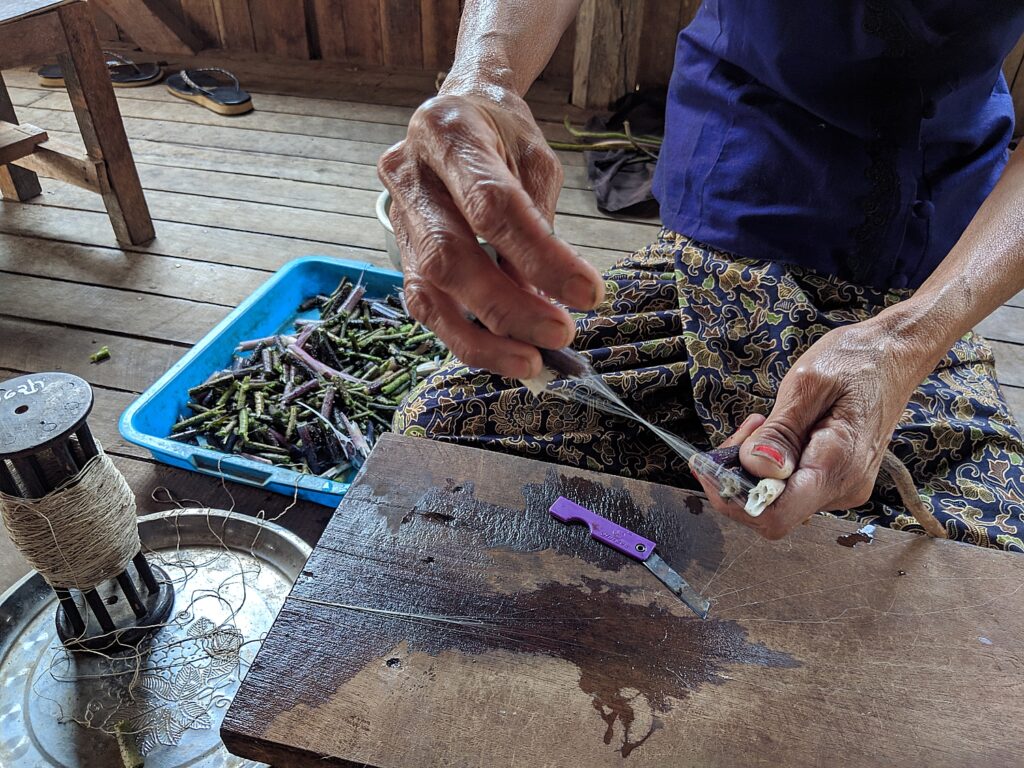
Wei pulls up to Inn Paw Khone Village, famous for its weaving workshops, but most notably, weaving silk from lotus. Silk weaving in Inn Paw Khon began 100 years ago. At first, they wove from cotton fiber and then changed to silk and finally lotus fiber. and I am told that the technique of making silk from lotus was begun by a woman now more than a century old. I get to watch how a woman delicately pulls a strand from the lotus plant which is wound on a spindle into thread.

At the boatmakers, I learn how each one is designed differently for their purpose – a family boat, a fishing boat (7.8 meters), a boat designed for the Long Neck people. “A boat lasts 25 years. Only men make the boats, they need to be strong. It takes 20 days to make a boat; they make lacquer from a tree to paint, wood powder and cotton. It takes two people to cut the teakwood,” she tells me. There are absolutely stunning wood carvings to purchase. But I must travel light.
We stop in several of the region’s most important pagodas.
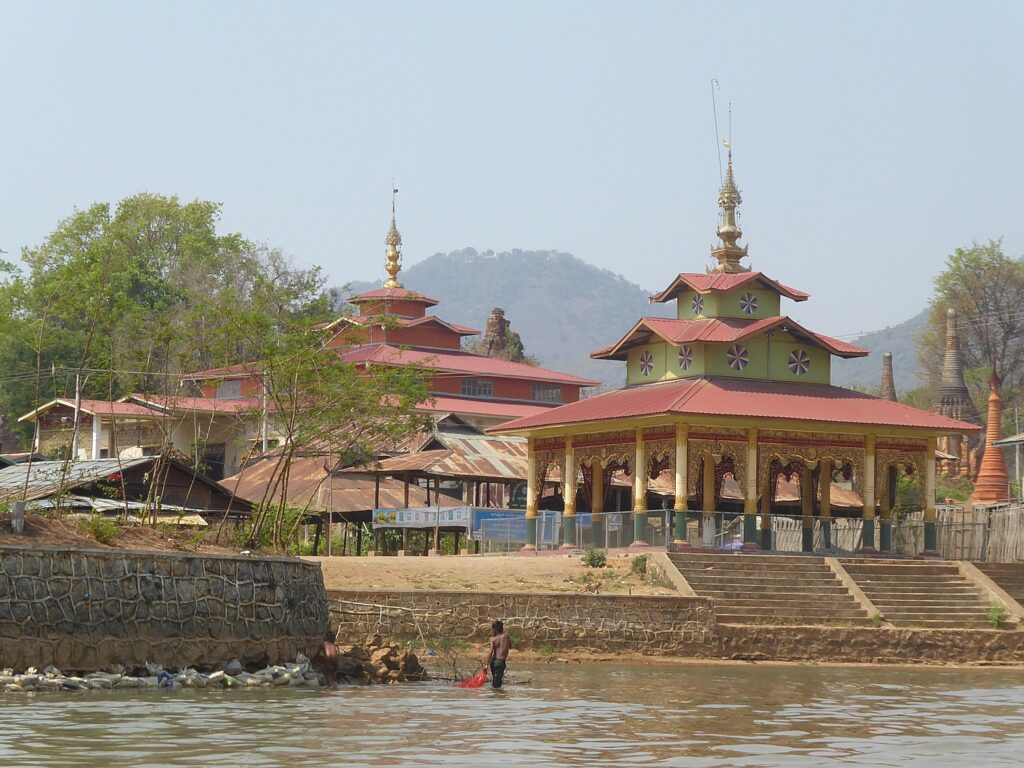
Shwe Indein Pagoda is the most impressive of the attractions visited. You walk up a covered walkway lined with beautifully painted columns, up a hill, flanked by an astonishing 1,600 Buddhist stupas, some of stone, some intricately carved, some gilded. Many have been restored but you also see many crumbling with age and being reclaimed by the jungle. (There is a camera fee, 500 kyat, which works out to about 30 cents).



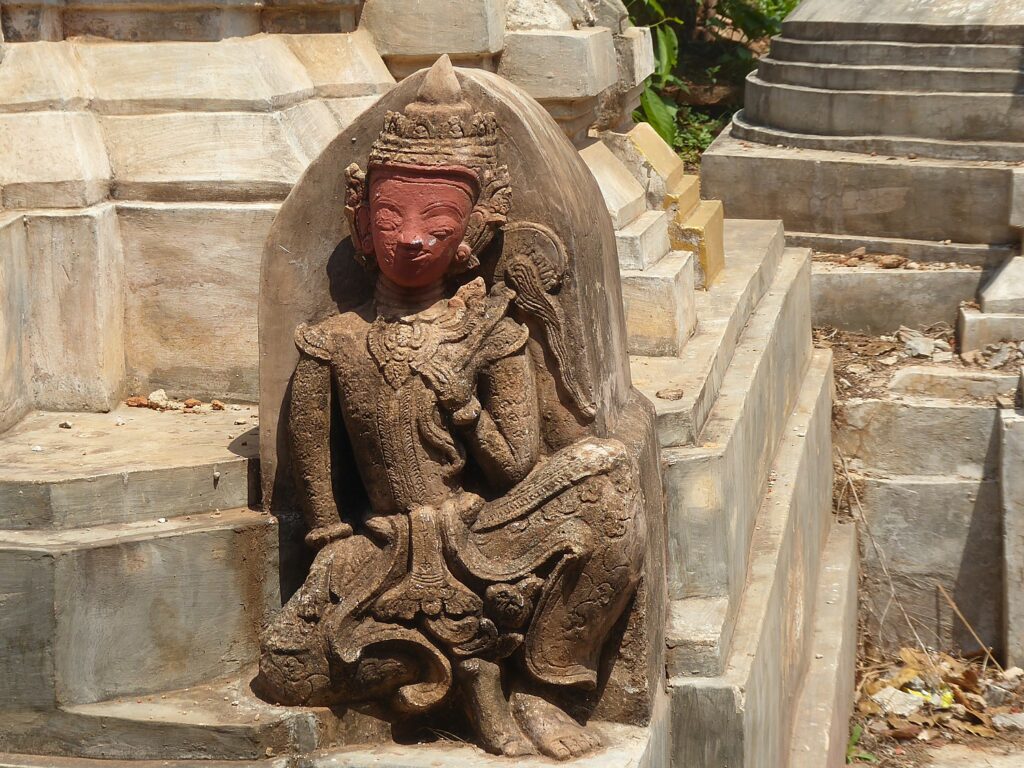
According to atlasobscurba.com, “These structures date from the 14th to the 18th centuries and are typical of Burmese zedi. Like others found across the region, the stupas feature fantastical creatures like chinthe – mythic lion-like beings that protect sacred spaces. These were (and remain) sites for contemplation and meditation and many contain relics inside their bases. The first stupas at Indein were likely commissioned during the reign of King Narapatisithu, although according to legend, it was King Ashoka – the Indian emperor responsible for spreading Buddhism across much of Asia – who first designated this as a site of particular spiritual importance. Hundreds of years later, that distinction is completely obvious. The sea of ornate spires coupled with the view over the lake and surrounding calm lend this spot an unquestionably mystic, reflective air.” (www.atlasobscura.com/places/shwe-indein-pagoda) It is breathtaking to see. Inside, people are gathering for a communal feast.
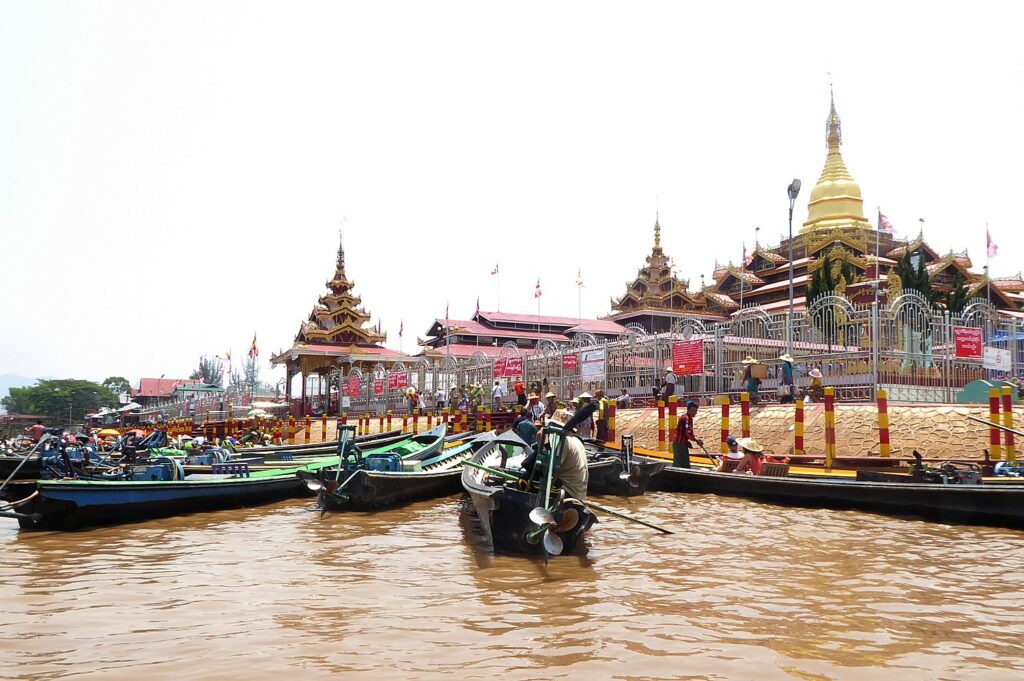

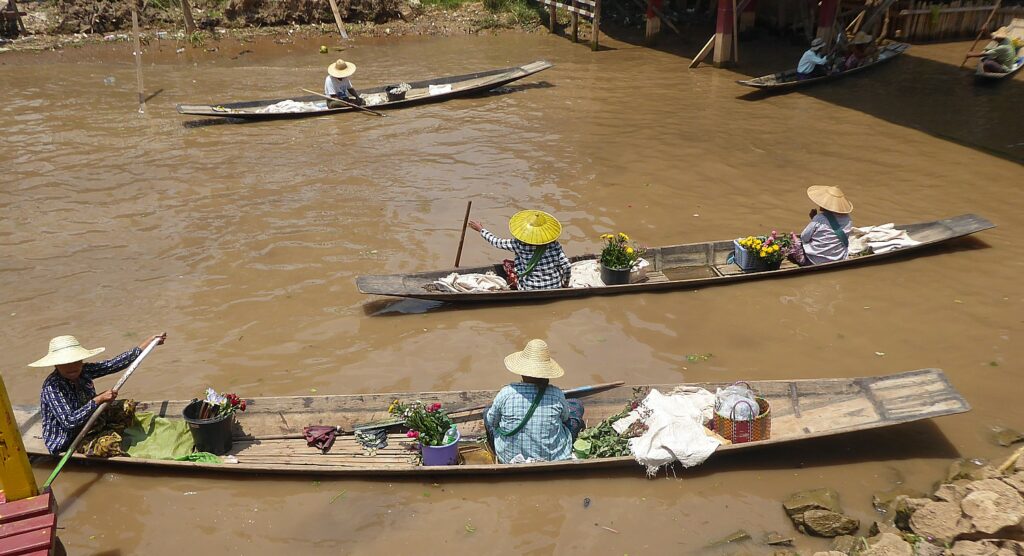
We come Phaung Daw Oo Pagoda, one of the famous principal shrines in Myanmar, just crammed with boats and worshippers. The pagoda houses five small Buddha images which are much revered by the lake-dwellers. Once a year, in late September-early October, there is a pagoda festival when four of the five Buddha images are taken on an elaborately decorated barge towed by several boats of leg-rowers, rowing in unison, and other accompanying boats, making an impressive procession on the water.

Ngaphechaung Monastery is a beautiful wooden monastery built on stilts over the lake at the end of the 1850s, the biggest and oldest monastery on the lake. The monastery is known for a collection of old Myanmar’s Buddha images from different eras. It is also notable because the monks have taught a few of the many cats living with them to jump through hoops (that is the reputation, but I don’t get to see any cats).
I skip stopping for lunch so am able to condense the tour somewhat, which brings me back to the hotel at 2:30 pm.

I indulge in Sanctum Inle Resort’s utterly stunning pool – I would rank one of the best resort pools in the world – an infinity pool of black and silver that shimmers as you swim, magnificently set with a view down to the lake, richly landscaped, a great size for actually swimming as well as playing around. It is also one of the most magnificent places just to lounge. I meet families from around the world.
I am back in my room by 5 pm, to walk about a mile up the road from the resort into the nearby village of Maing Thauk. I am bound for the Friendship Bridge where one of the scavenges is to watch the sunset. I love to see the Burmese alphabet, with its circles and curley-cues, on signs (few have English translation, except for the Noble Aim PreSchool, my Rosetta Stone, and a traffic sign with a drawing of a parent holding a child’s hand, indicating a school crossing). I come upon a school holding a sports competition that has drawn a tremendous audience. Even though hardly anyone speaks English, we manage to chat (icebreaker: What is going on? Where is the bridge?). It’s a good thing I ask the fellow if I was going the right way to get to the Friendship Bridge I am looking for, because he directs me to turn left on the next corner (I would have gone straight).
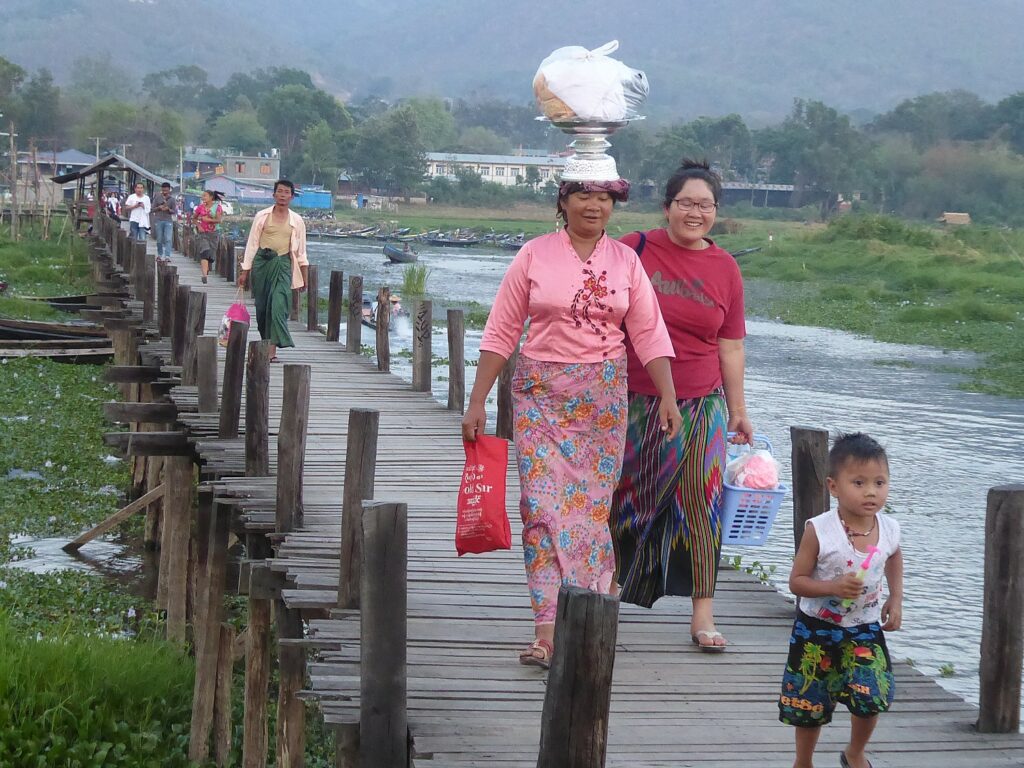
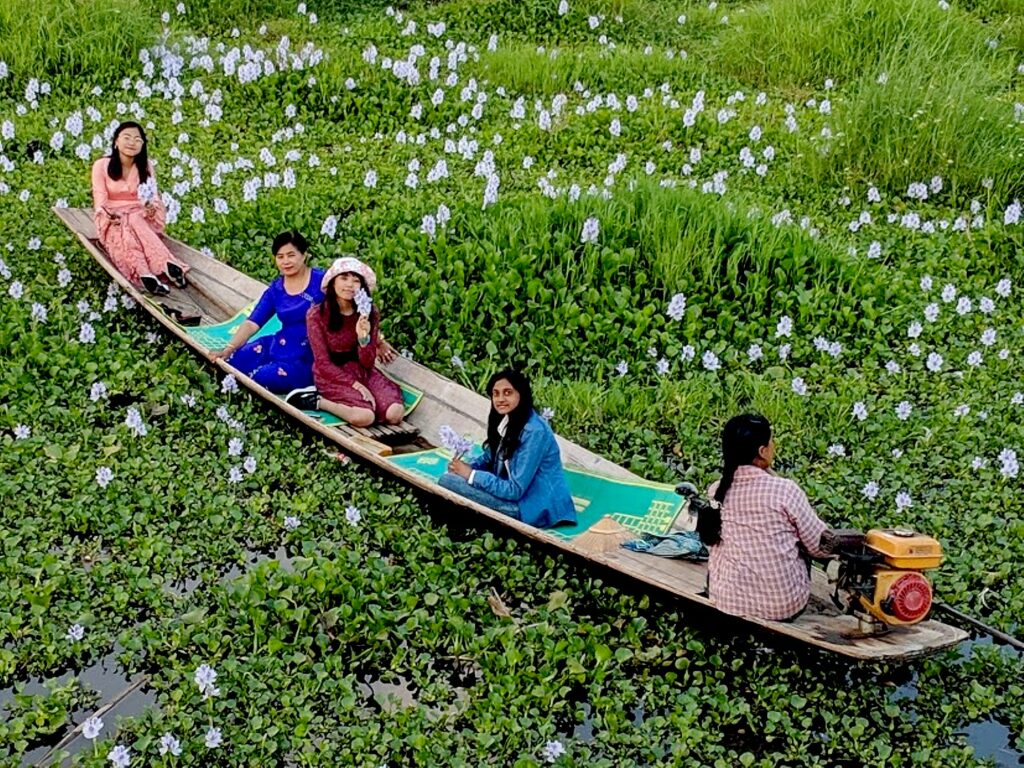
The Bridge connects many structures and from which people can get onto the scores of wooden boats that gather here, especially to offer sunset “cruises”, as well as walk to several restaurants. The views and the evening activity are just magnificent. It’s like watching the entire community walk by.
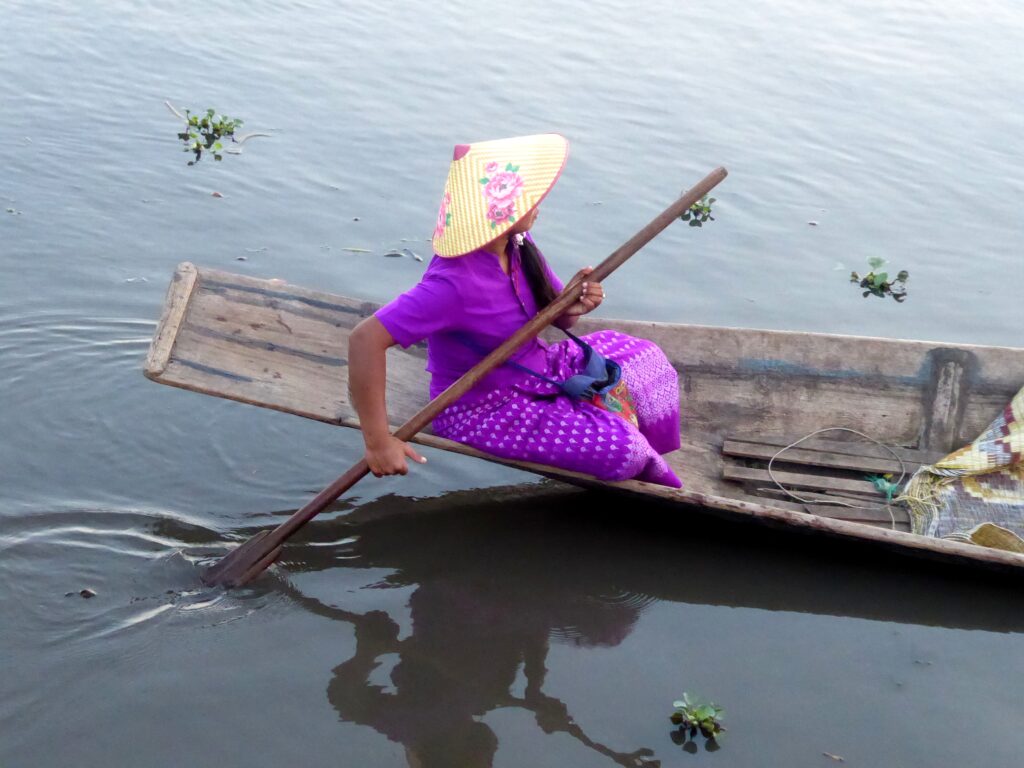


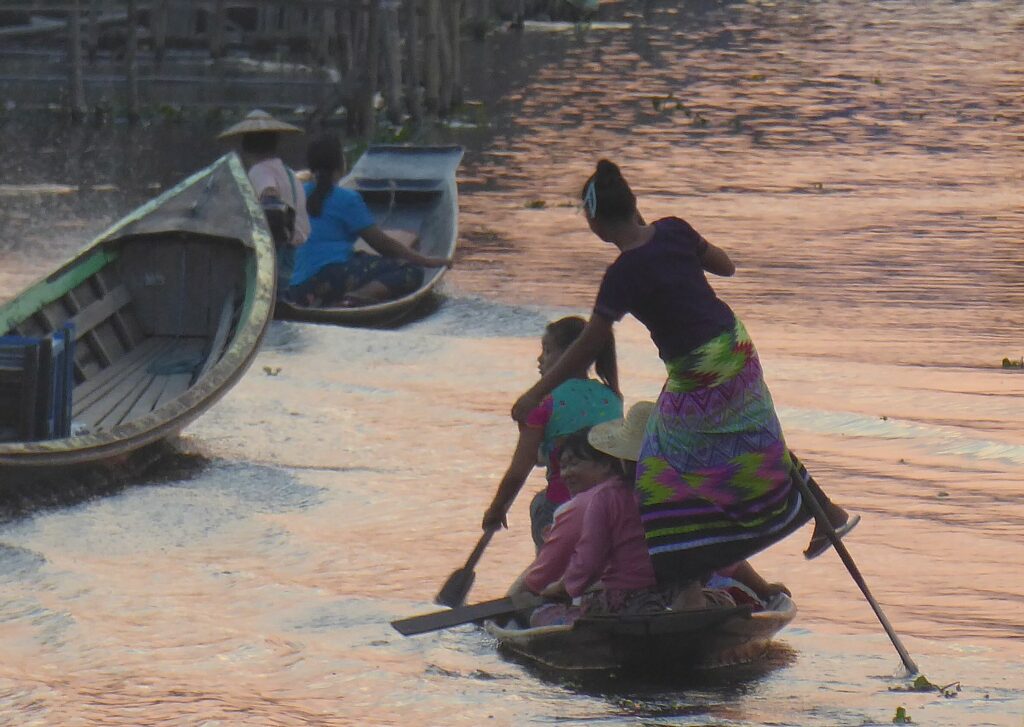
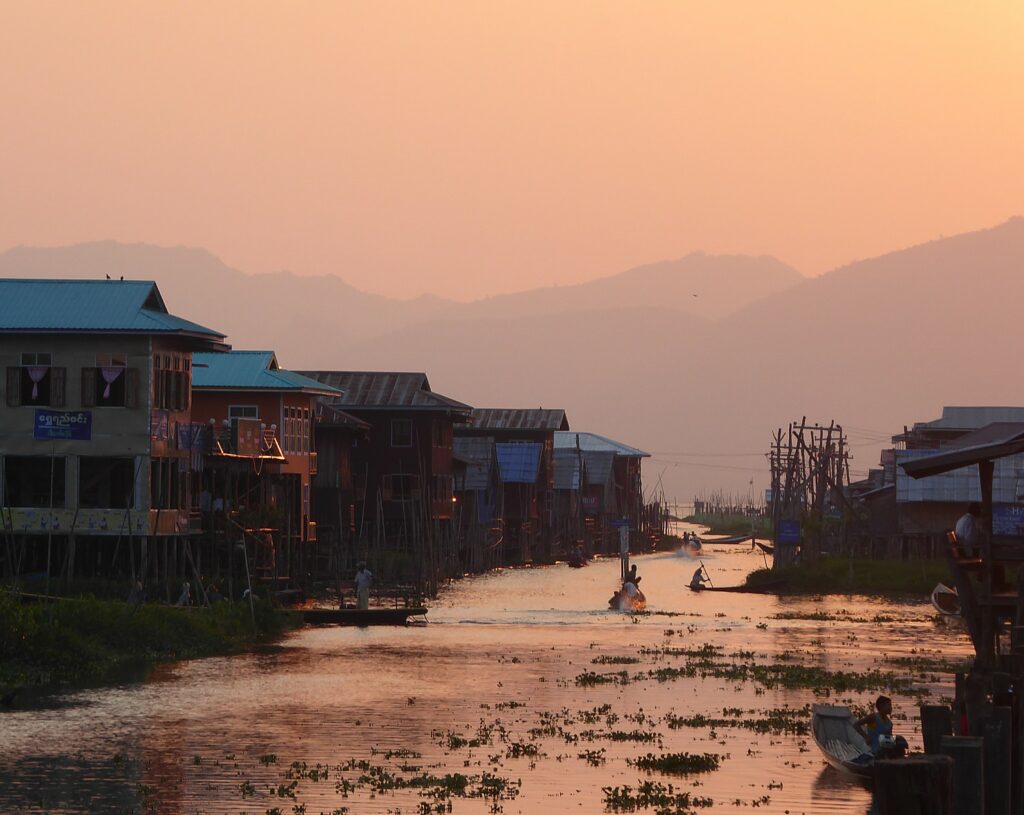
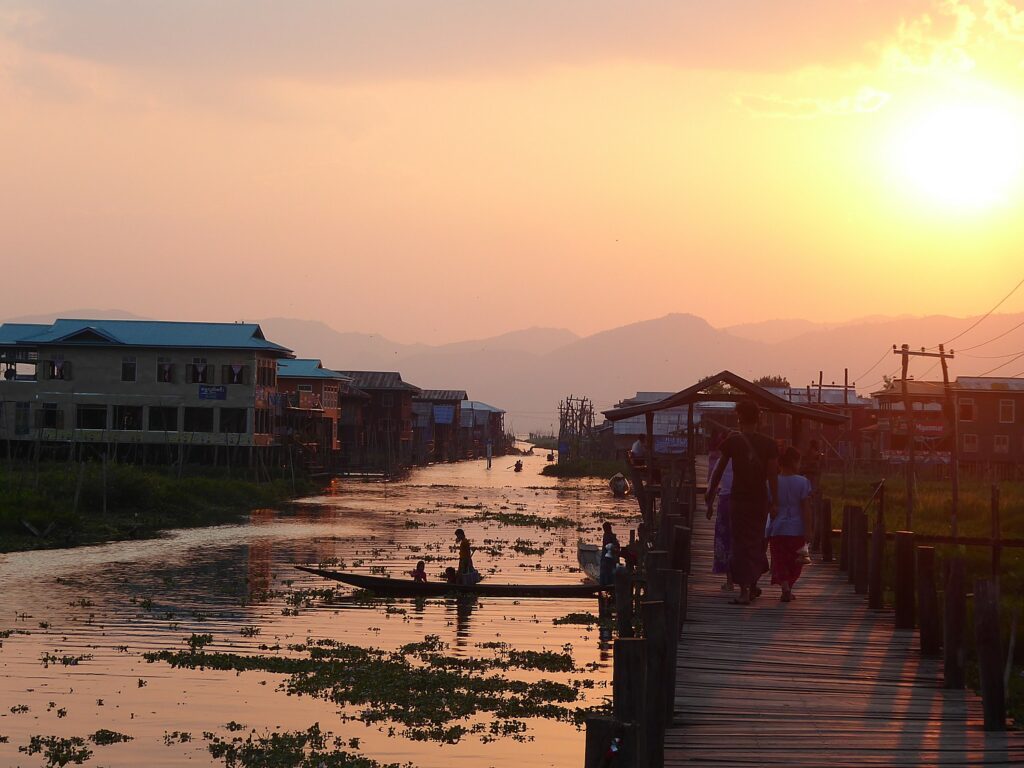
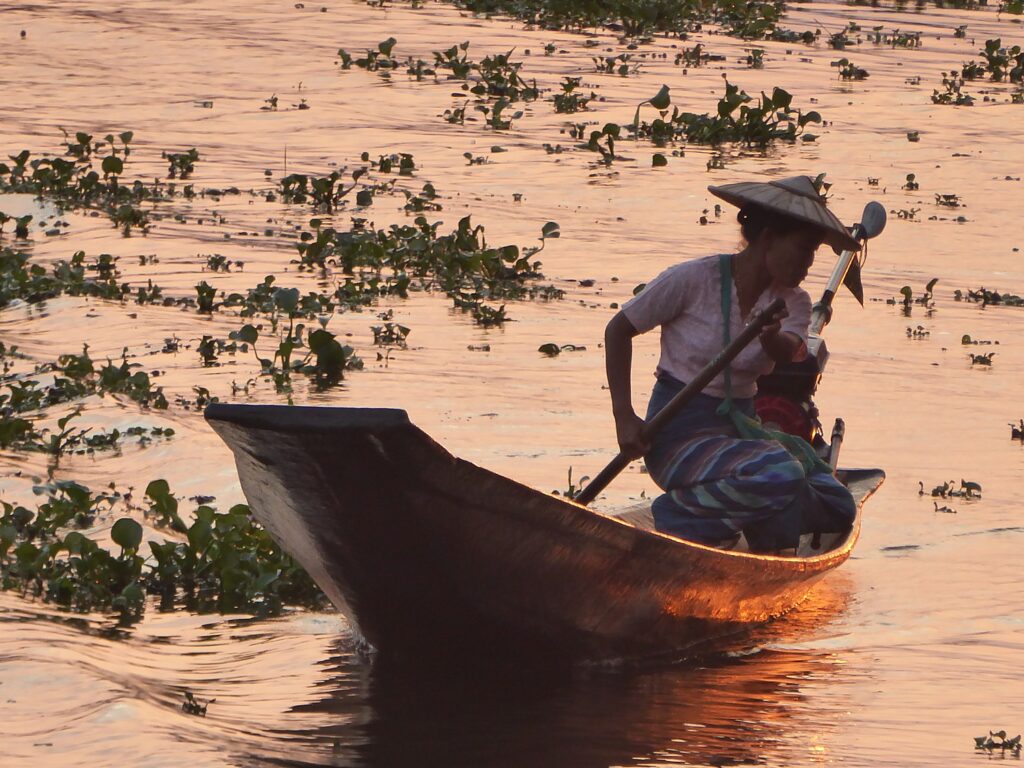
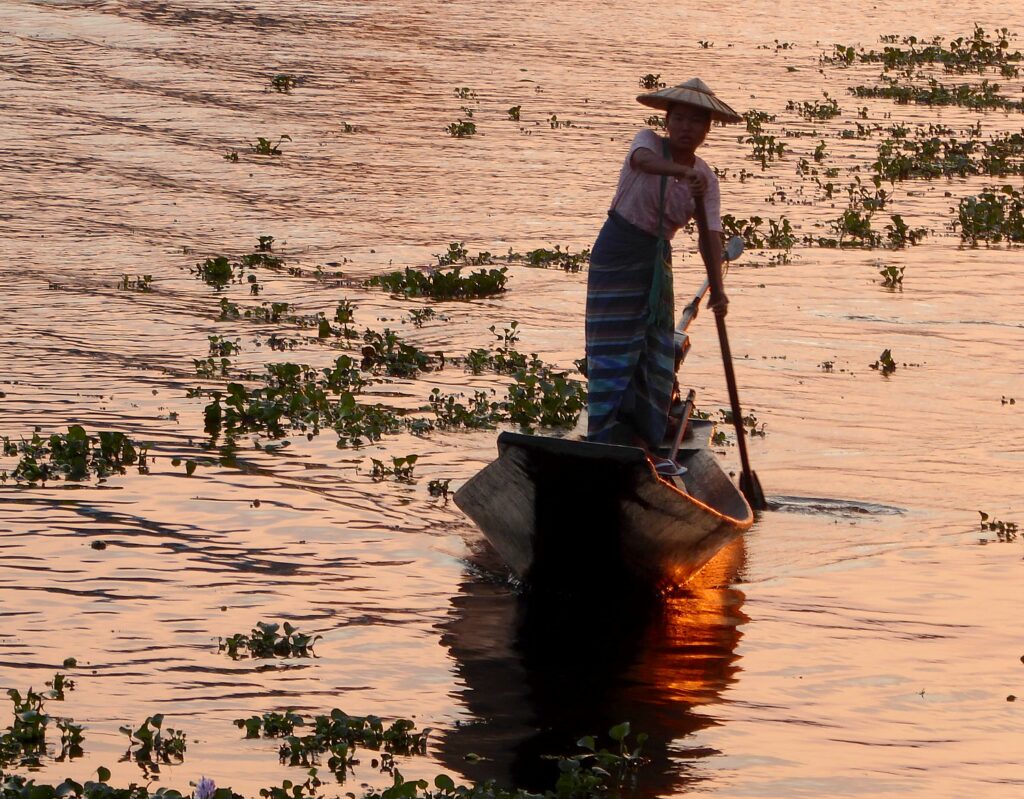
What I’ve noticed during this incredibly brief visit is exactly what GSH’s organizer Bill Chalmers had hoped when he dealt with a question of whether we should be in a place that has earned worldwide condemnation for human rights abuses. Travel is about seeing for yourself, but also gaining an understanding of one another, disabusing stereotypes or caricatures, and most significantly, not seeing others as “other”, which works both ways. In very real ways (and especially now), travelers are ambassadors, no less than diplomats. Boycotting destinations because of their governments, isolating people from one another, cutting off the exchange of ideas and people-to-people engagements is not how change happens – that only hardens points of view, and makes people susceptible to fear-mongering and all the bad things that have happened throughout human history as a result. “See for yourself,” Chalmers tells us.
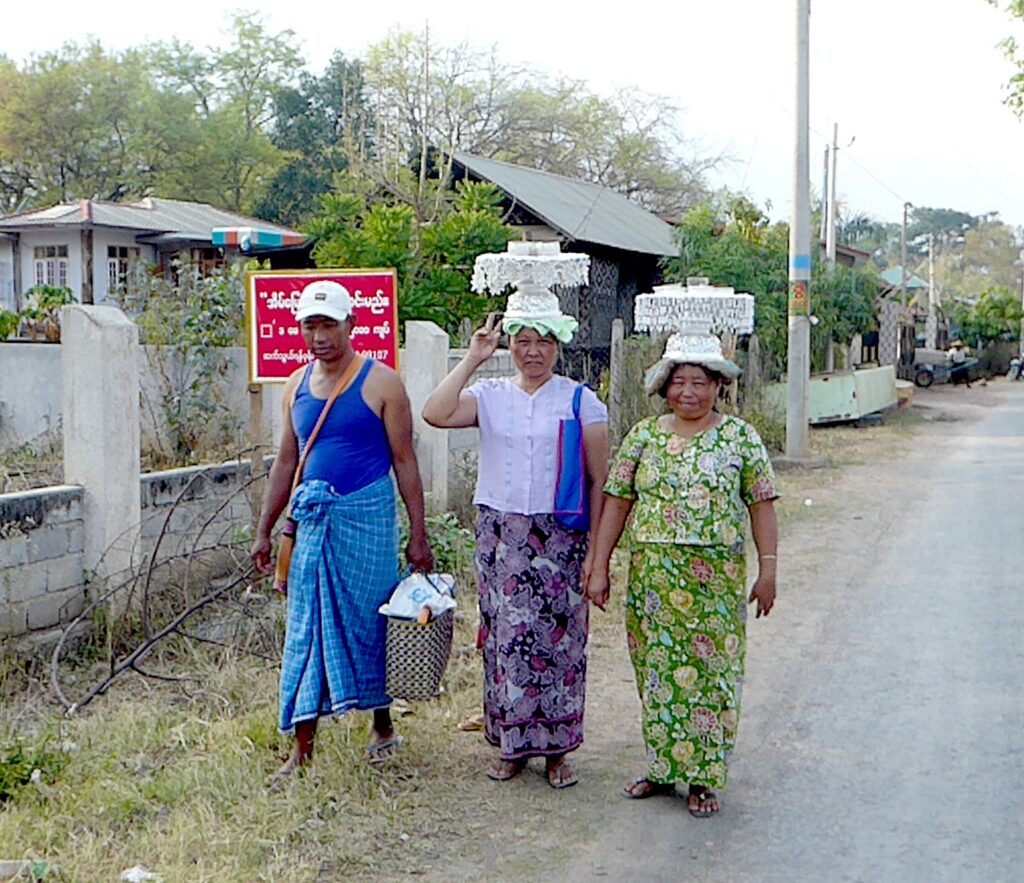
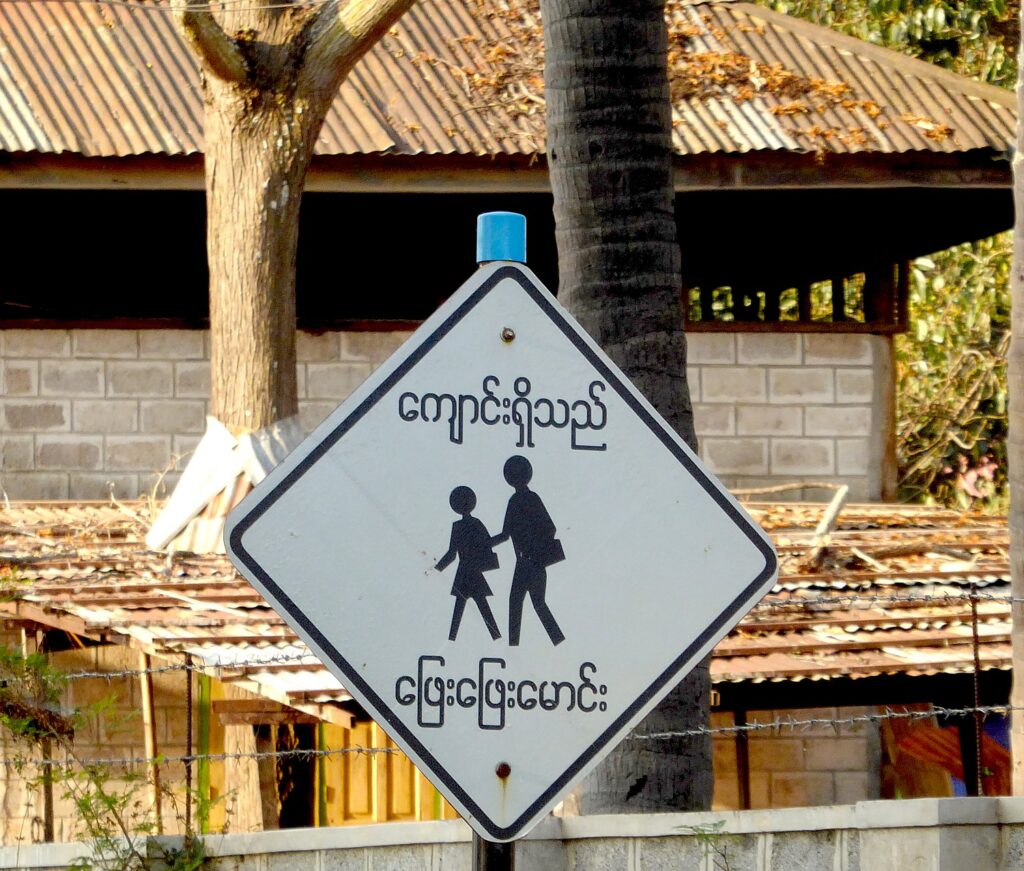
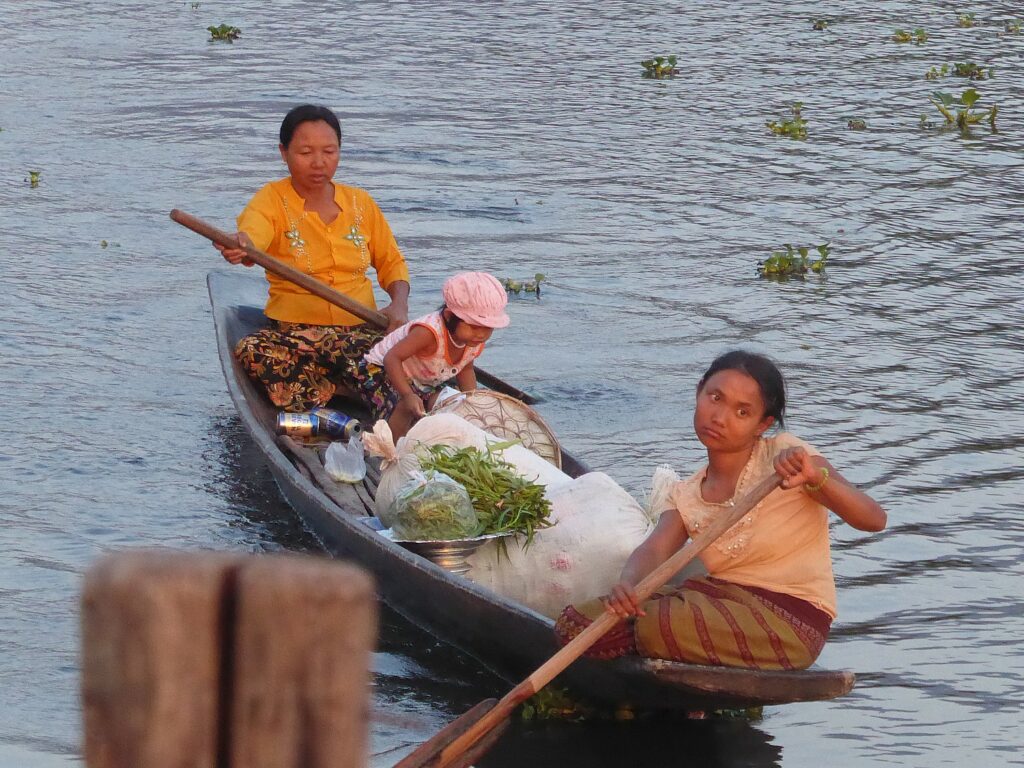
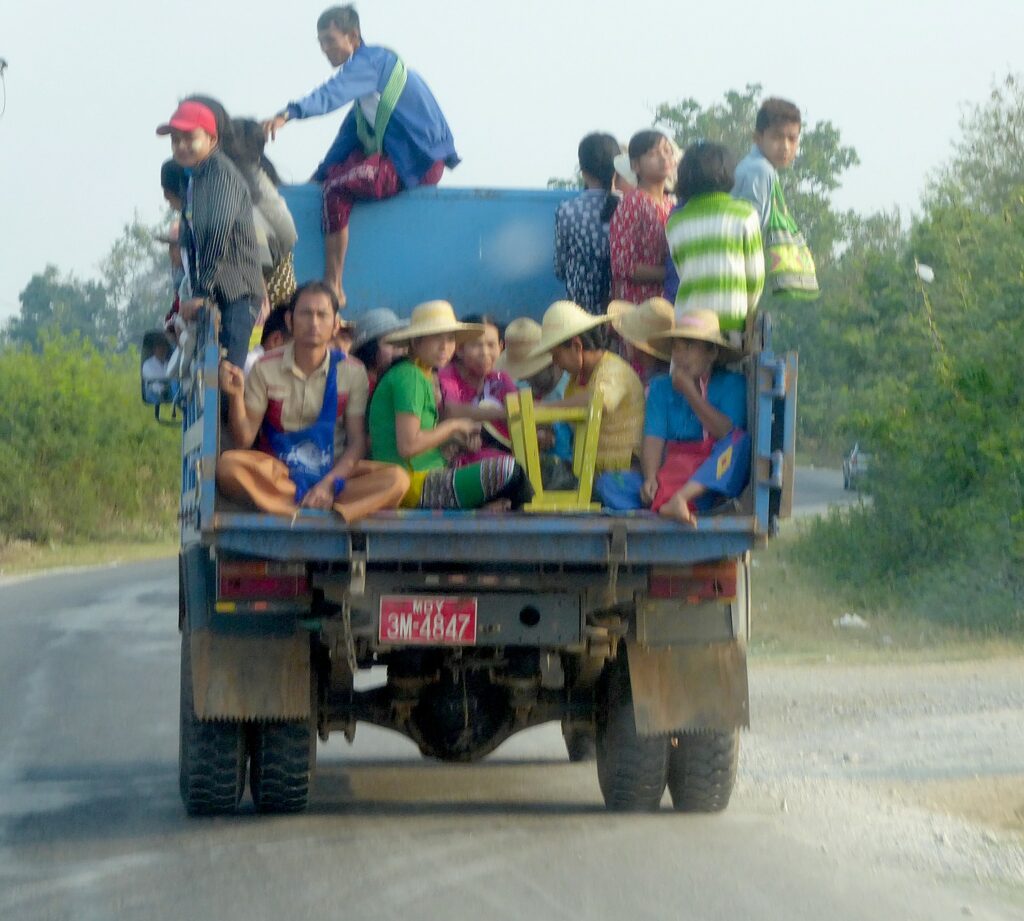
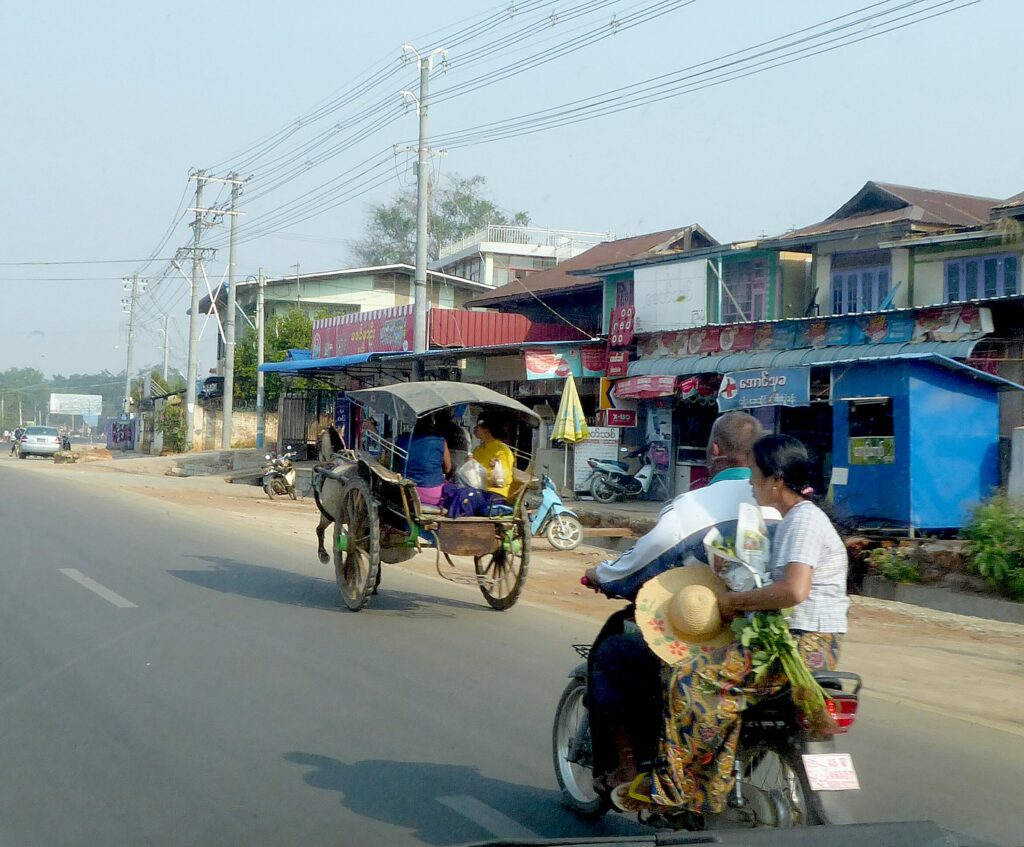
What I see in the people I’ve encountered is a kindness, a warmth of spirit, a sweetness among the people here. I see it in how parents hold their children, how the boatman, Wei Moi, shows such etiquette among the other boatmen, how helpful people are. And how readily they smile.
This leg has been a Par 5 in difficulty (Par 6 being the most difficult during this, the 15th Global Scavenger Hunt) – which has entailed us going out of Yangon to Bagan, Mandalay and/or Inle Lake (many more rules on top of that, including no more than 2 flights), taking overnight bus or hiring a taxi or train, and so forth. But Chalmers devious design has worked – in just these four days, we really do immerse ourselves in Myanmar, though our itinerary most properly should be done in 11 days (there are several operators who offer such trips).
The challenge of the Global Scavenger Hunt is important to mention because Inle Lake is worth at least a two or three day stay to be completely immersed in its spell. There is a tremendous amount to do and experience.
You can reach Inle Lake by air, bus (Joyous Journey Express, known as JJ Express, provided excellent service; travel on the first-class bus geared to tourists, www.jjexpress.net), or hire a driver to Inle Lake from various other major destinations in Myanmar (Bagan, Mandalay, Yangon). The closest airport to Inle Lake is Heho airport (HEH) which is 45 minutes away from the lake.
The final challenge of this leg is to get back to our hotel, the Sule Shangri-la, in Yangon by 6 pm, and for those competing to hand in their scorecards and proof of completing the scavenges. That’s when we will learn where in the world we will go next, and where we will all compare experiences.
See more travel information, http://myanmartravelinformation.com/where-to-visit-inle/.
The Global Scavenger Hunt is an annual travel program that has been operated for the past 15 years by Bill and Pamela Chalmers, GreatEscape Adventures, 310-281-7809, GlobalScavengerHunt.com.
________
© 2019 Travel Features Syndicate, a division of Workstyles, Inc. All rights reserved. Visit goingplacesfarandnear.com, www.huffingtonpost.com/author/karen-rubin, and travelwritersmagazine.com/TravelFeaturesSyndicate/. Blogging at goingplacesnearandfar.wordpress.com and moralcompasstravel.info. Send comments or questions to [email protected]. Tweet @TravelFeatures. ‘Like’ us at facebook.com/NewsPhotoFeatures
